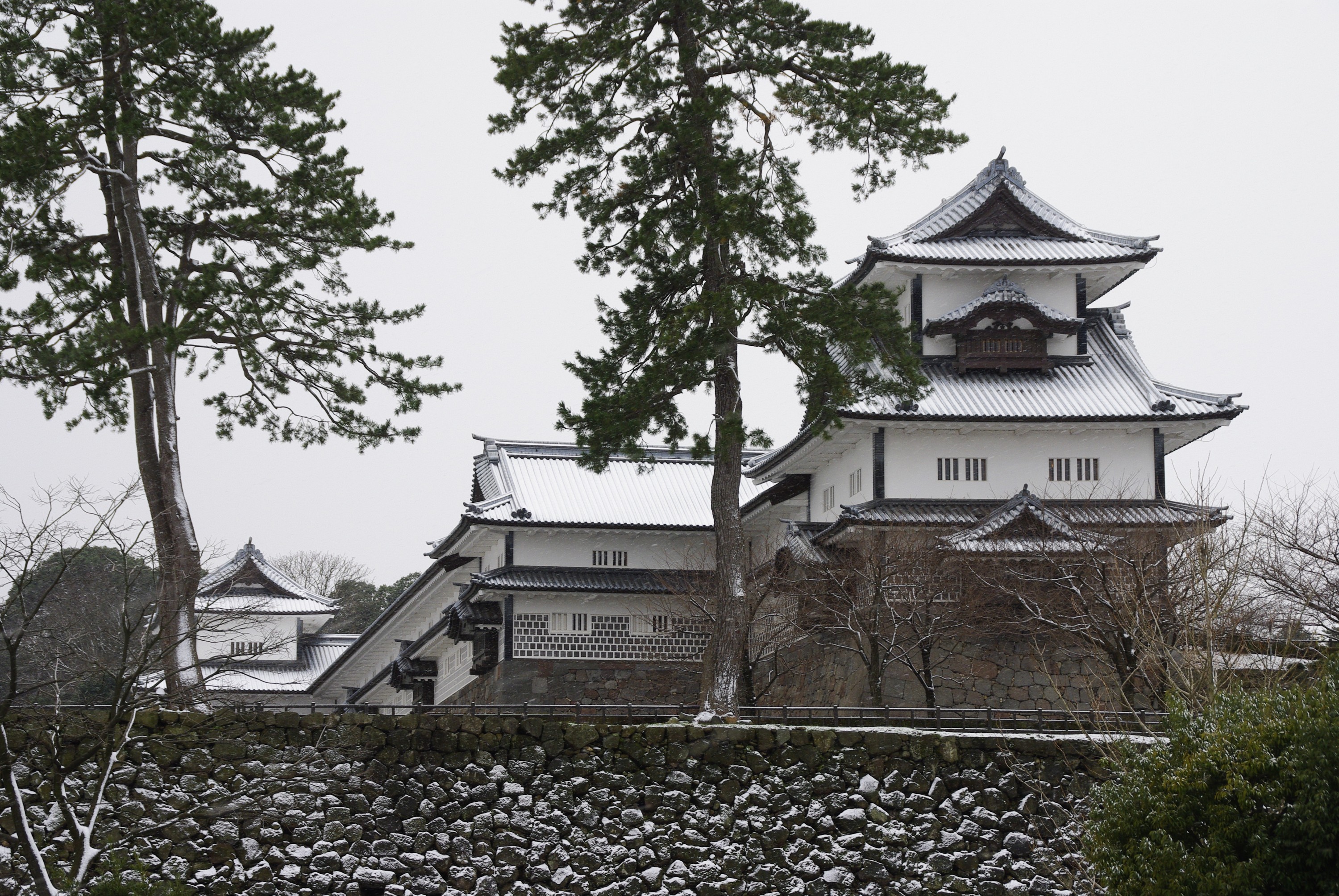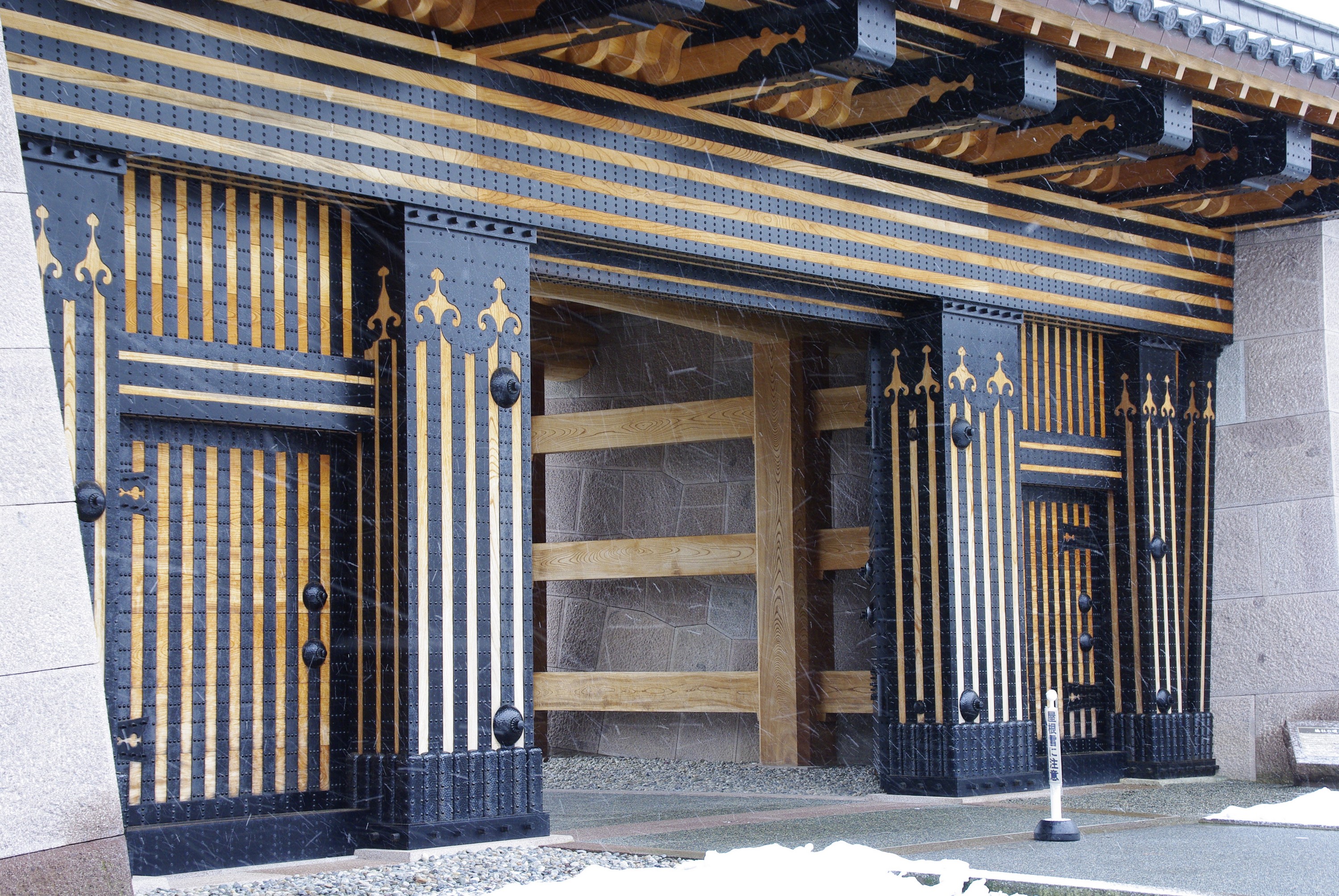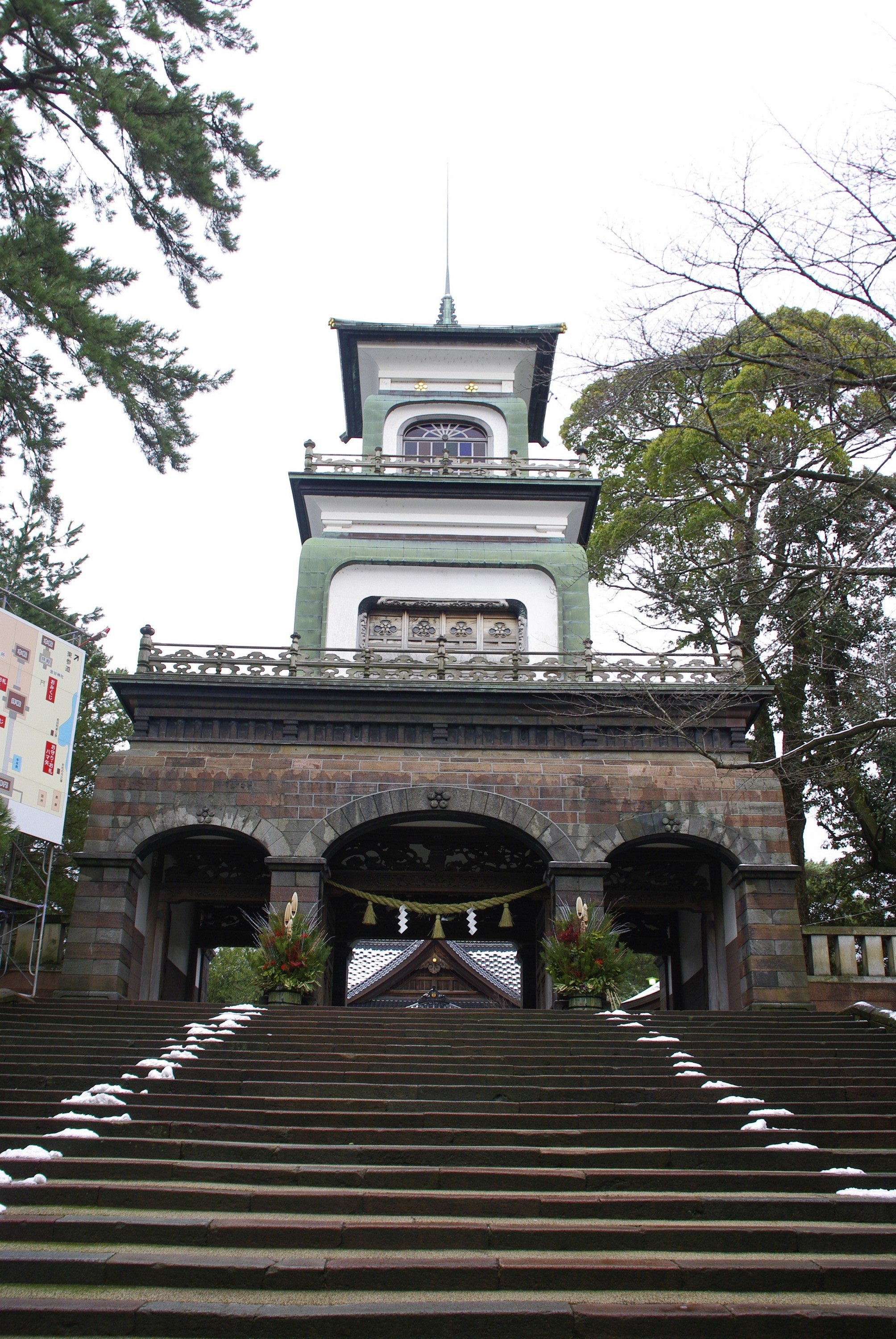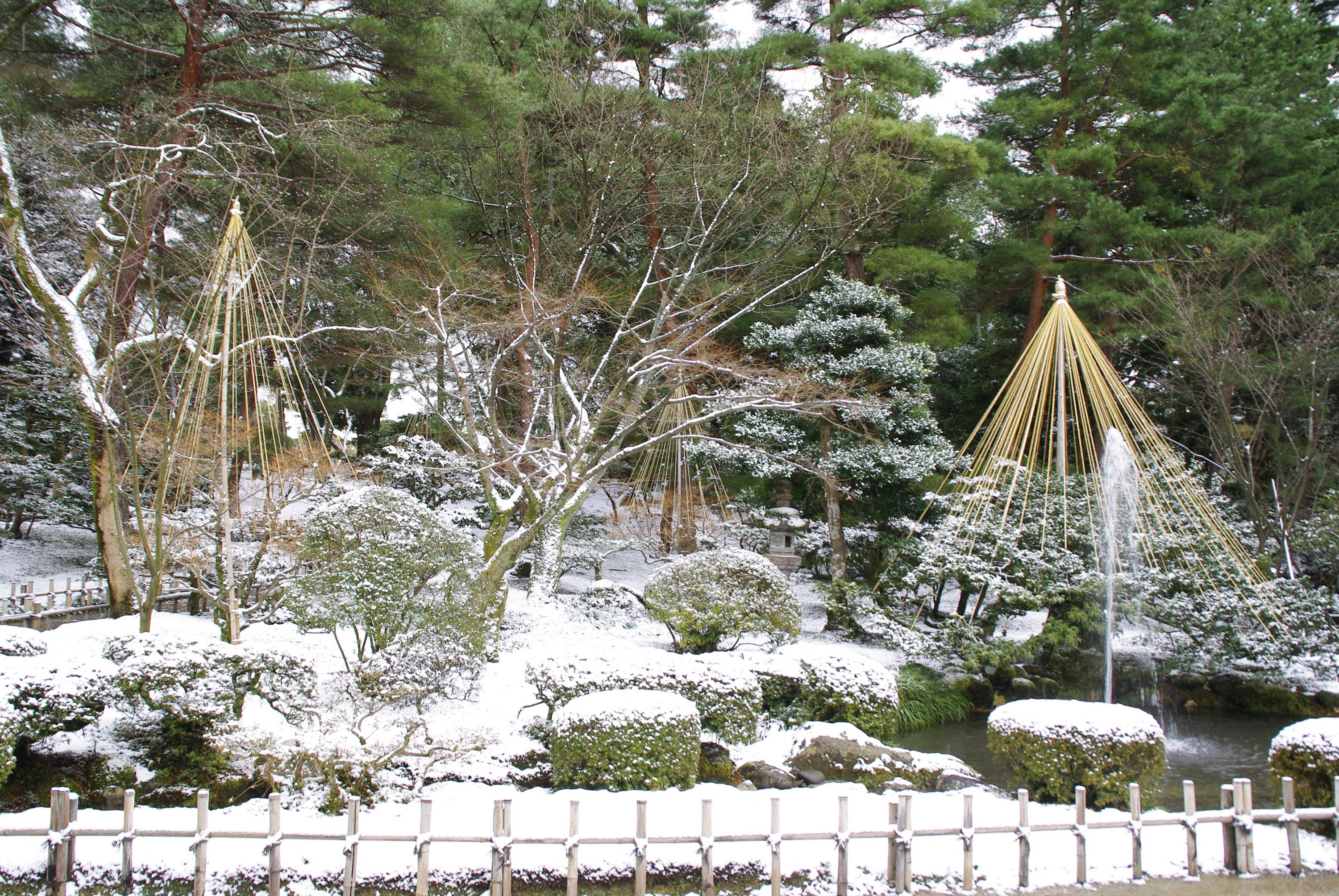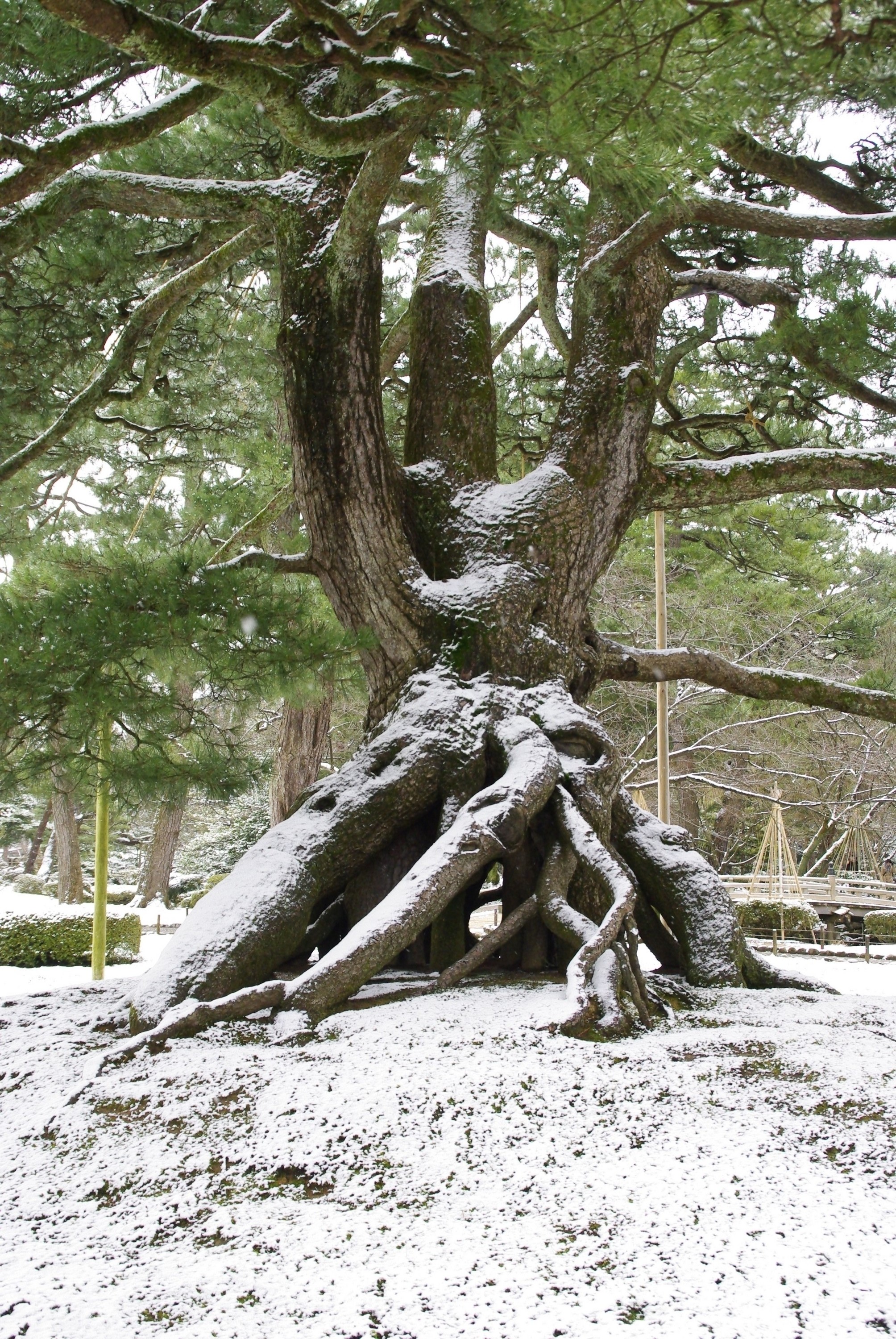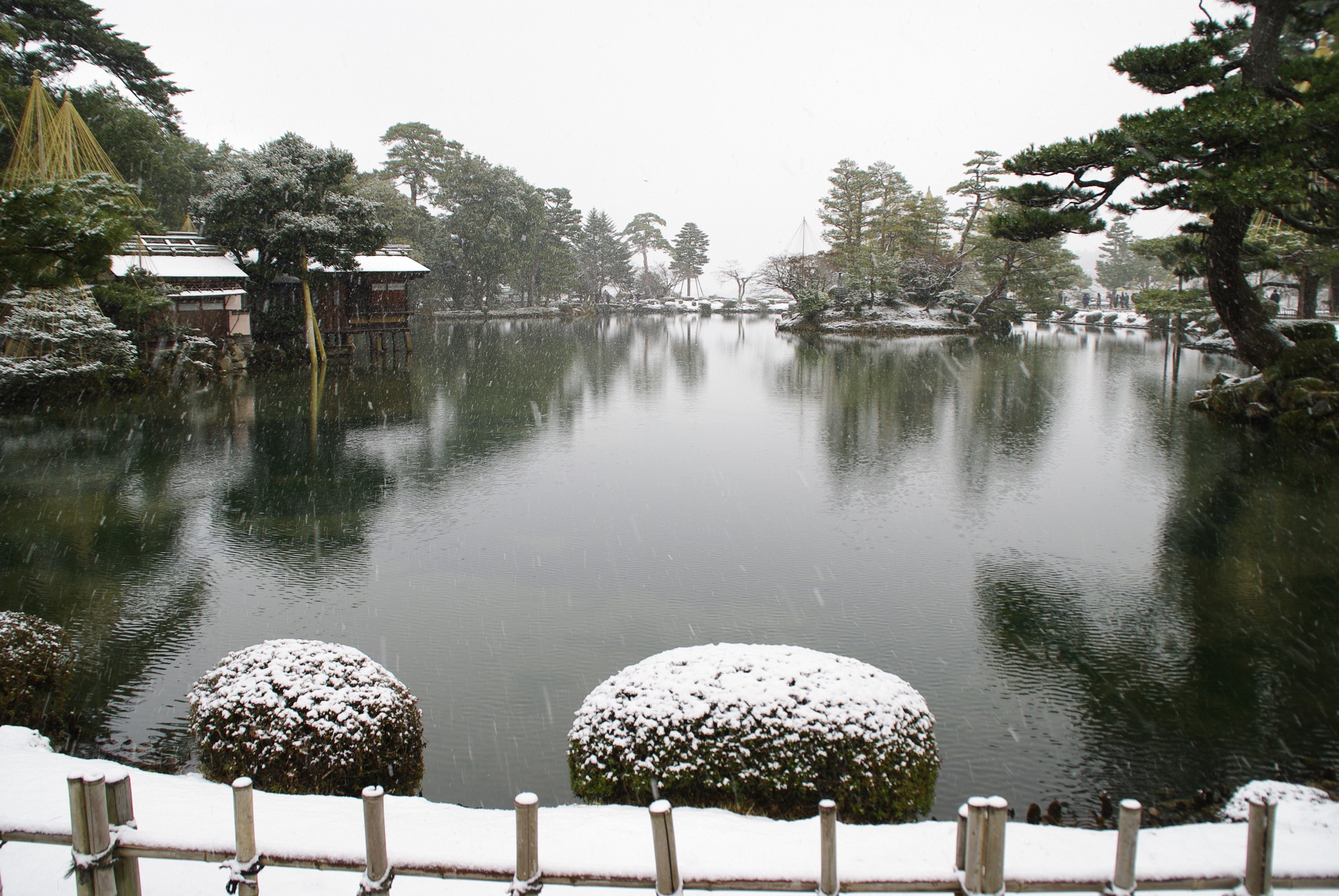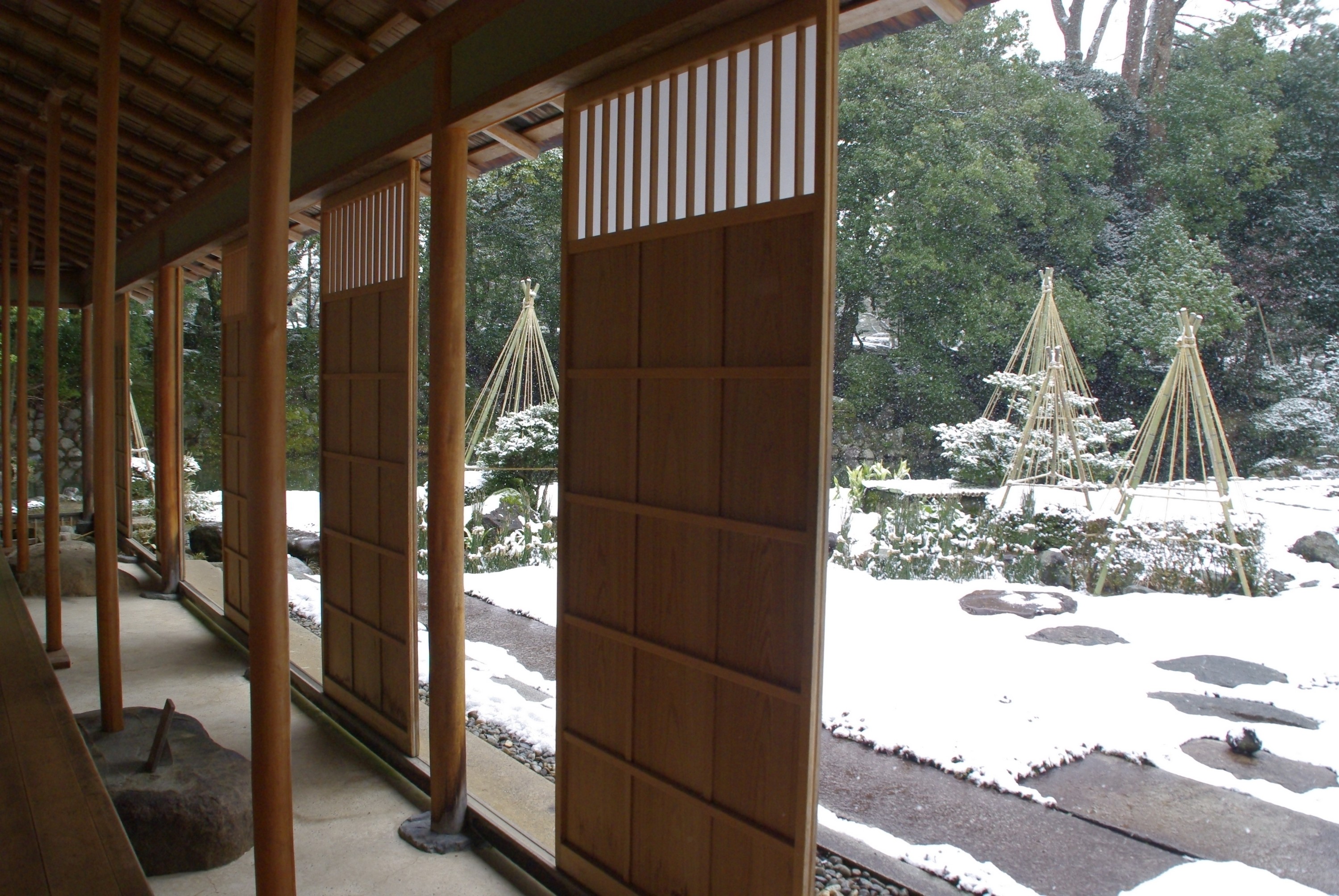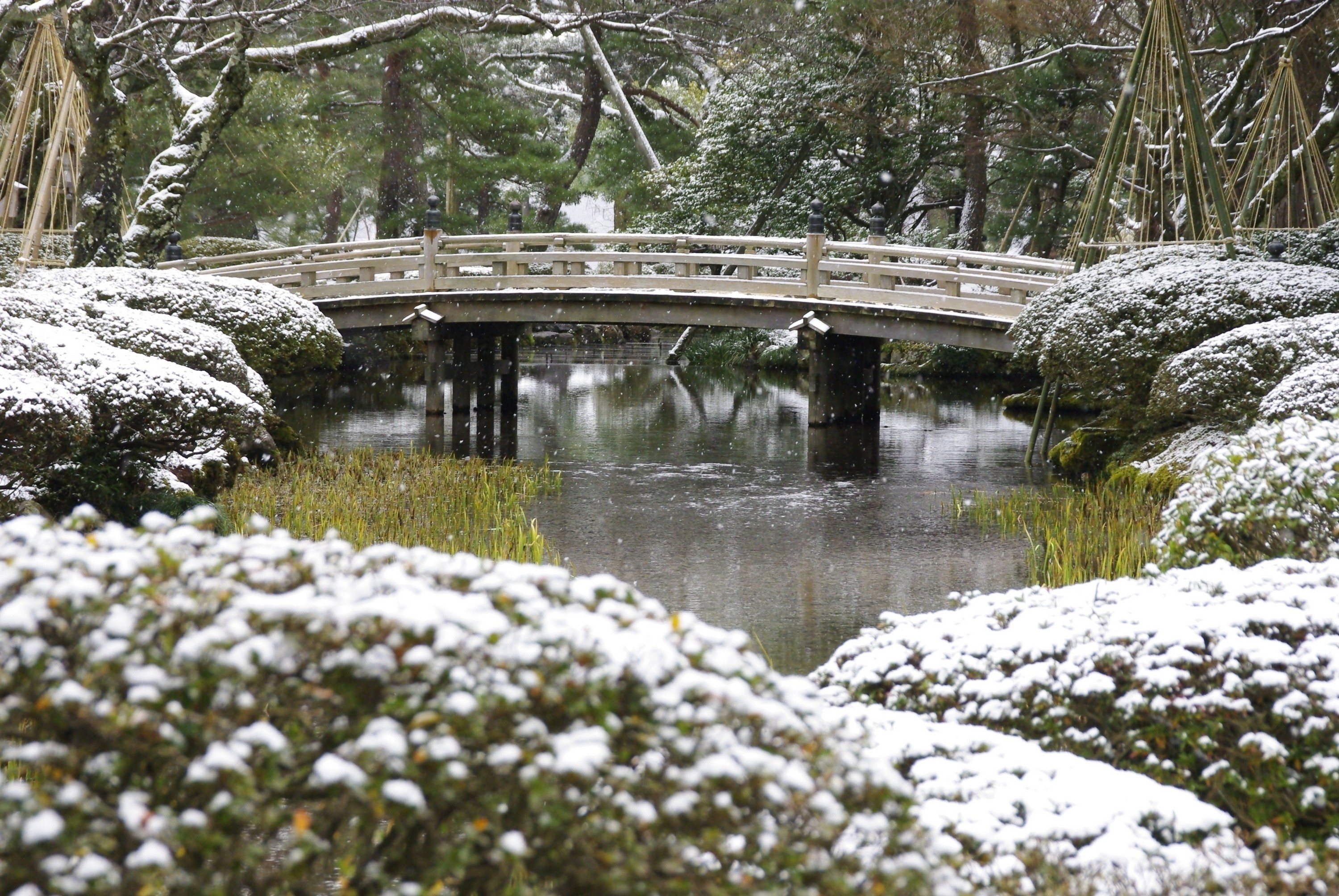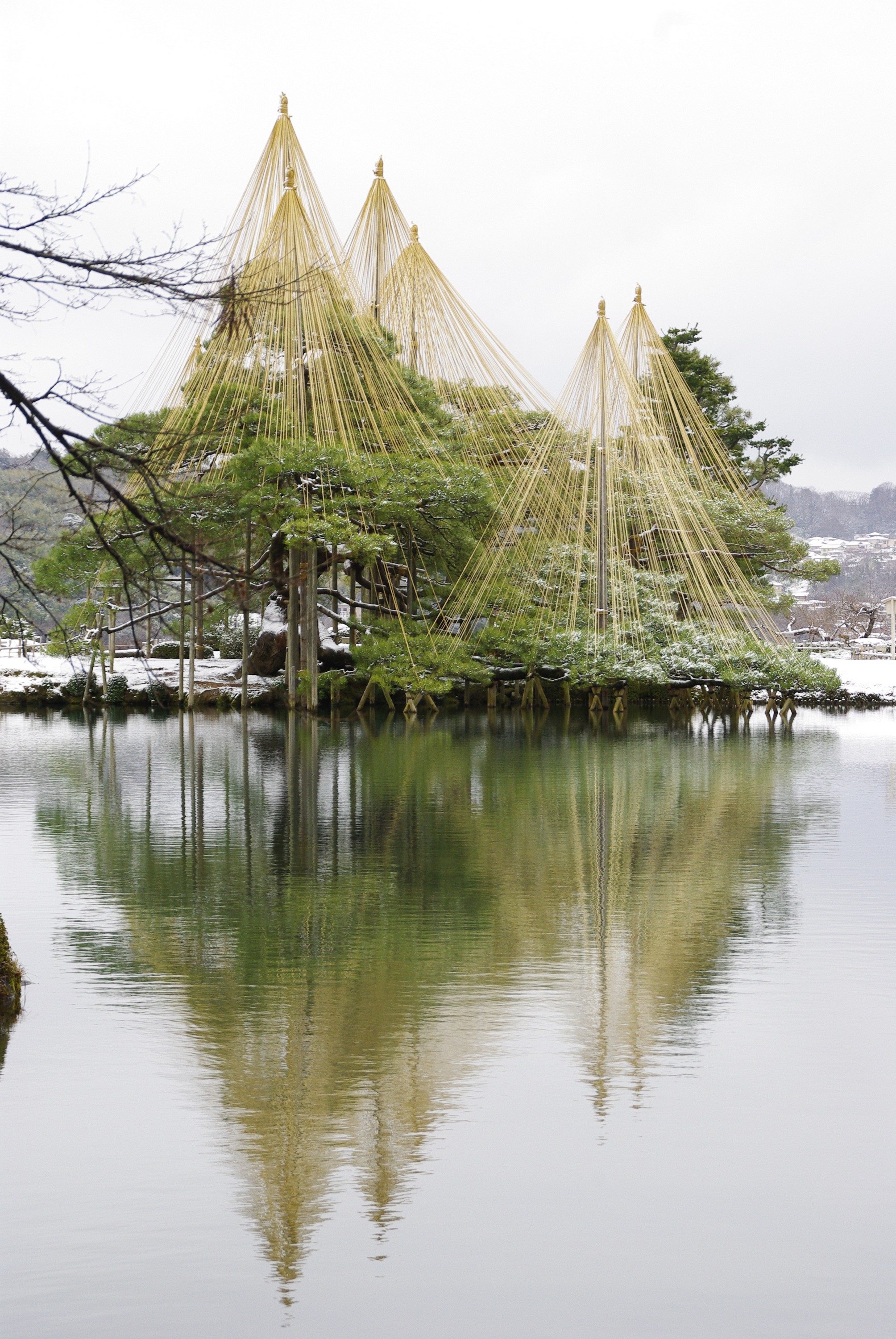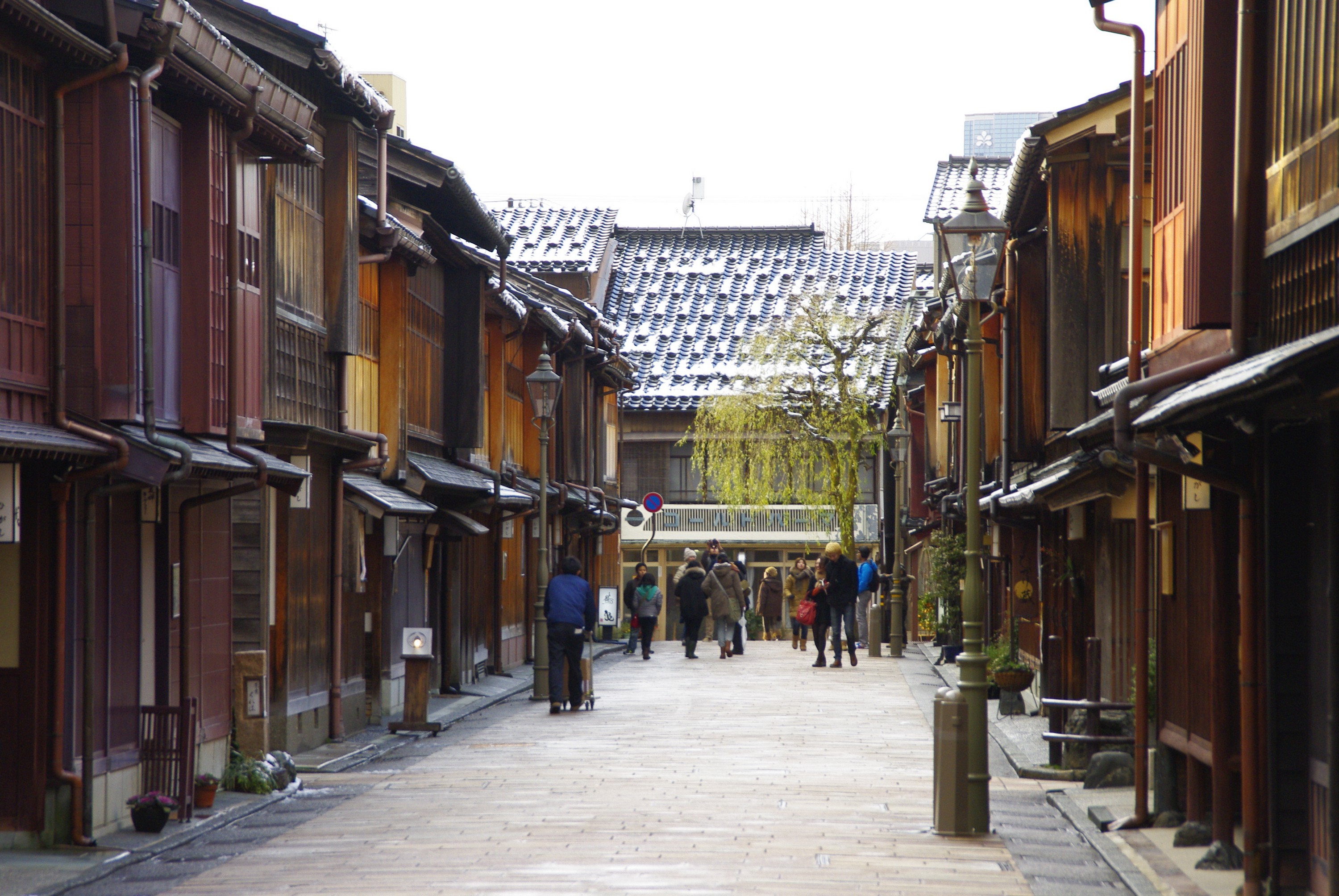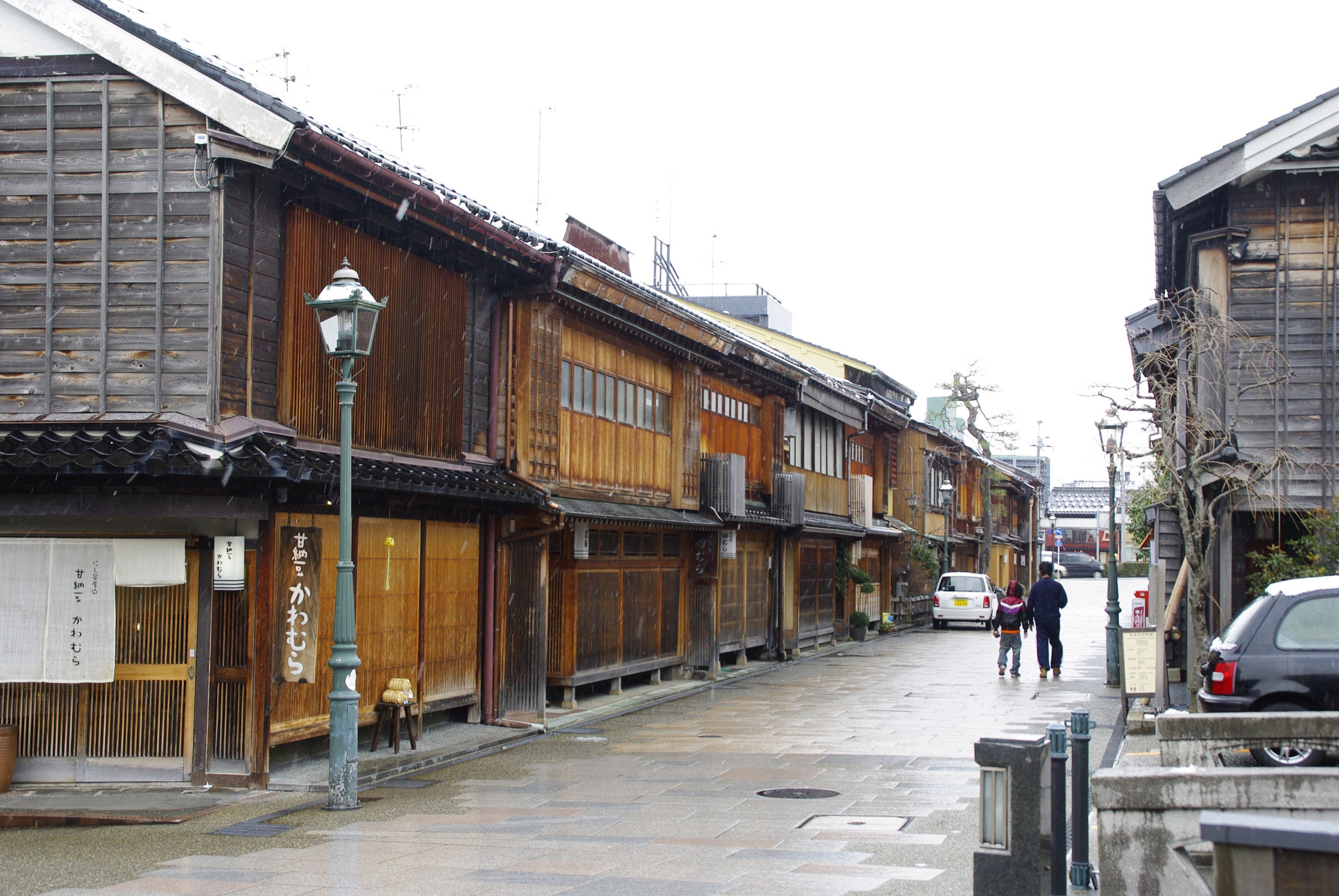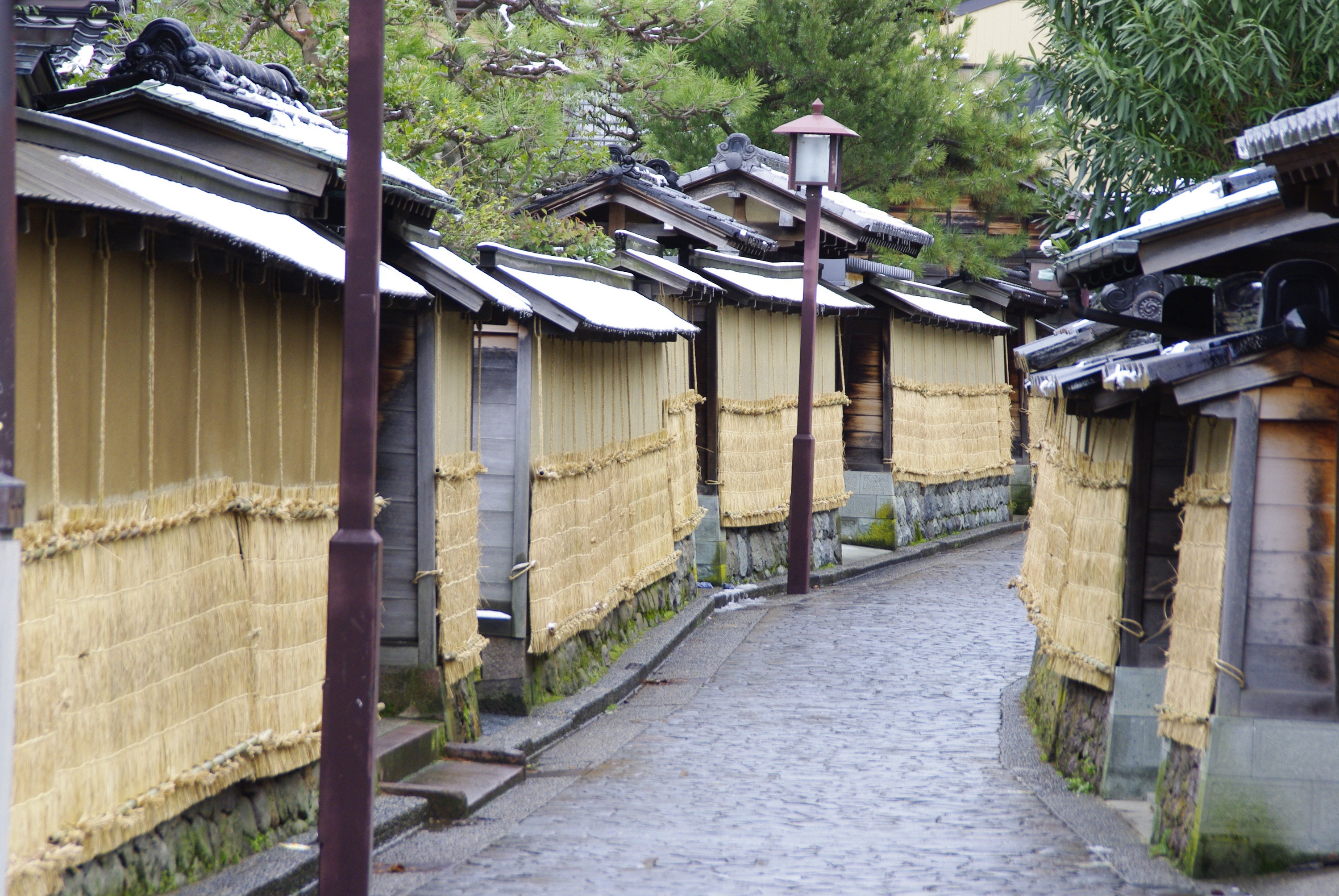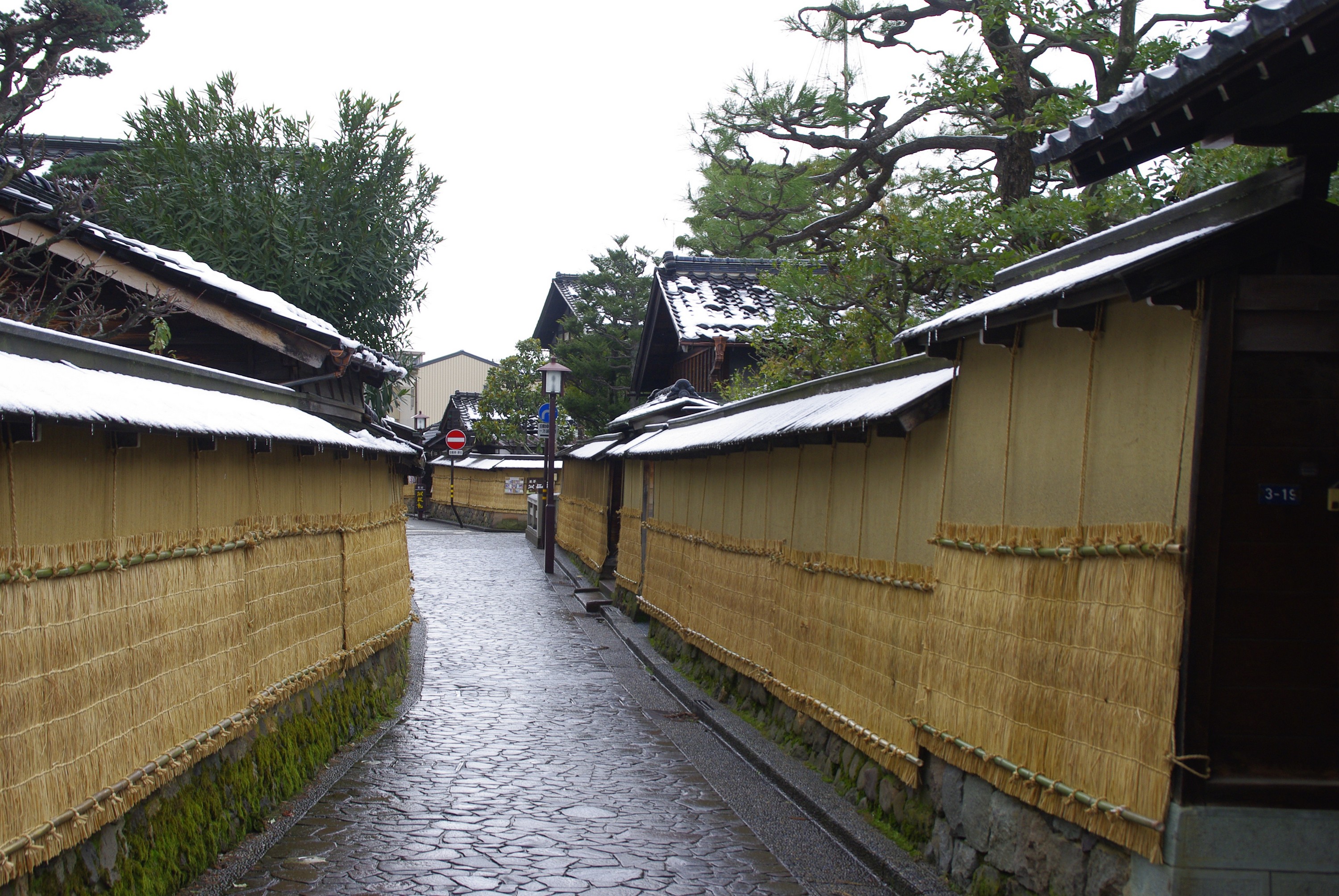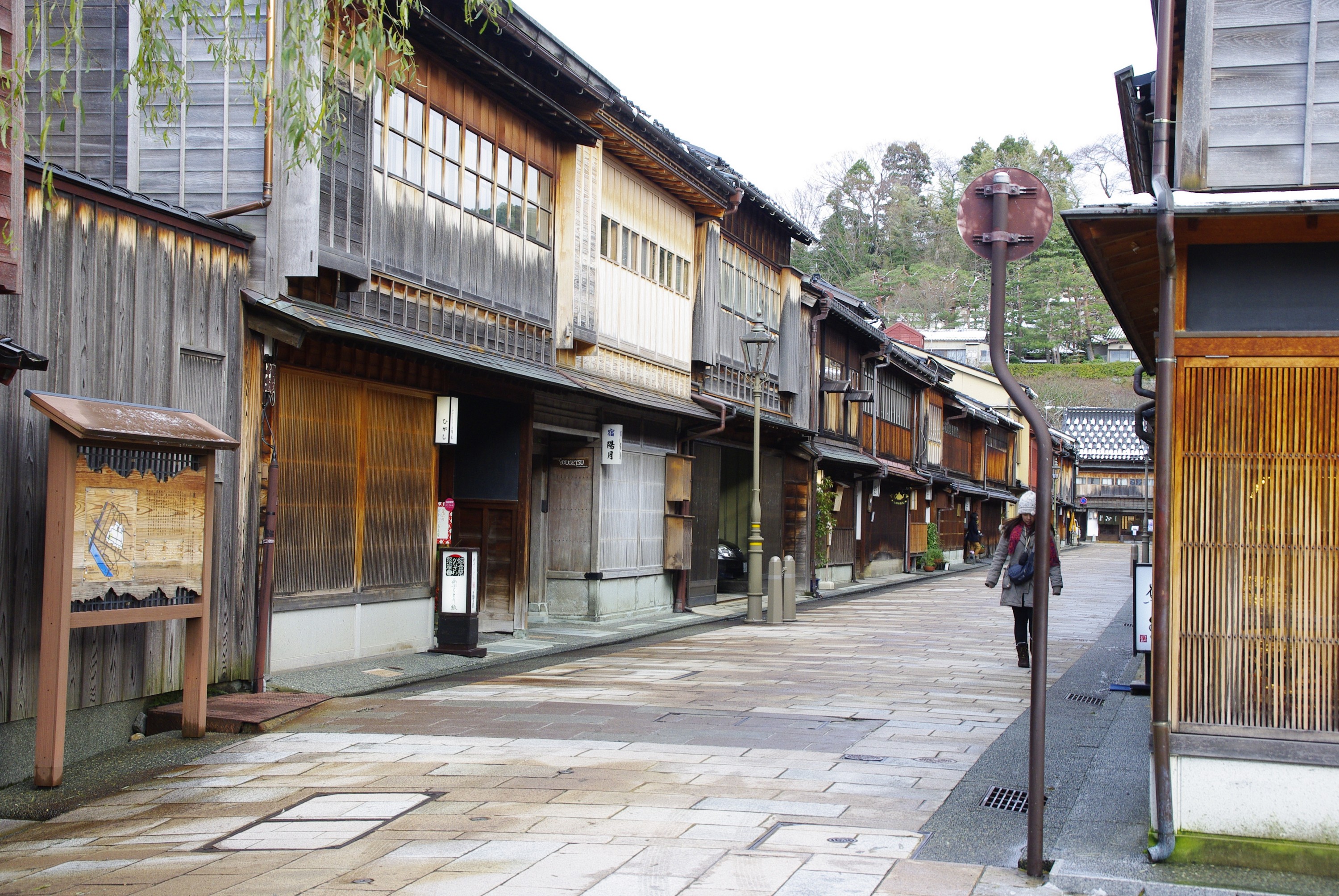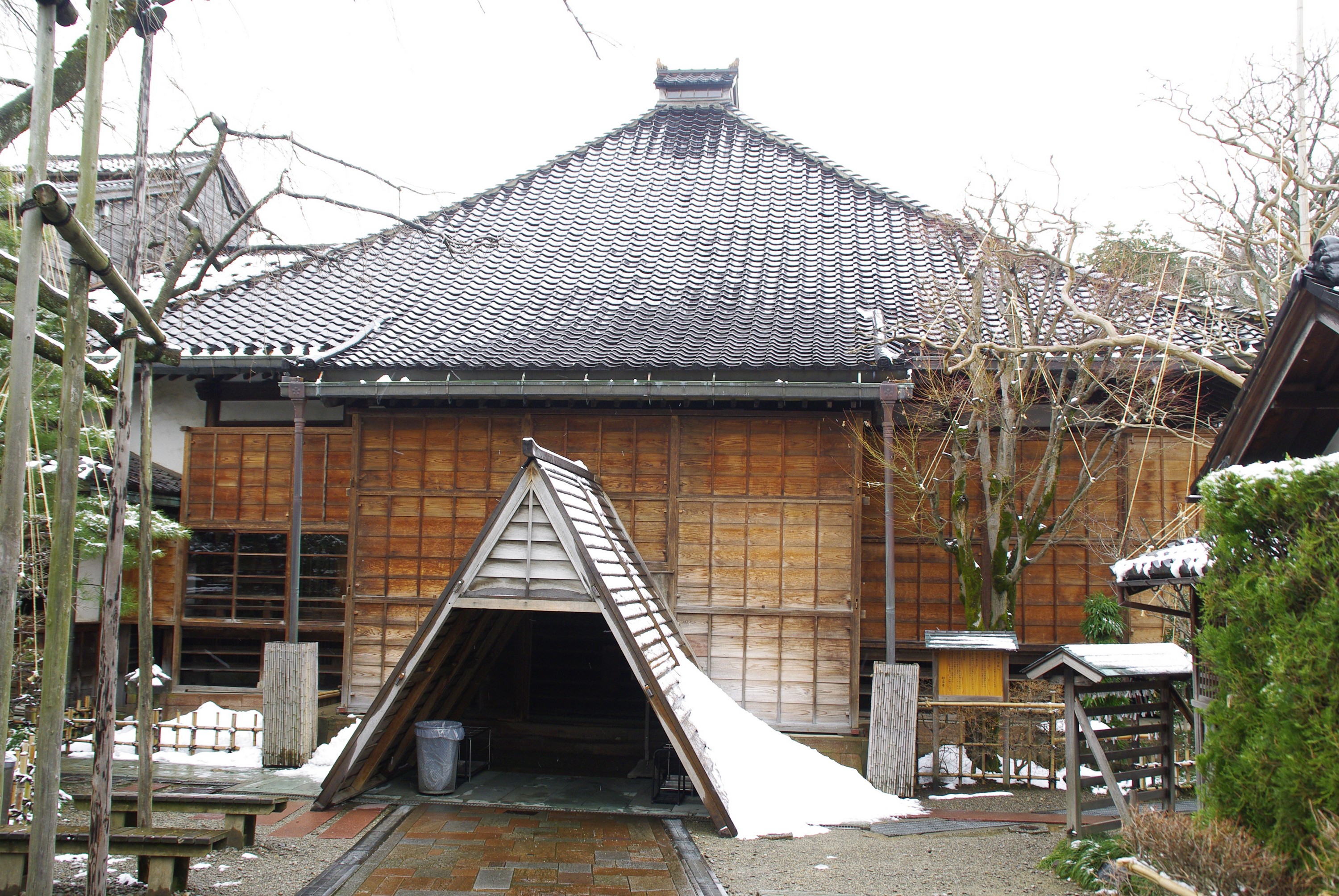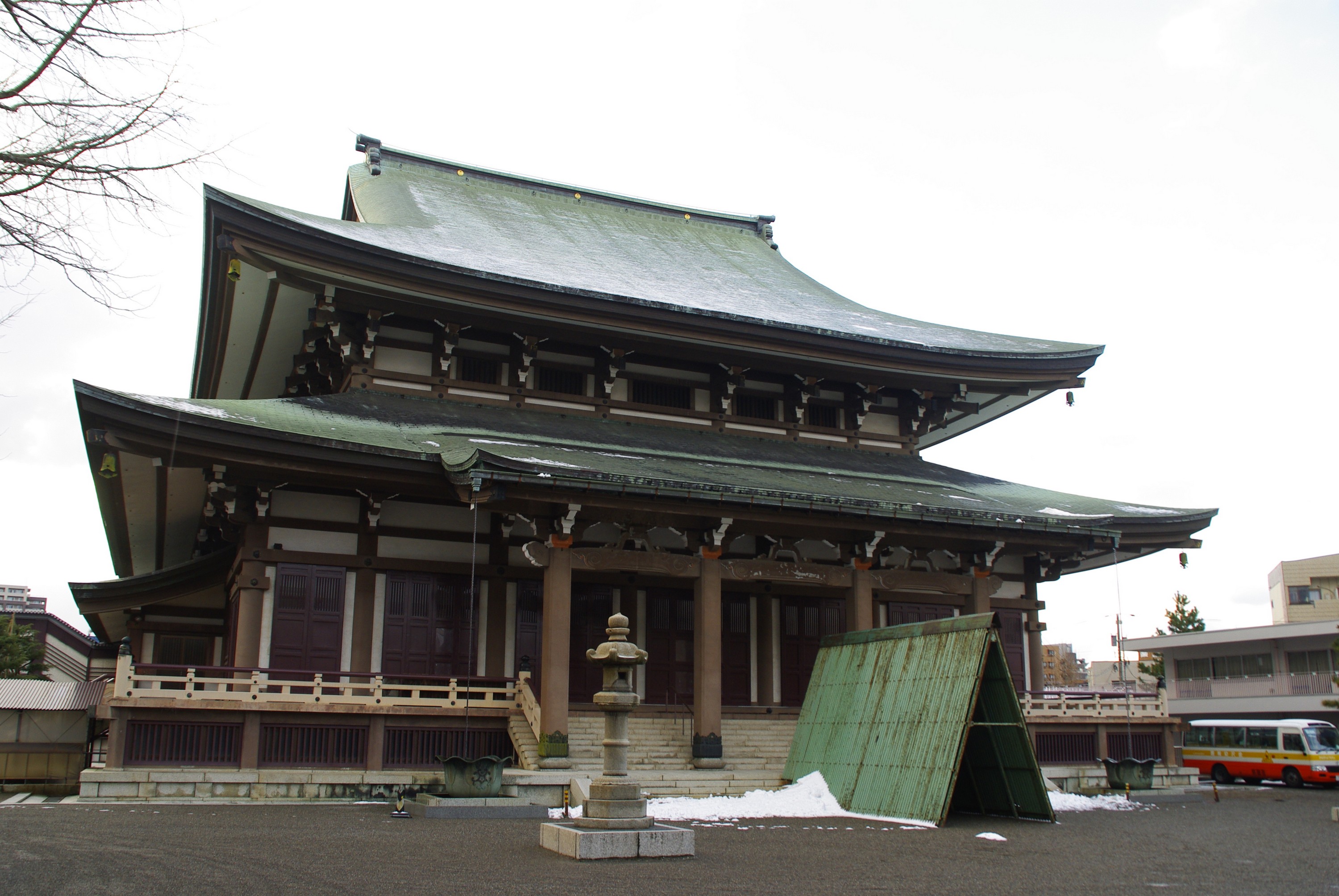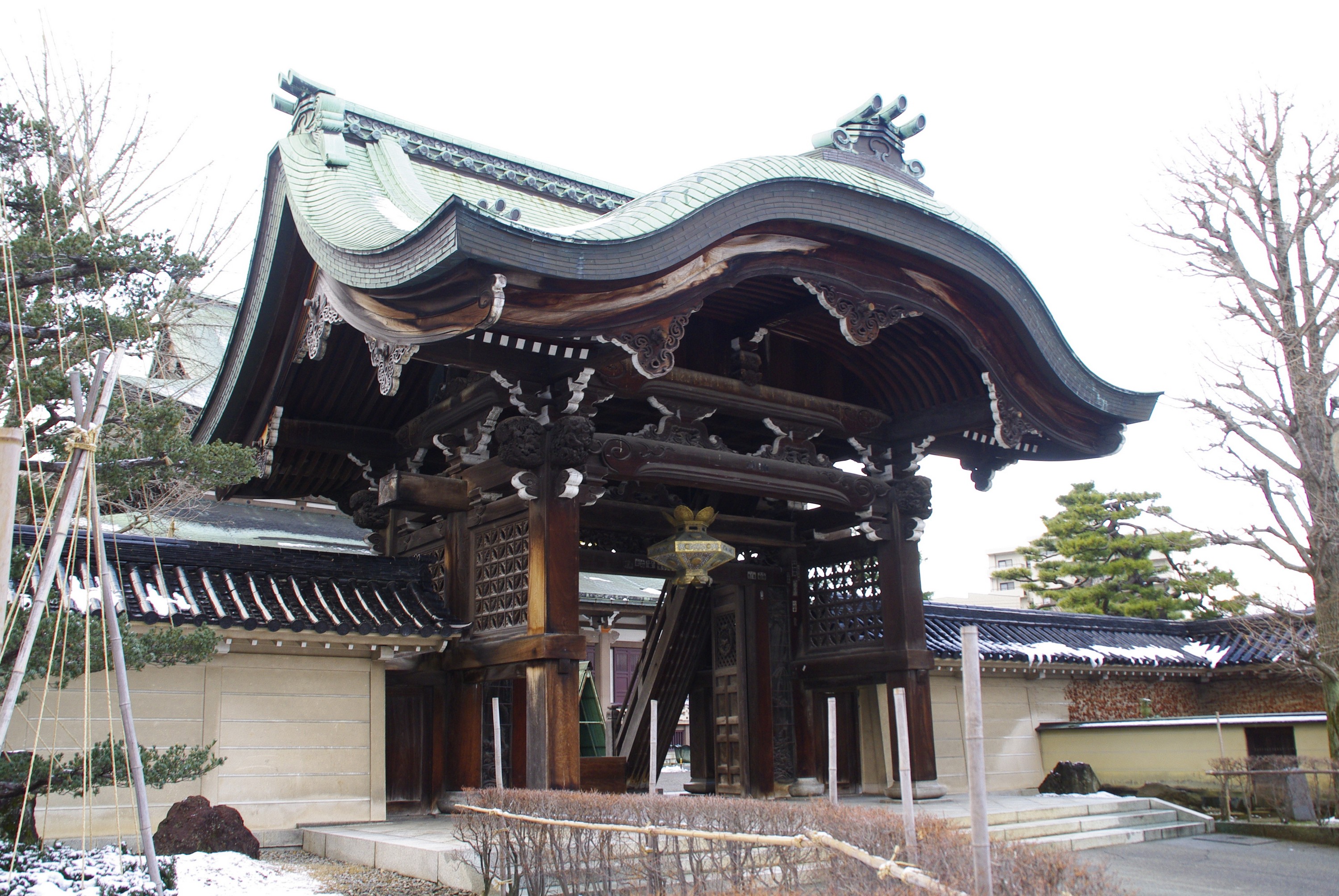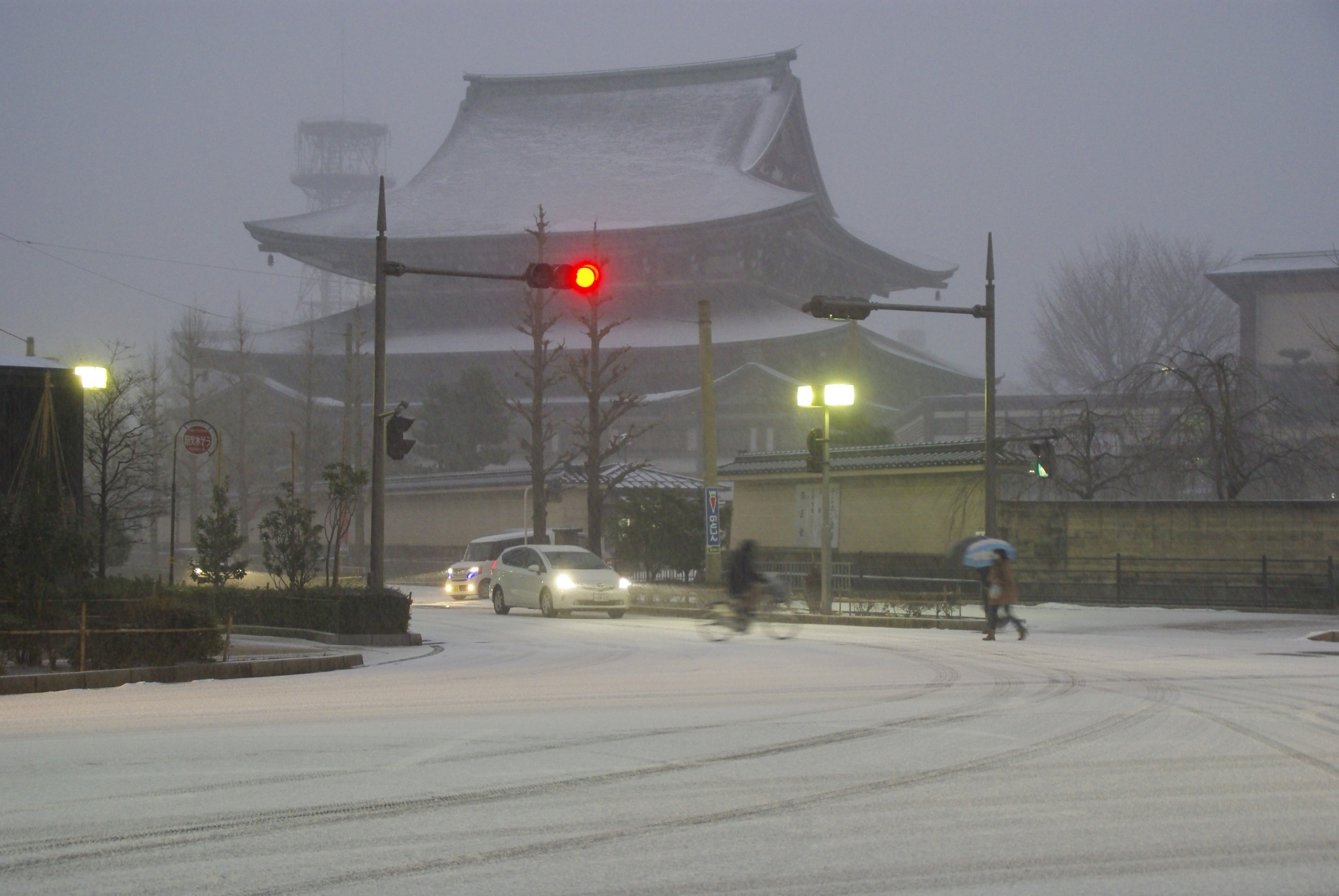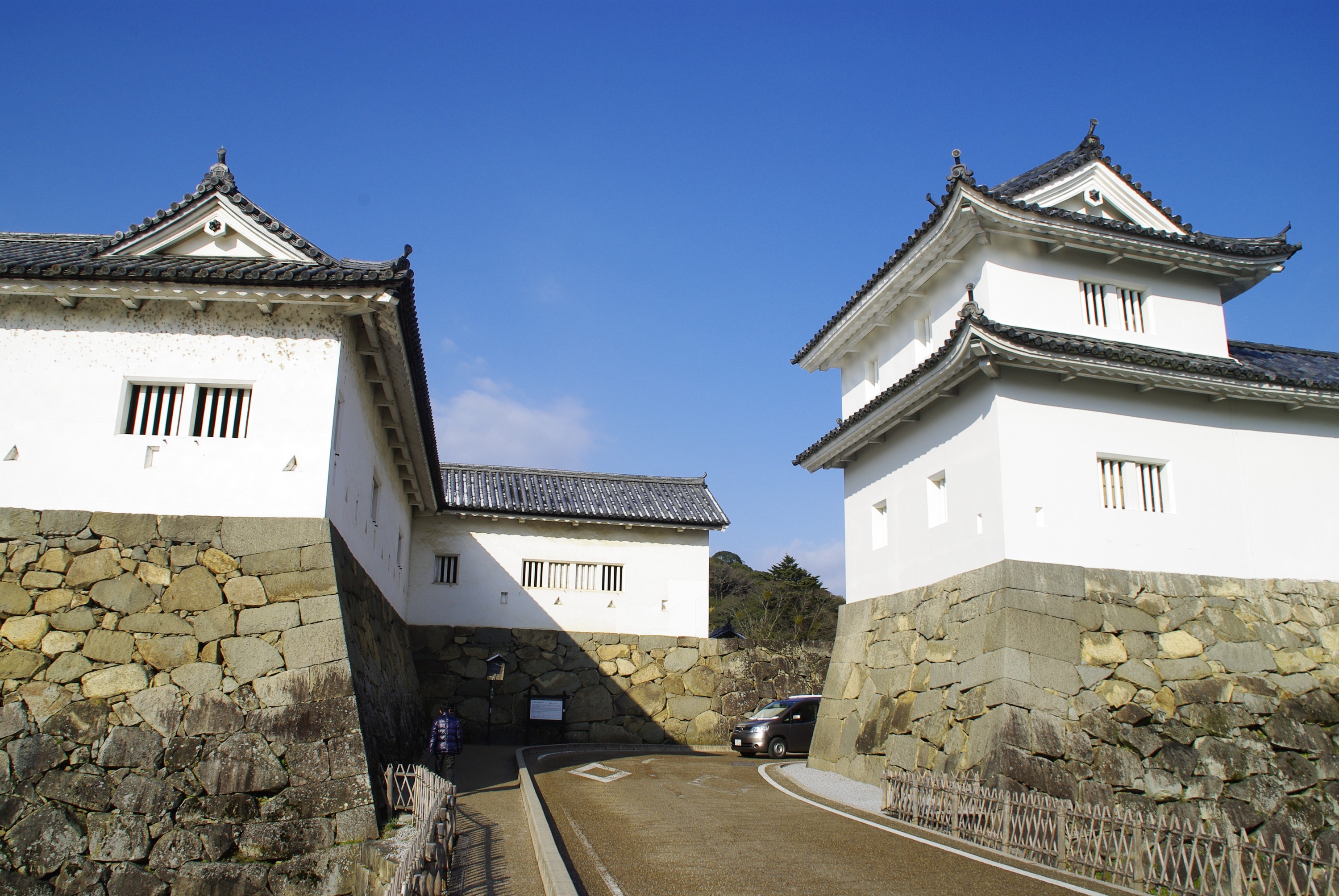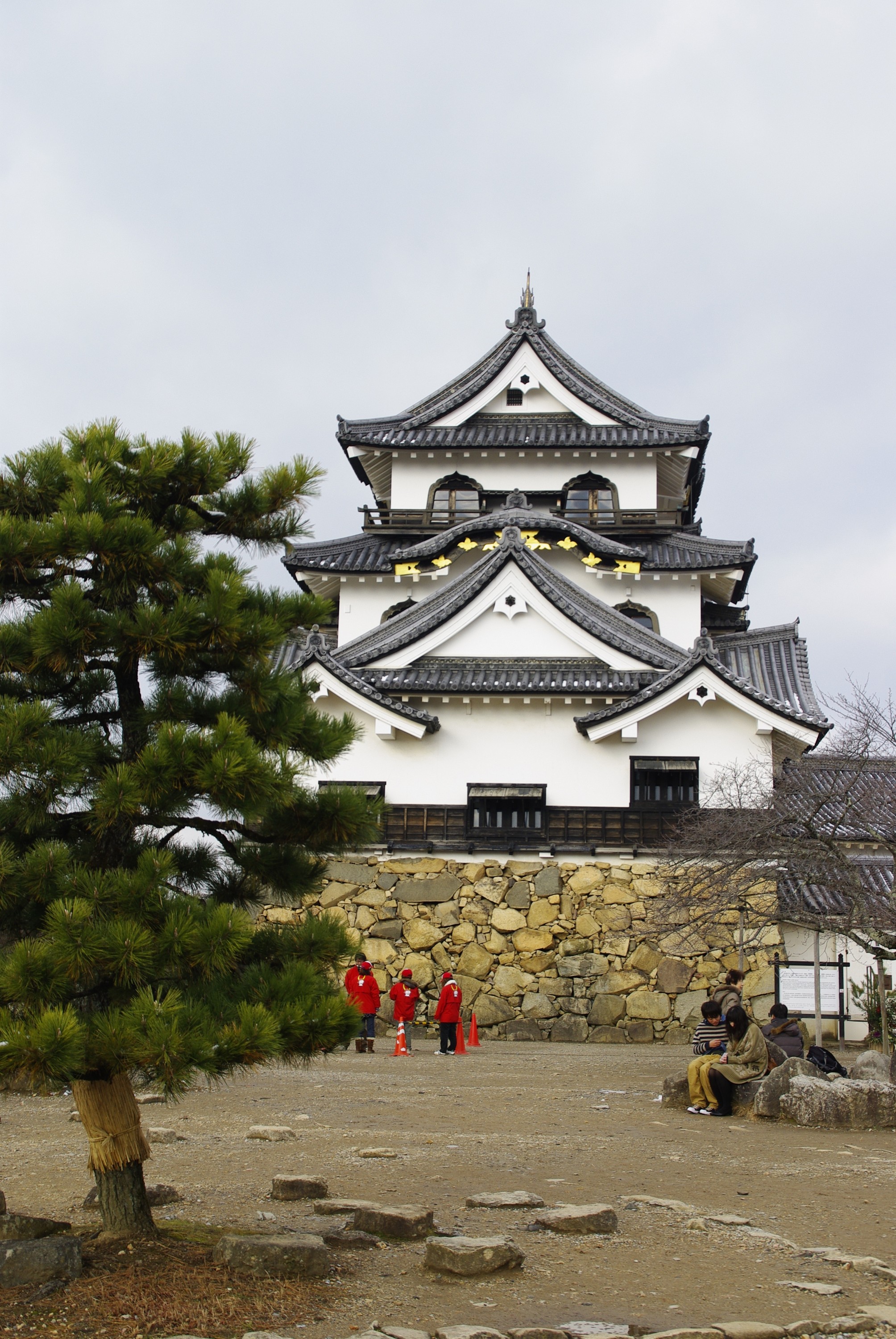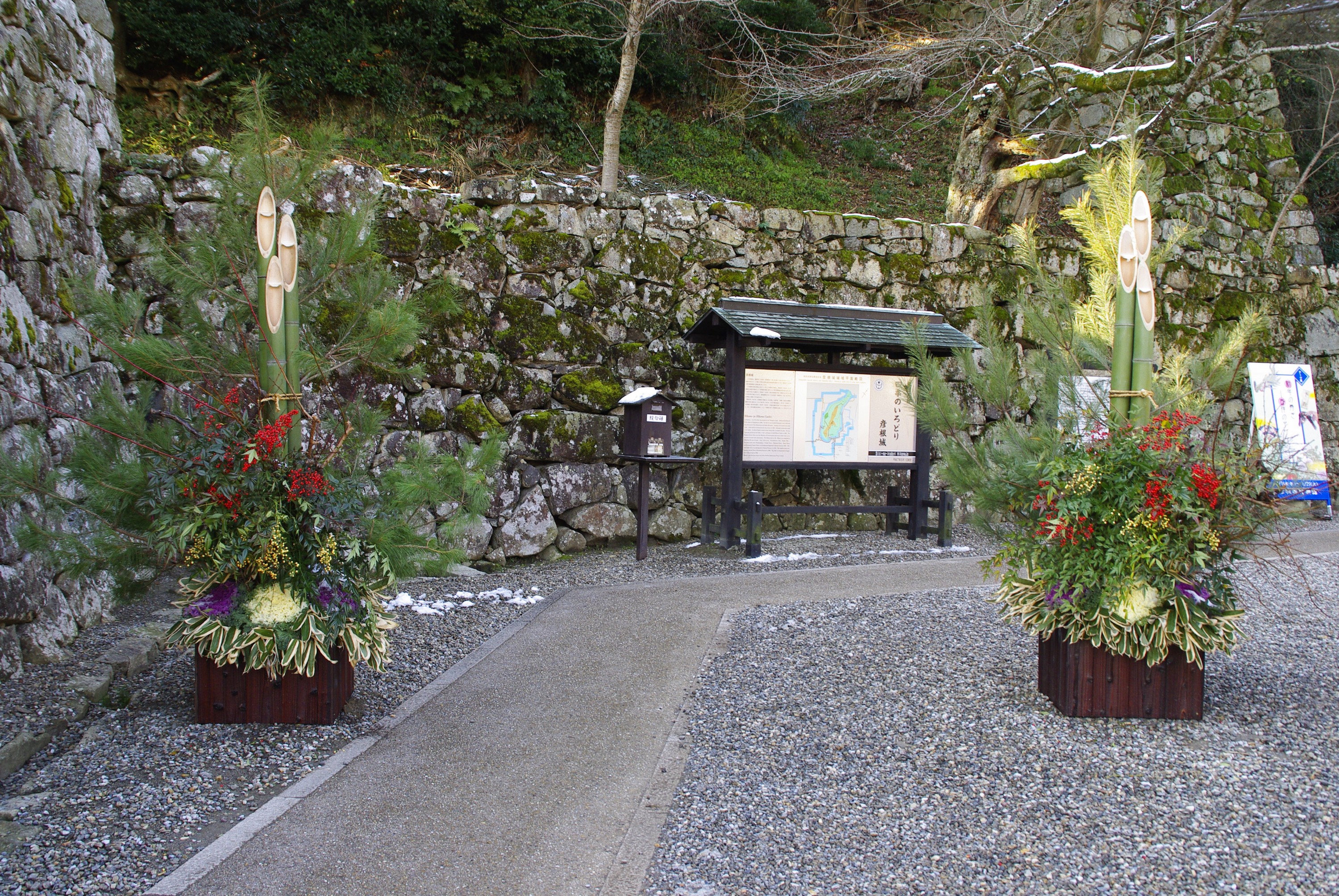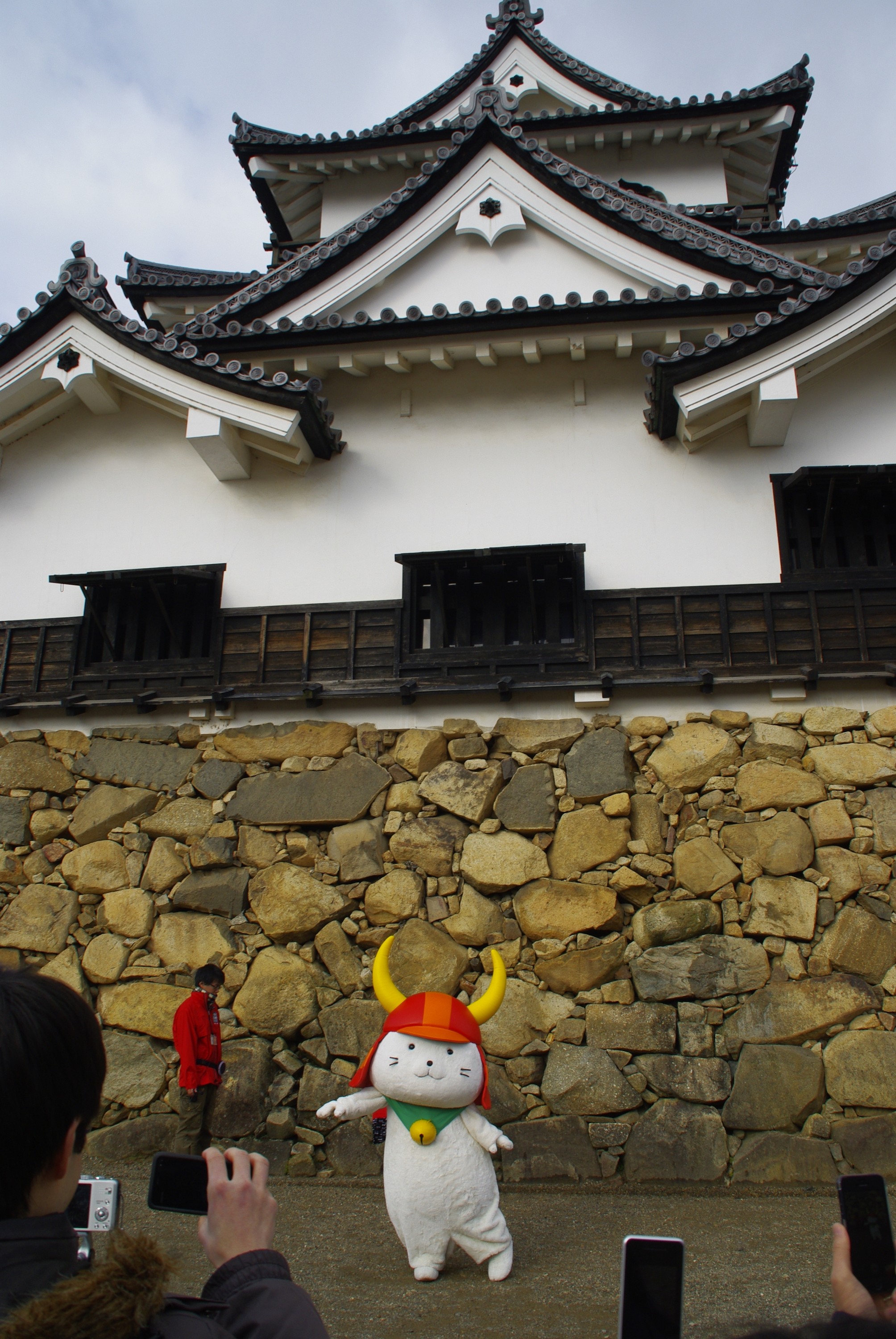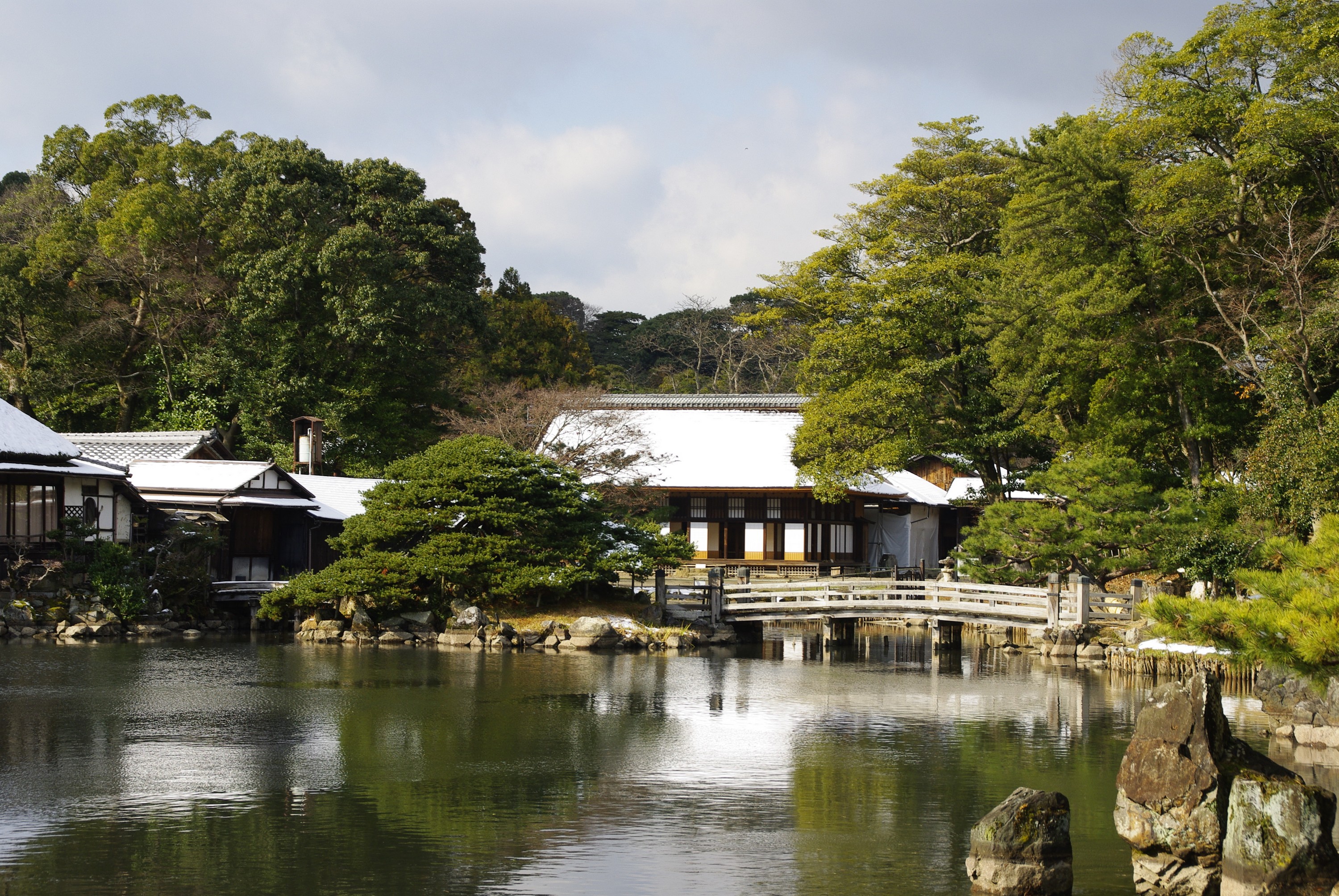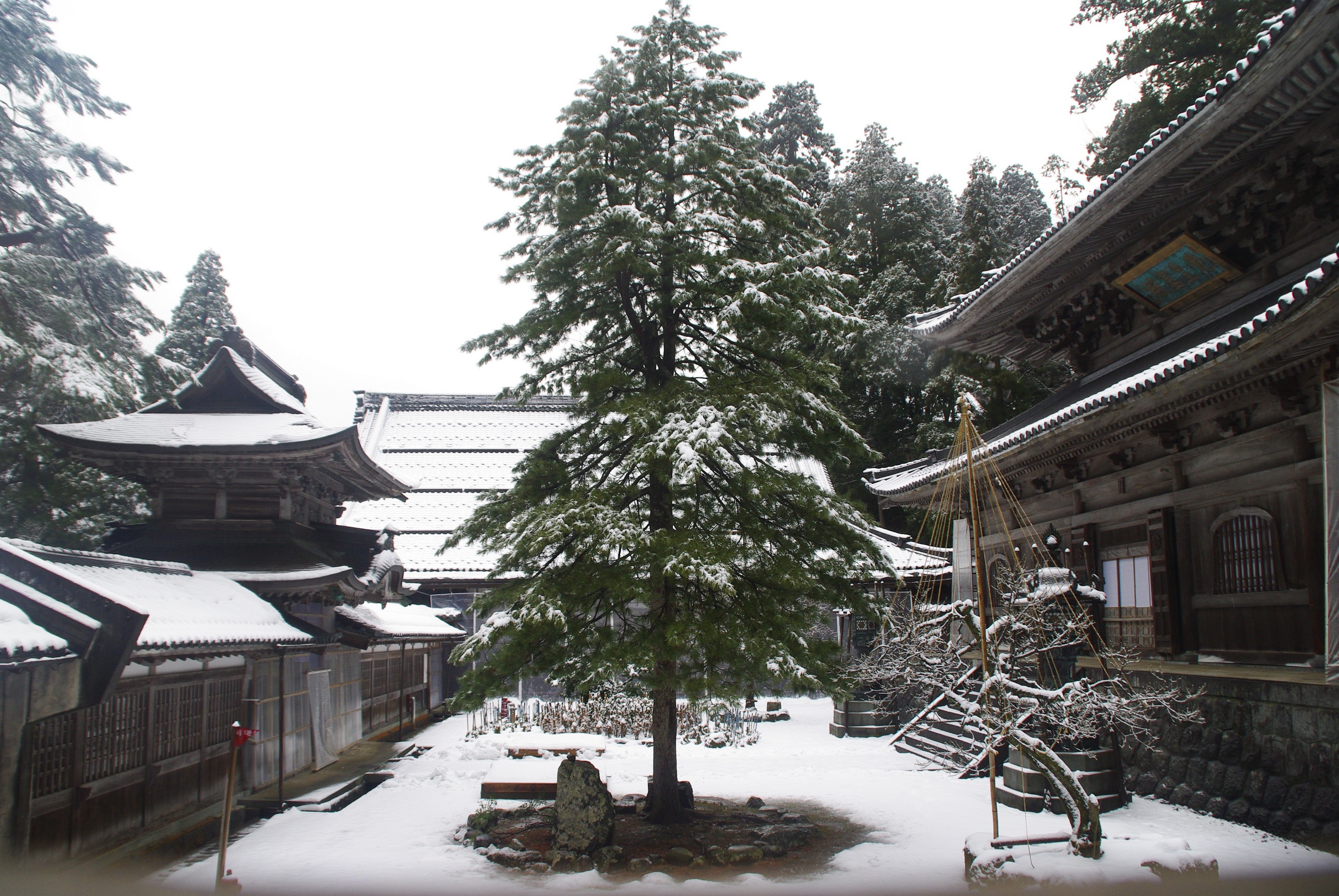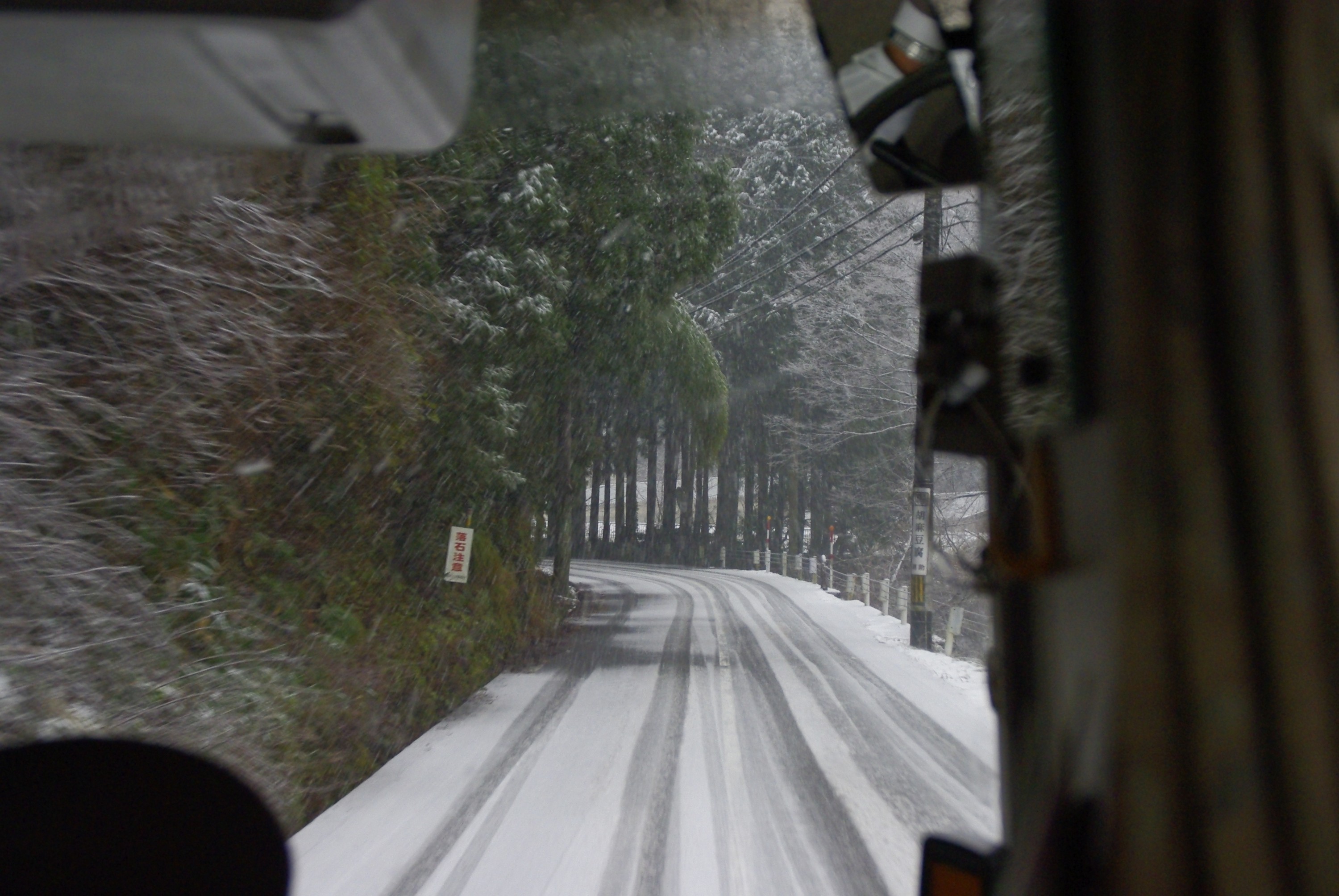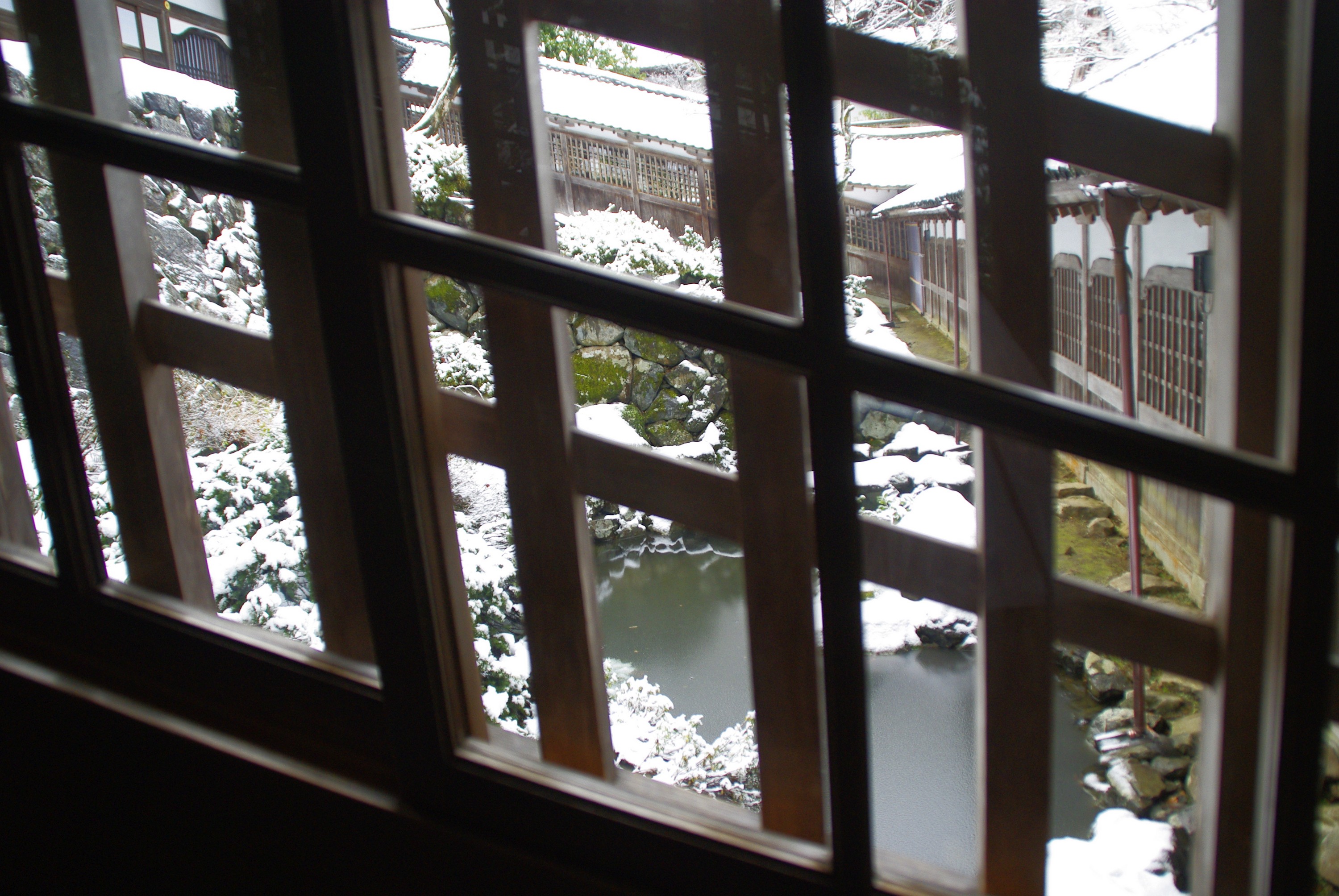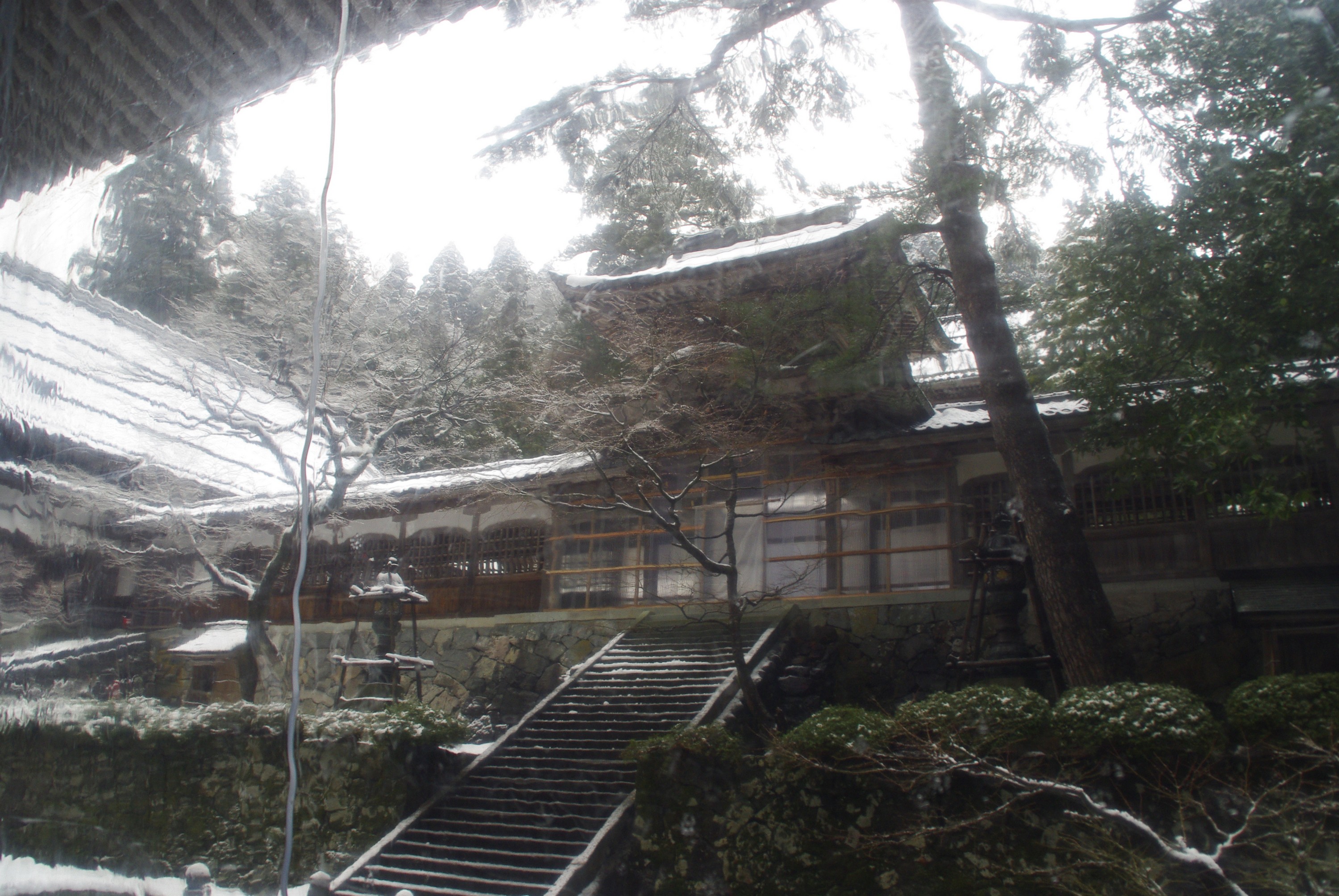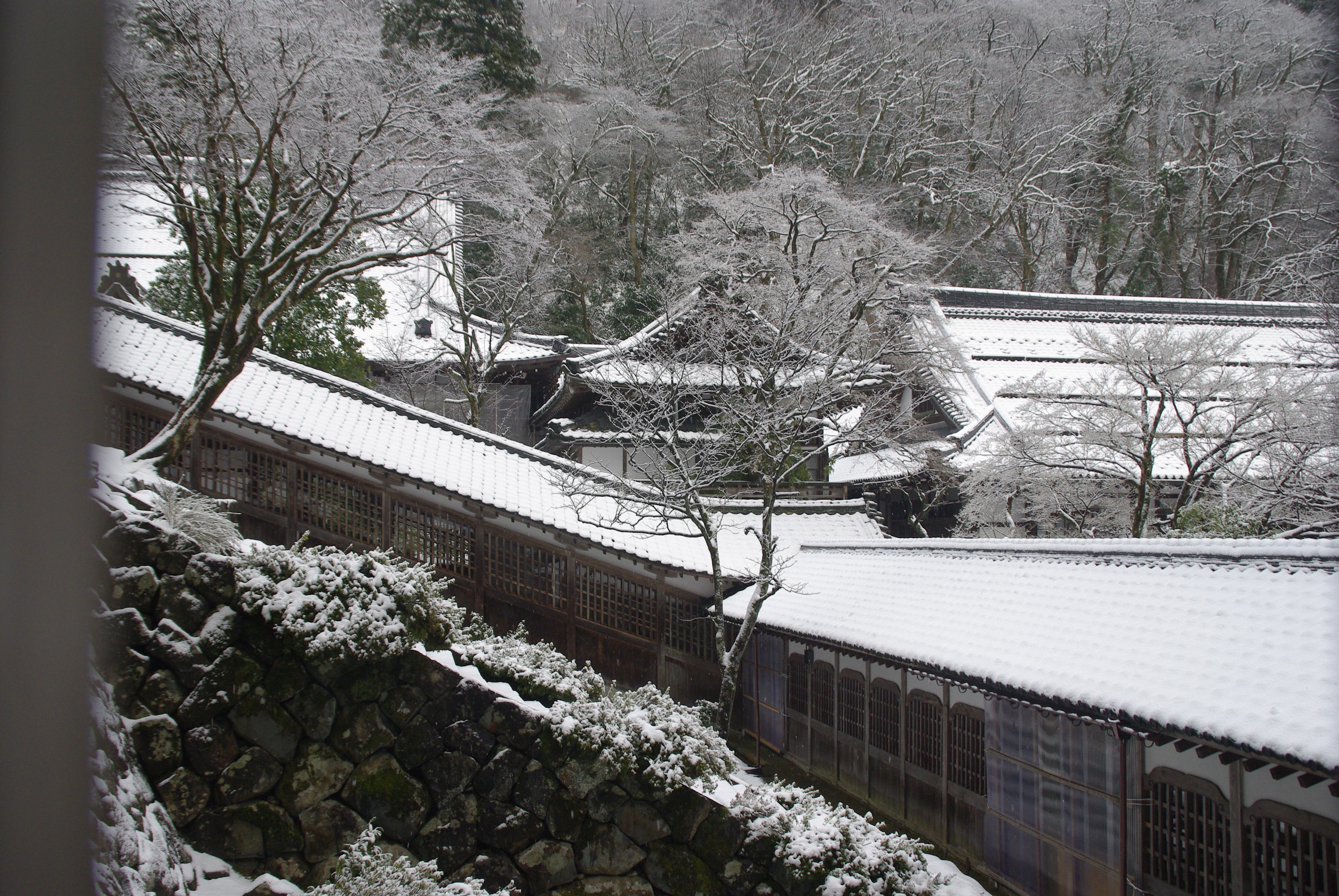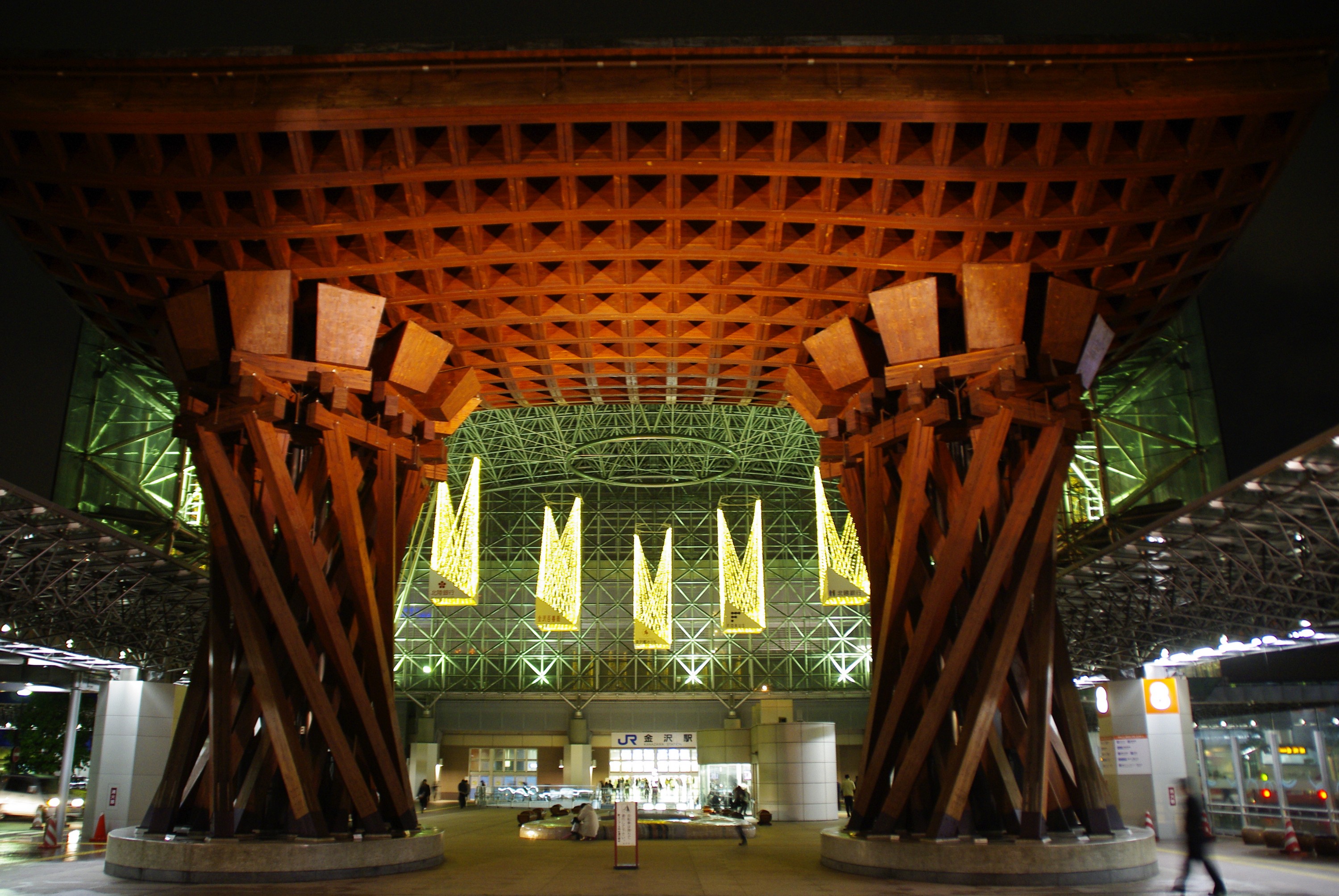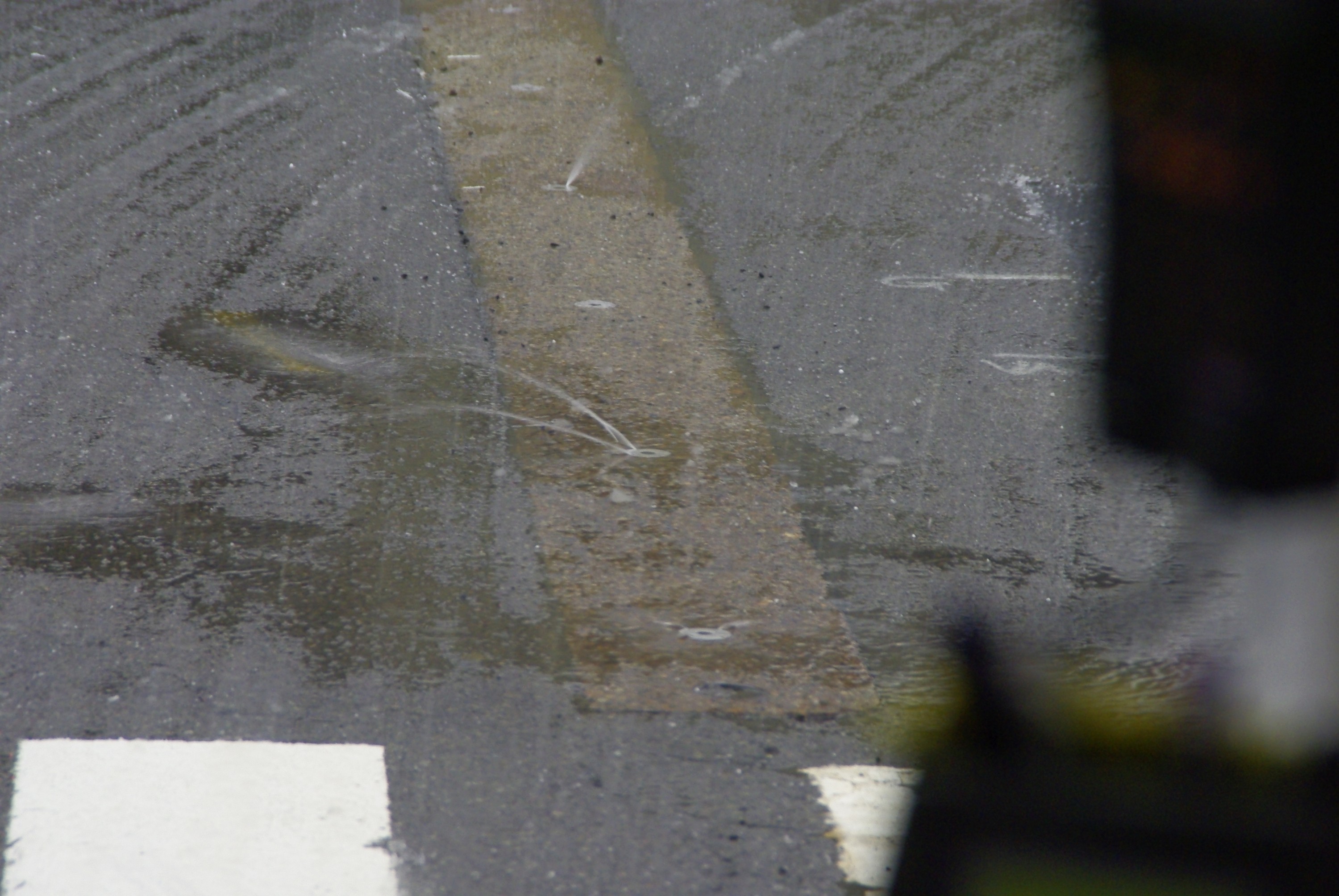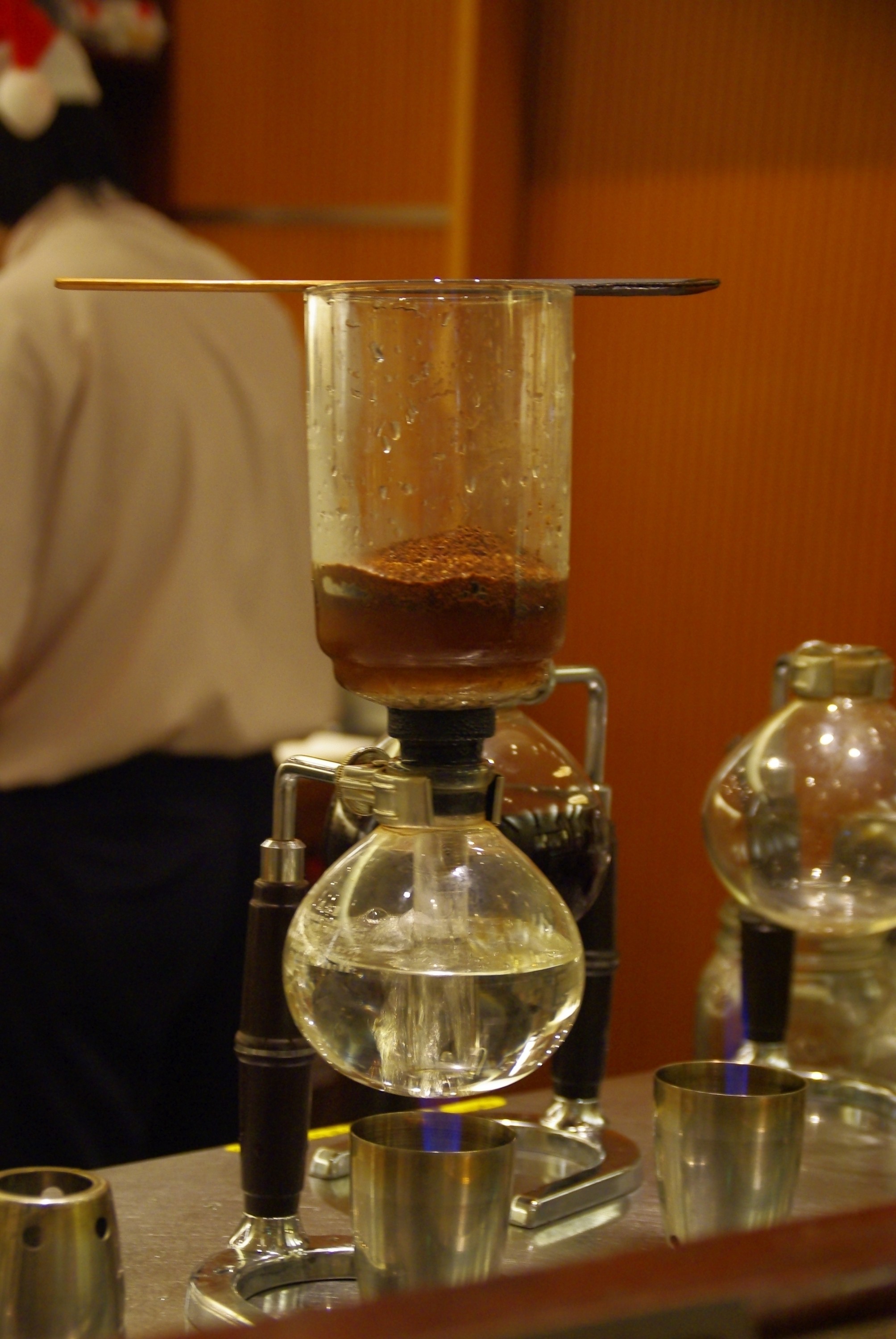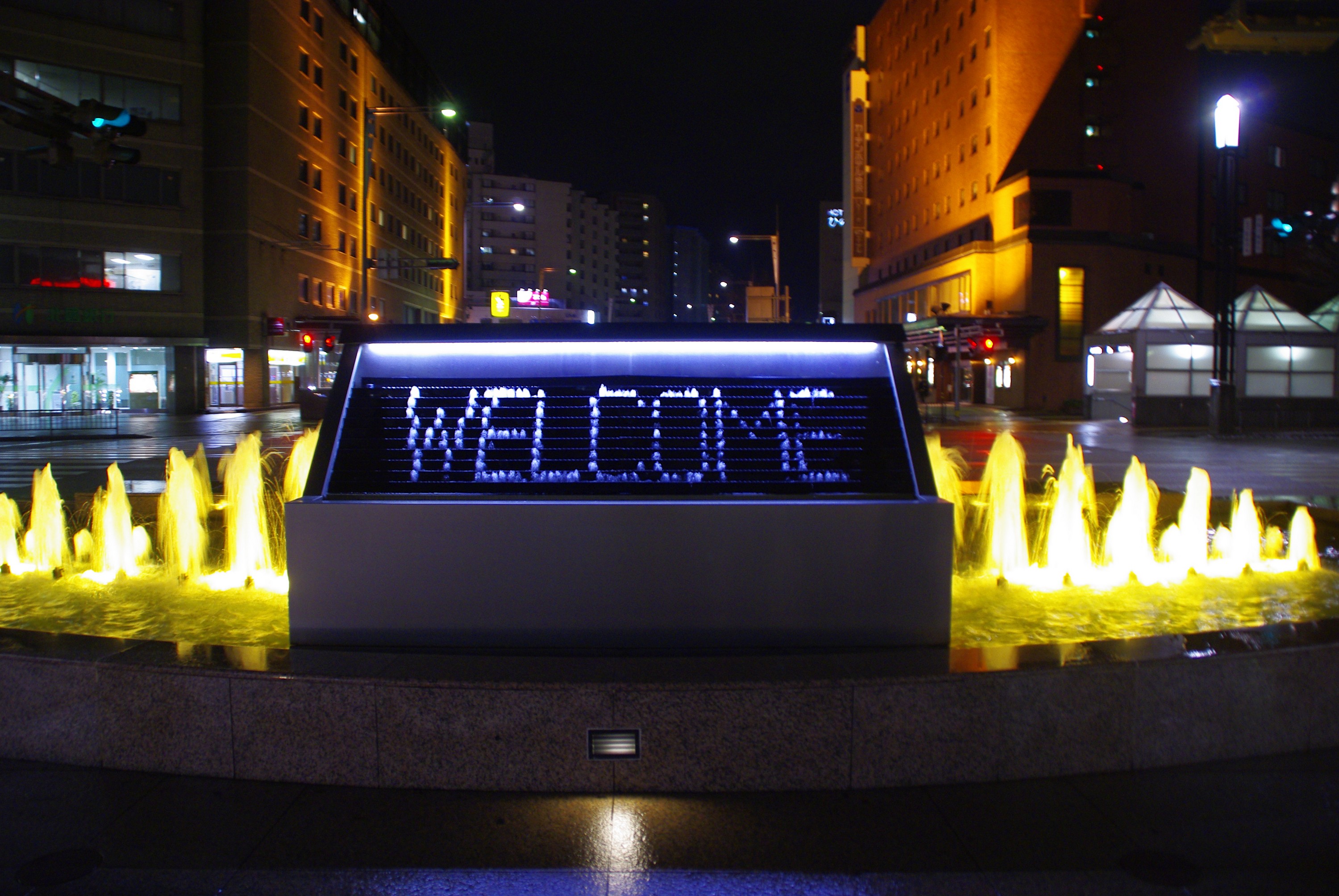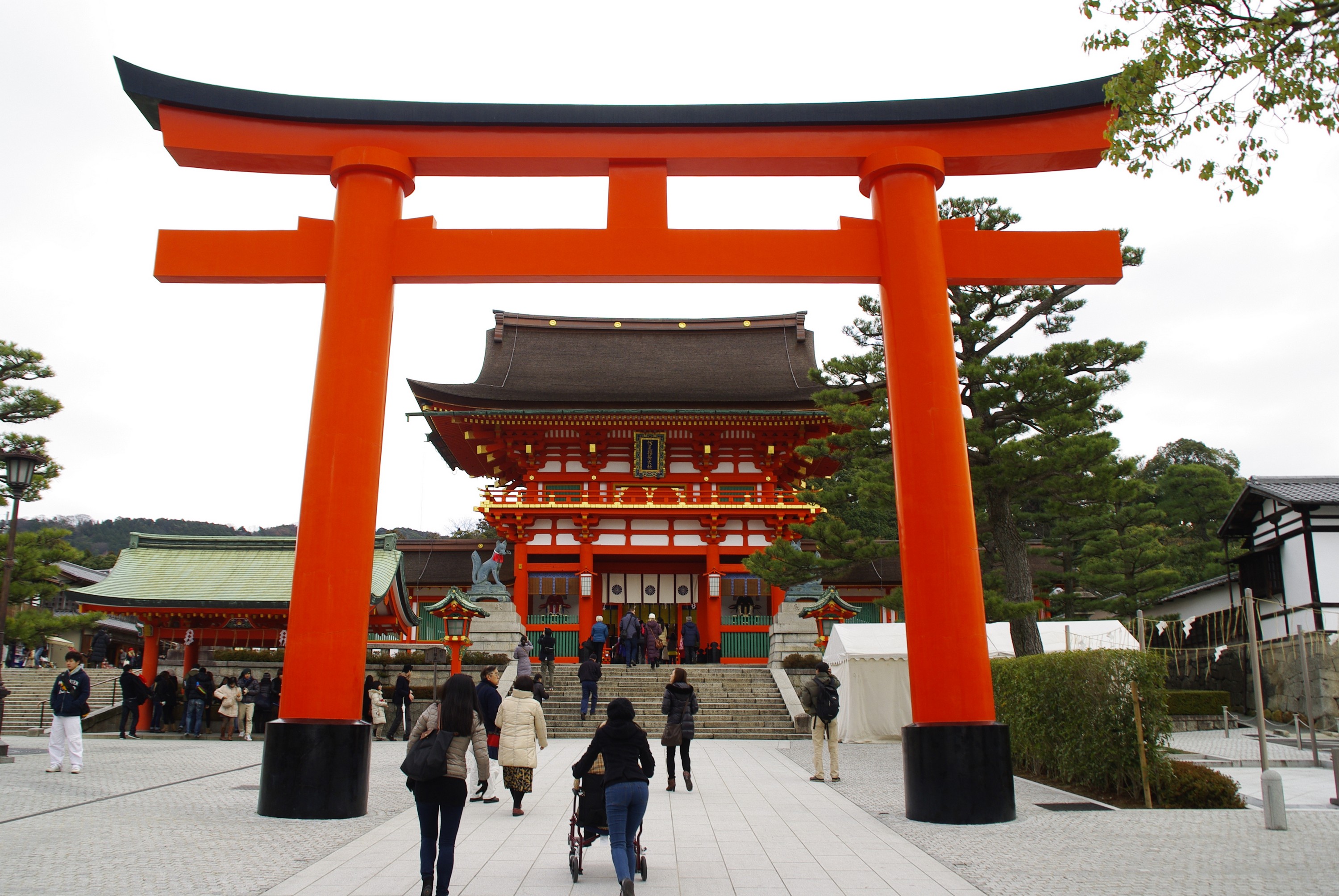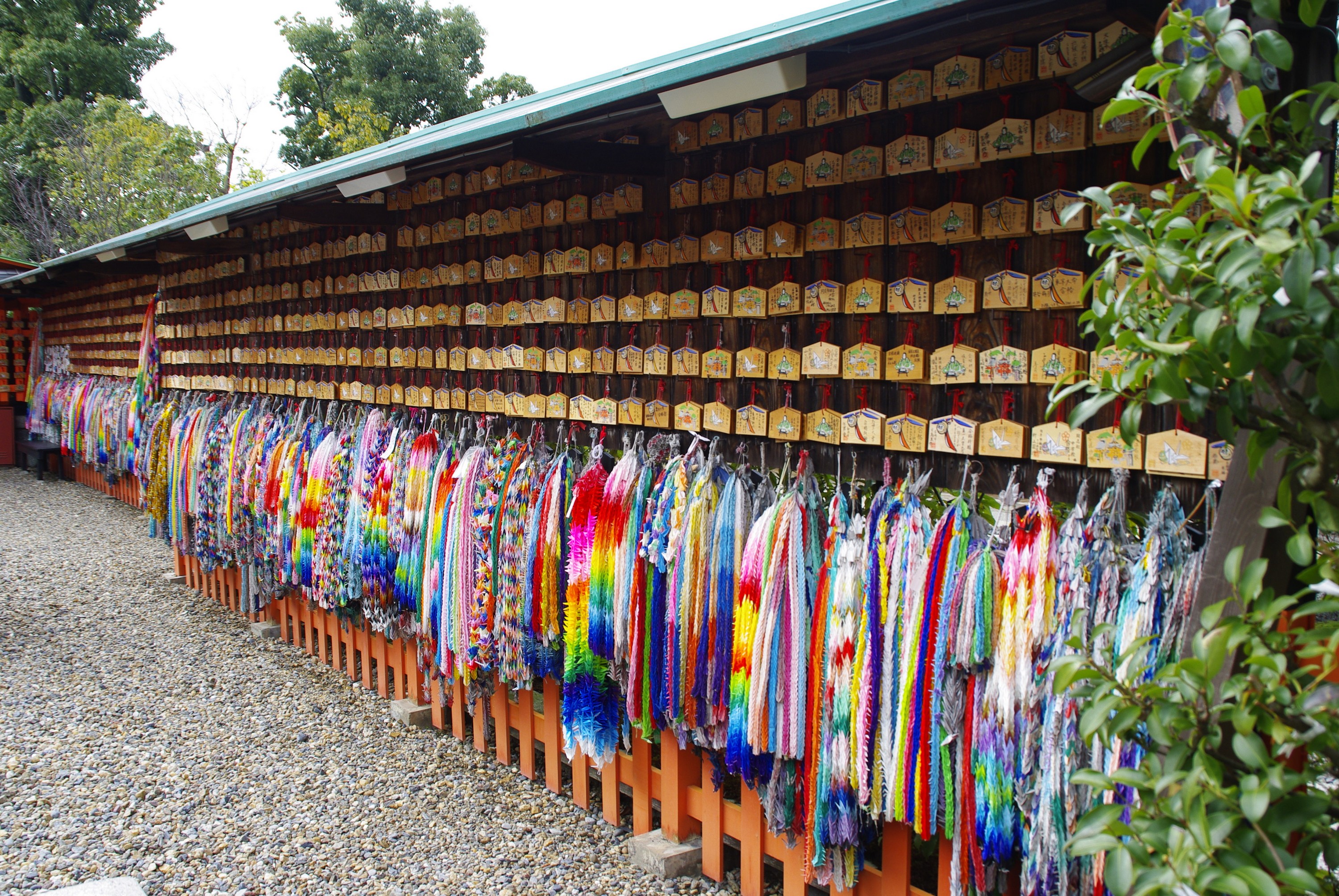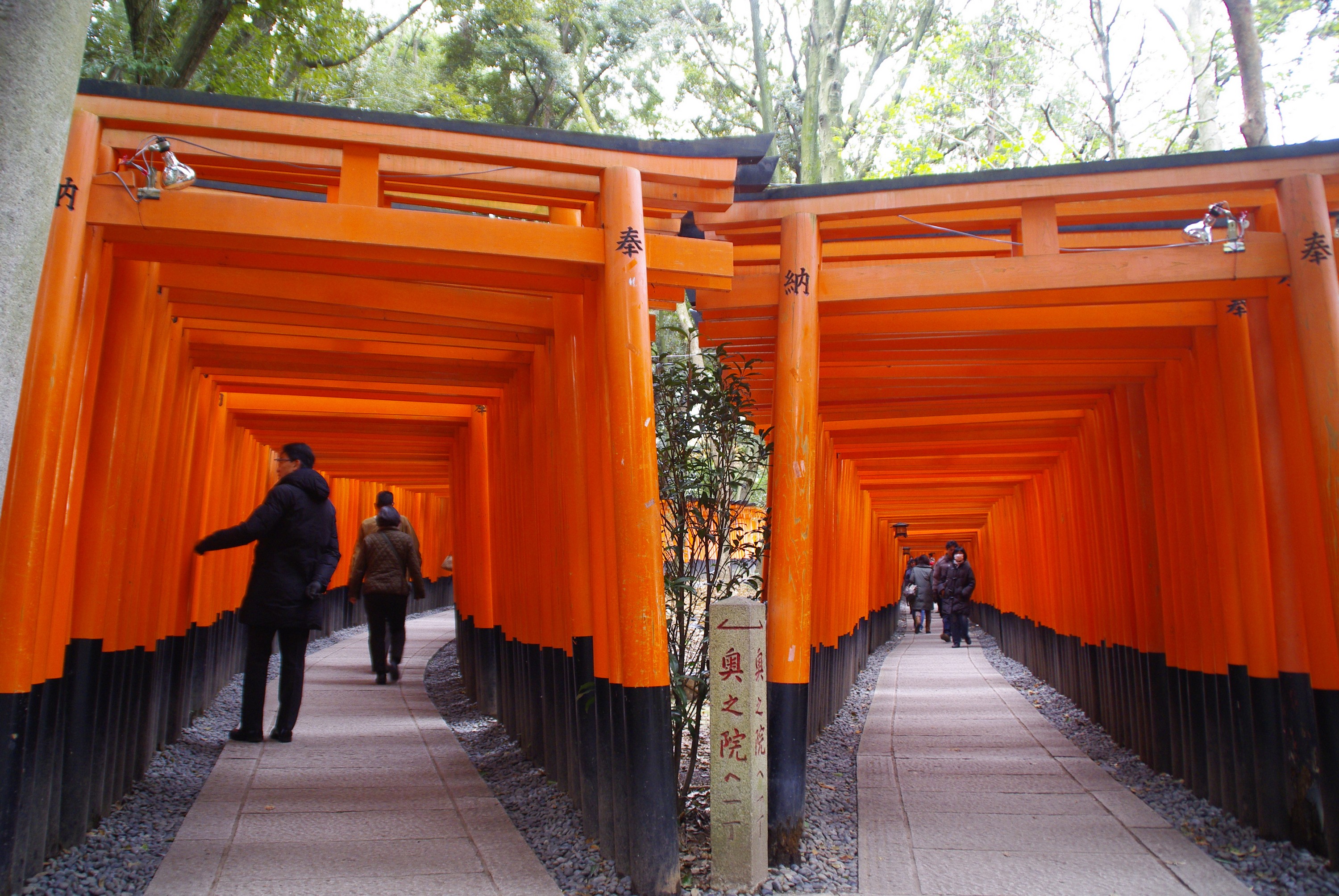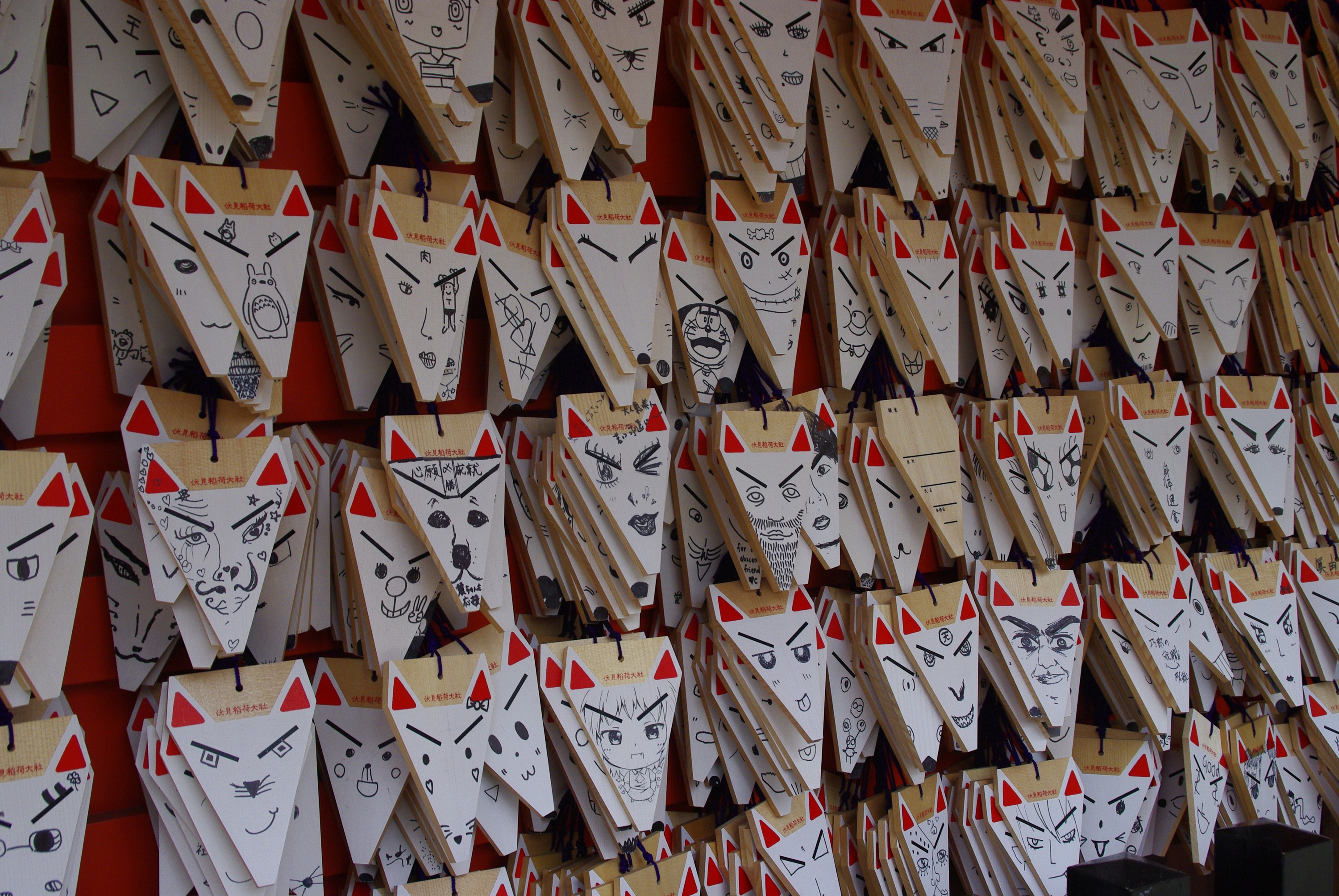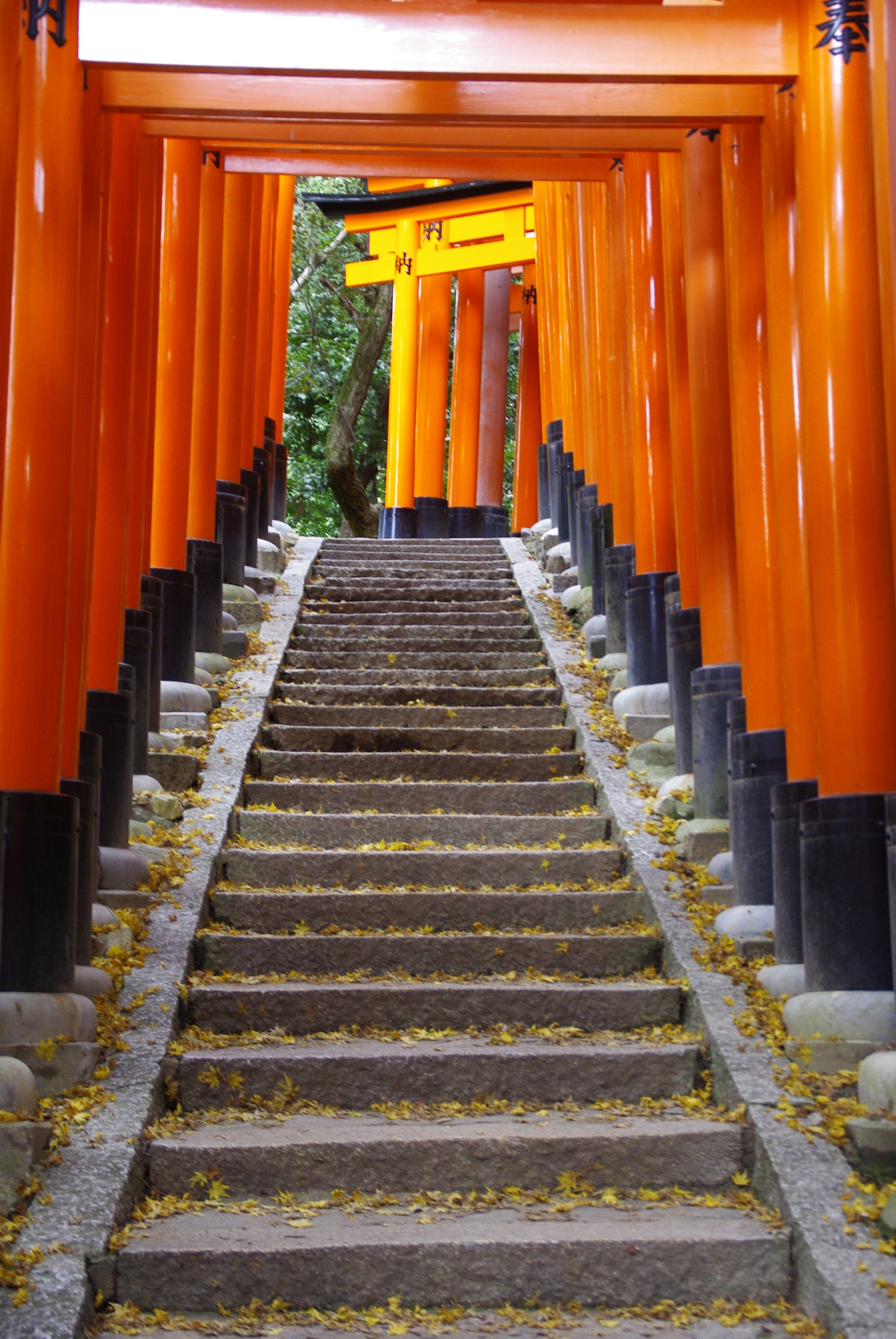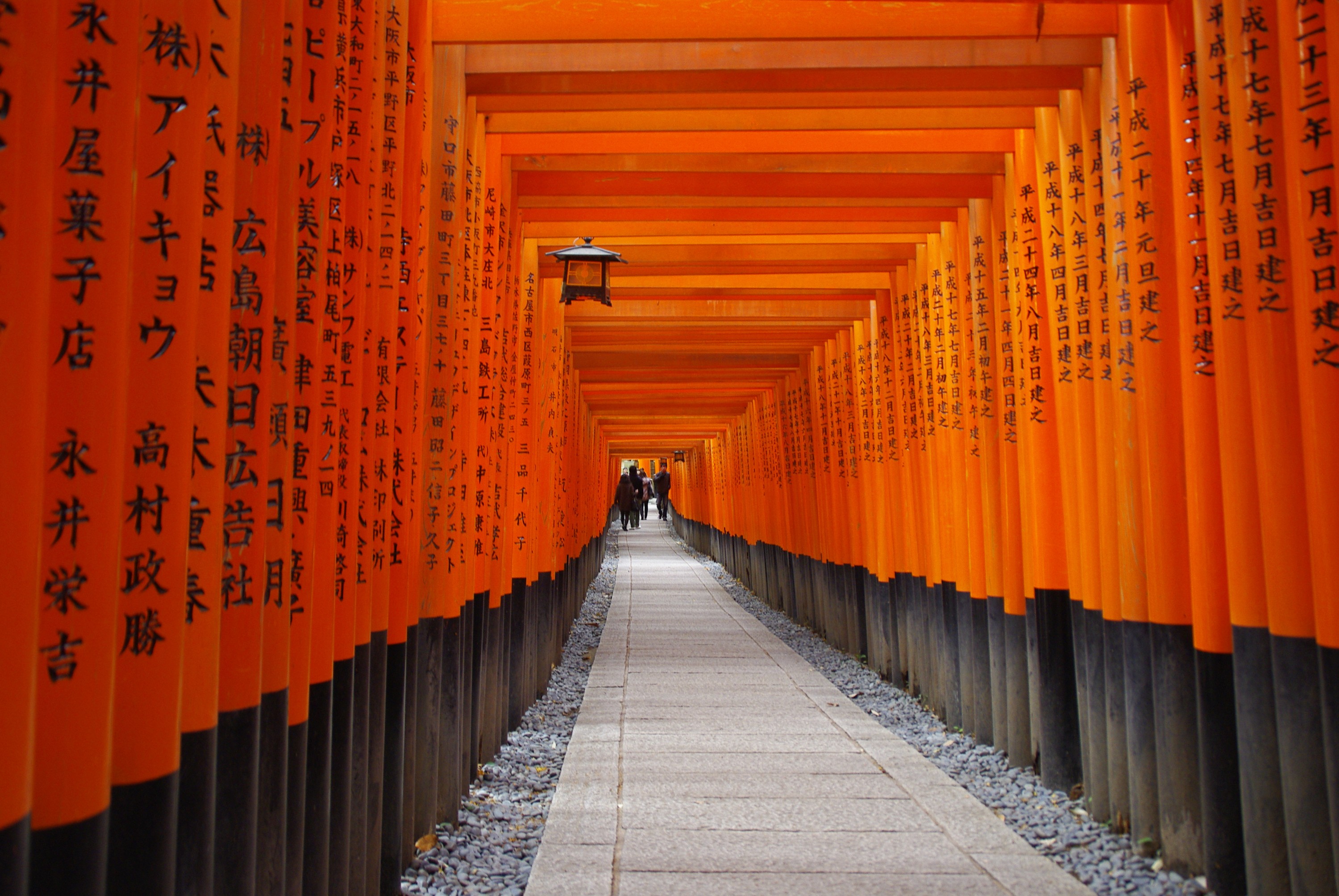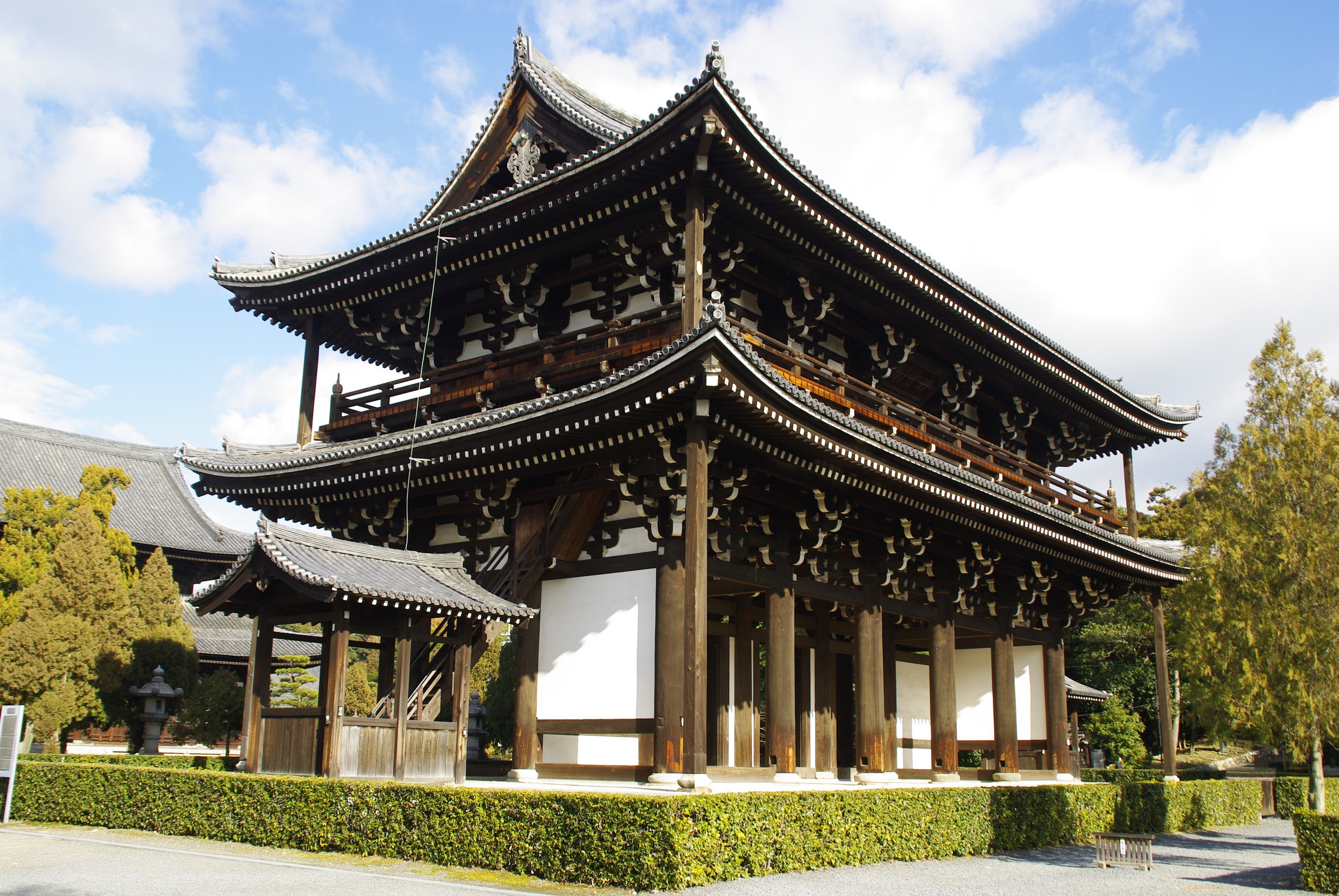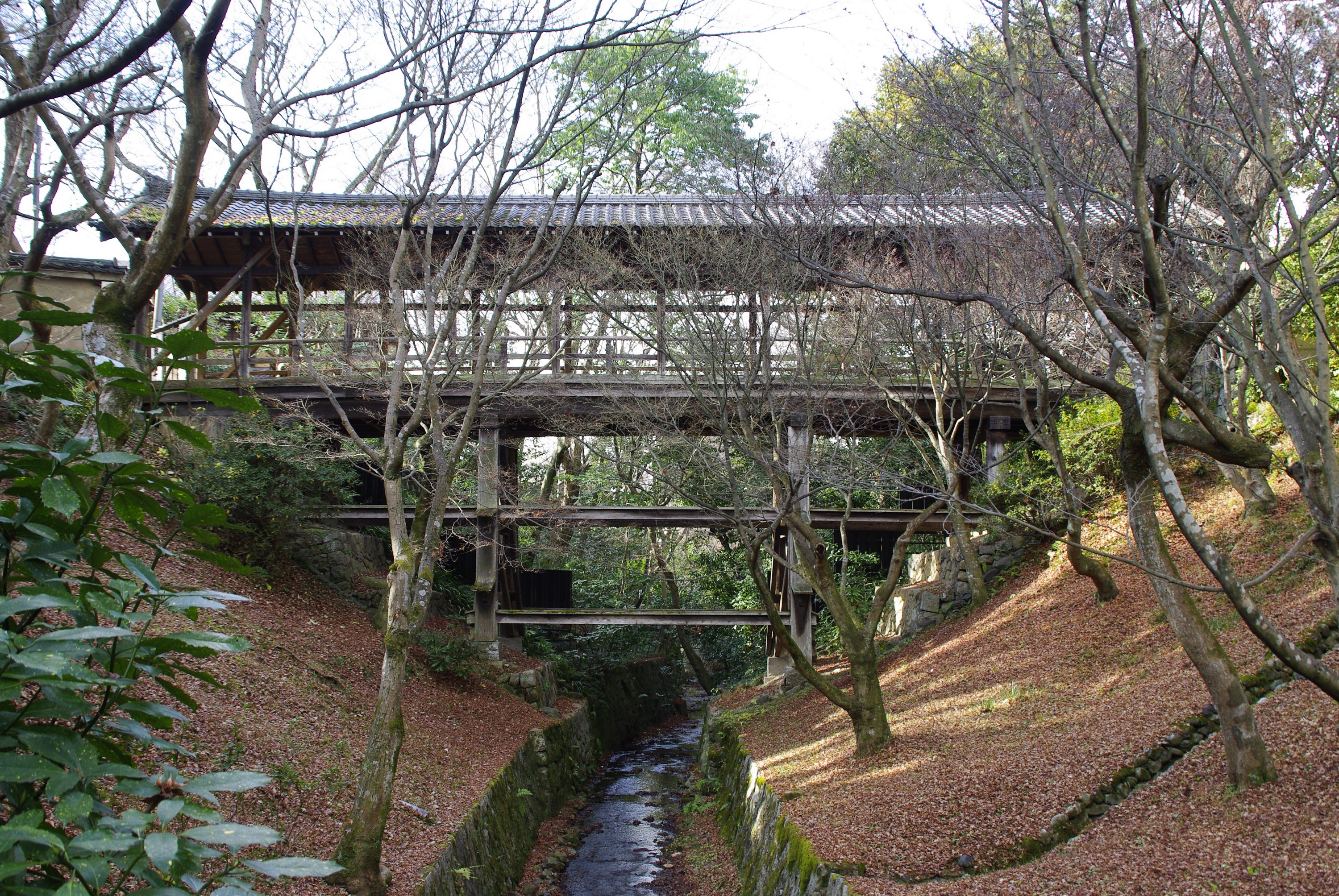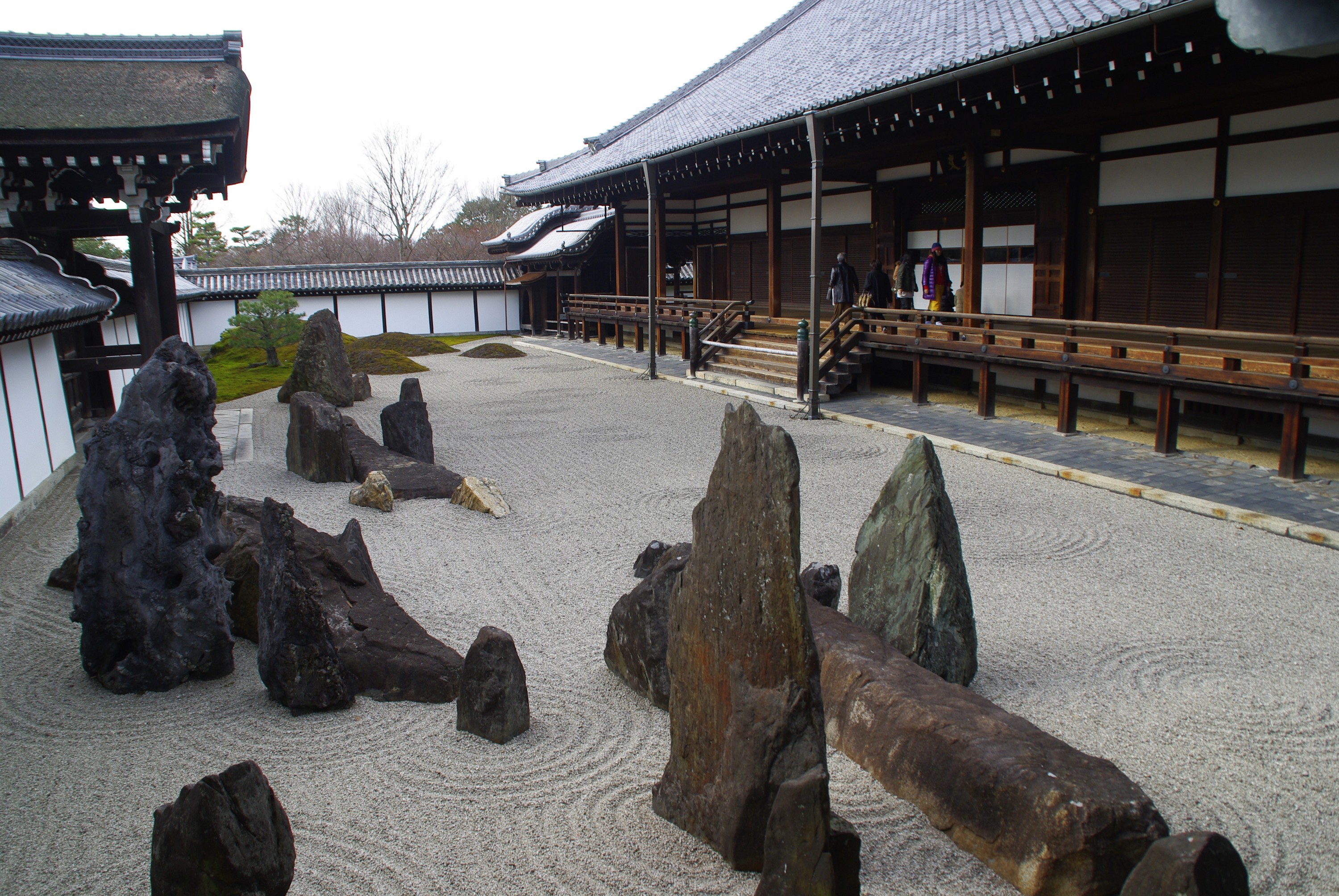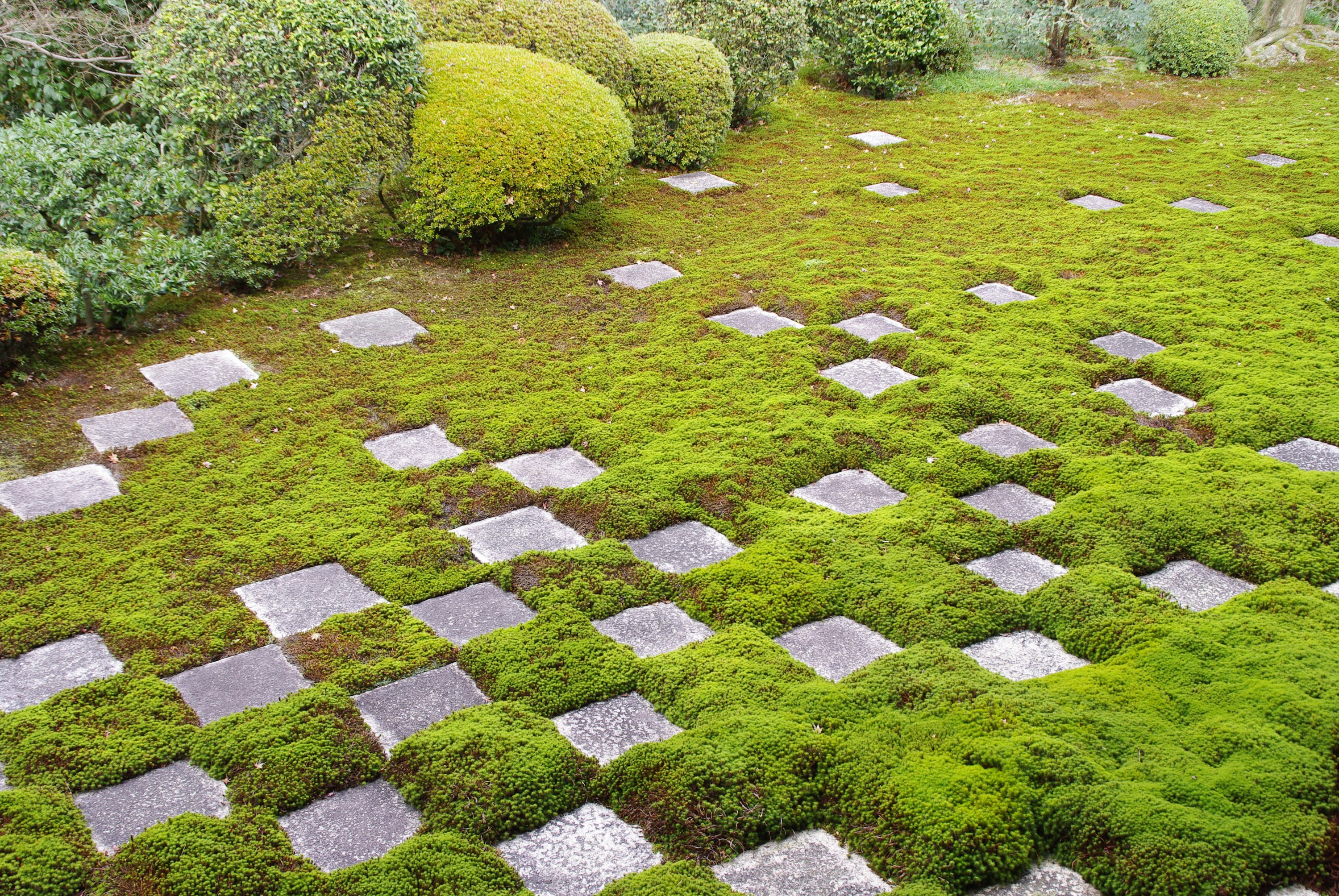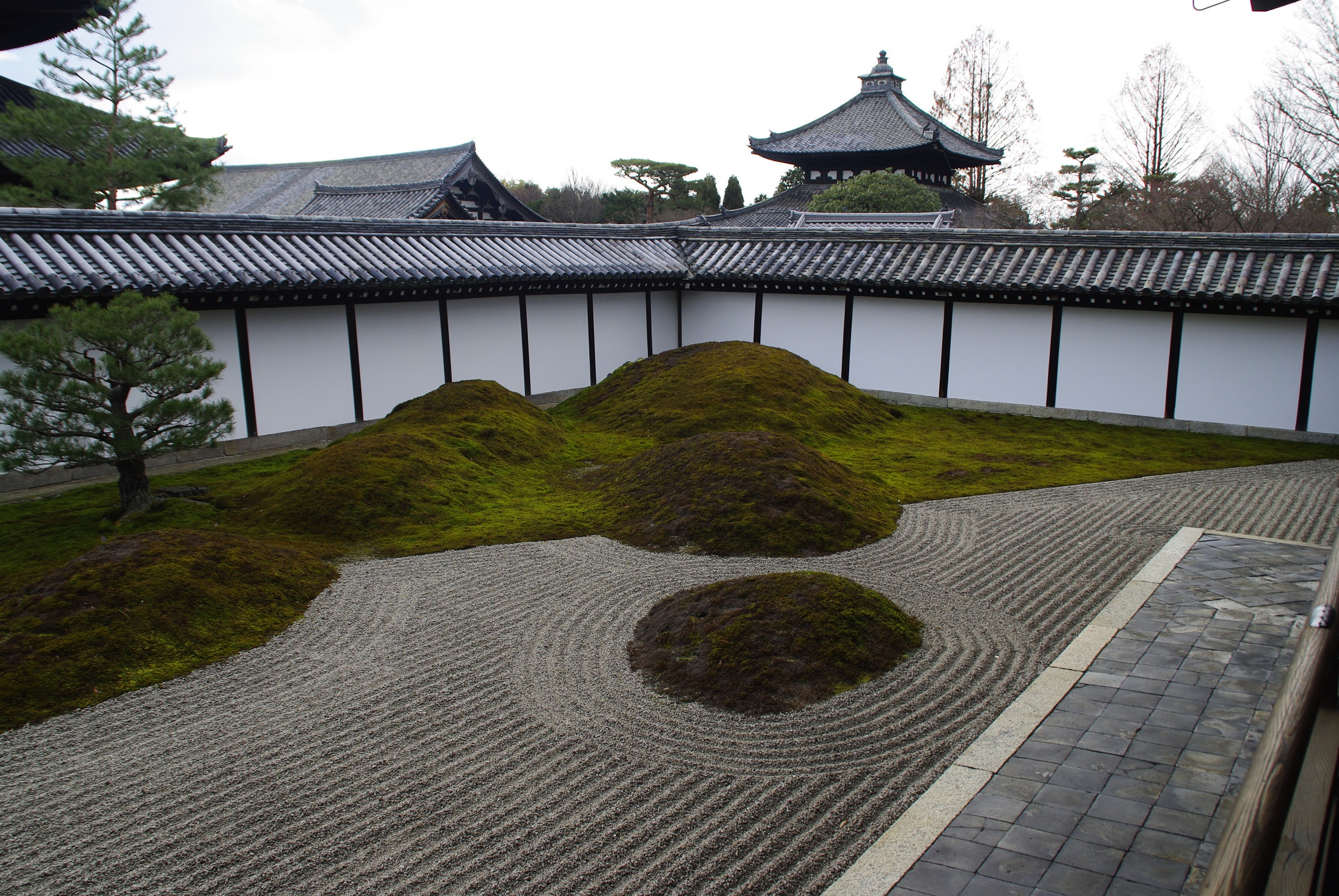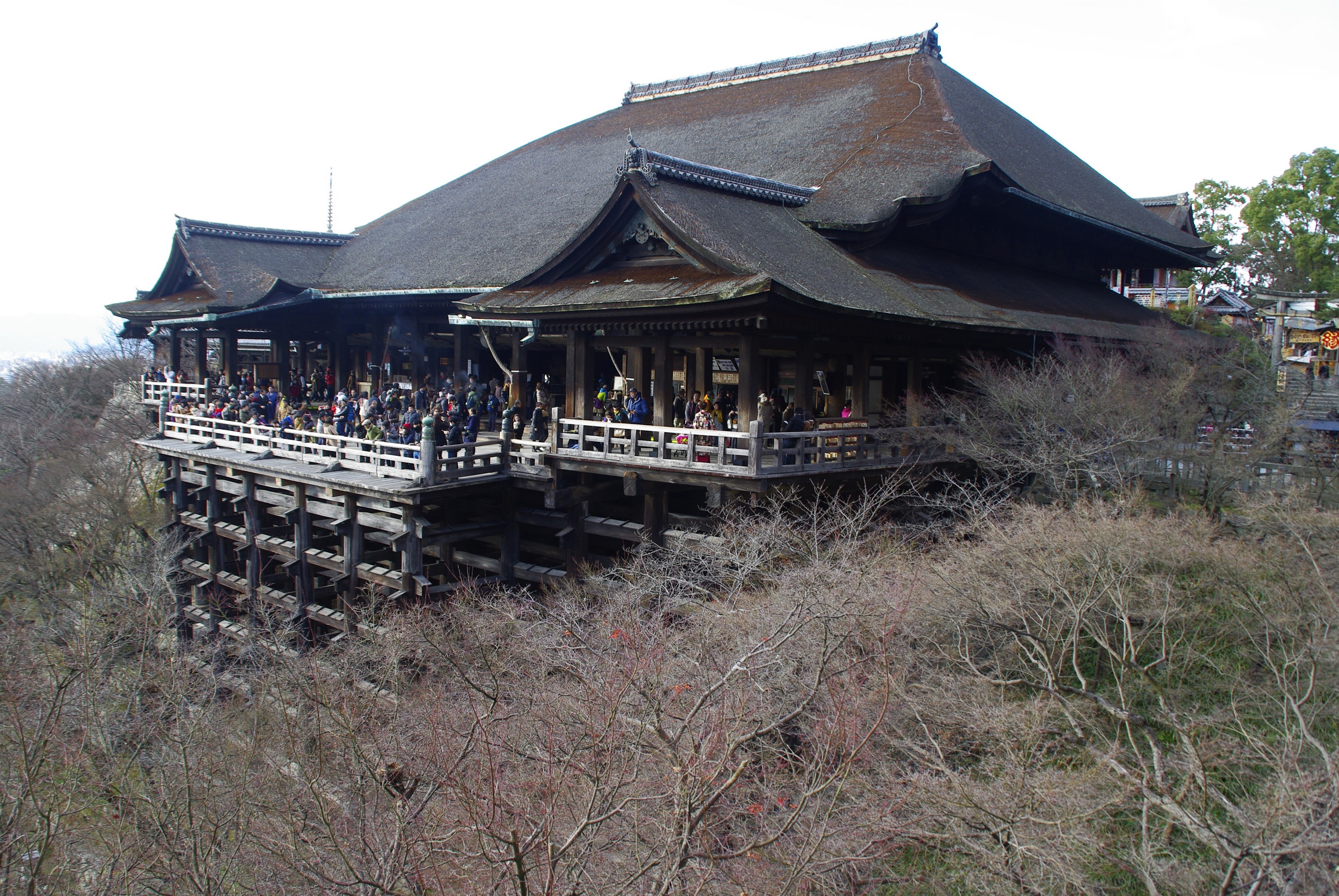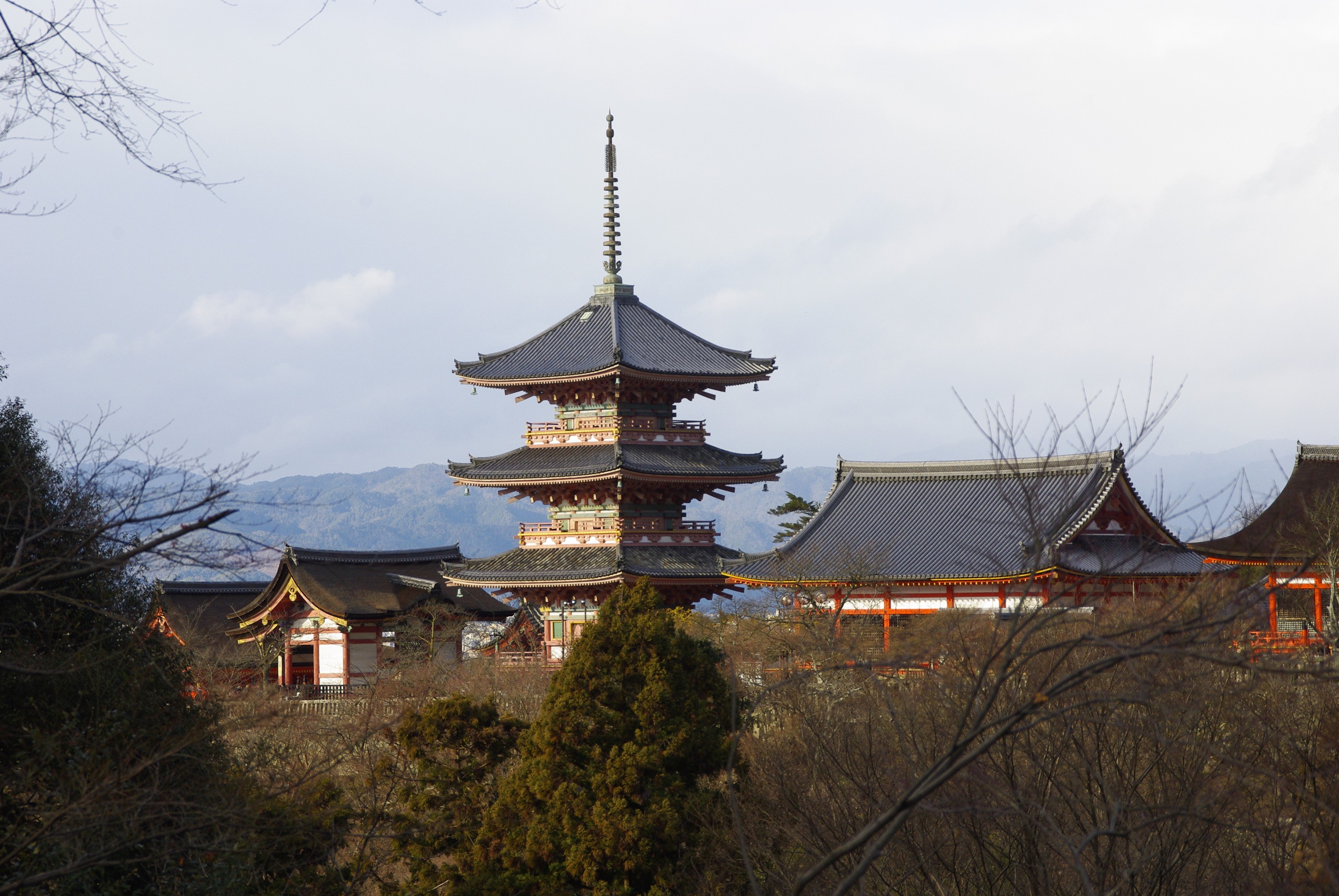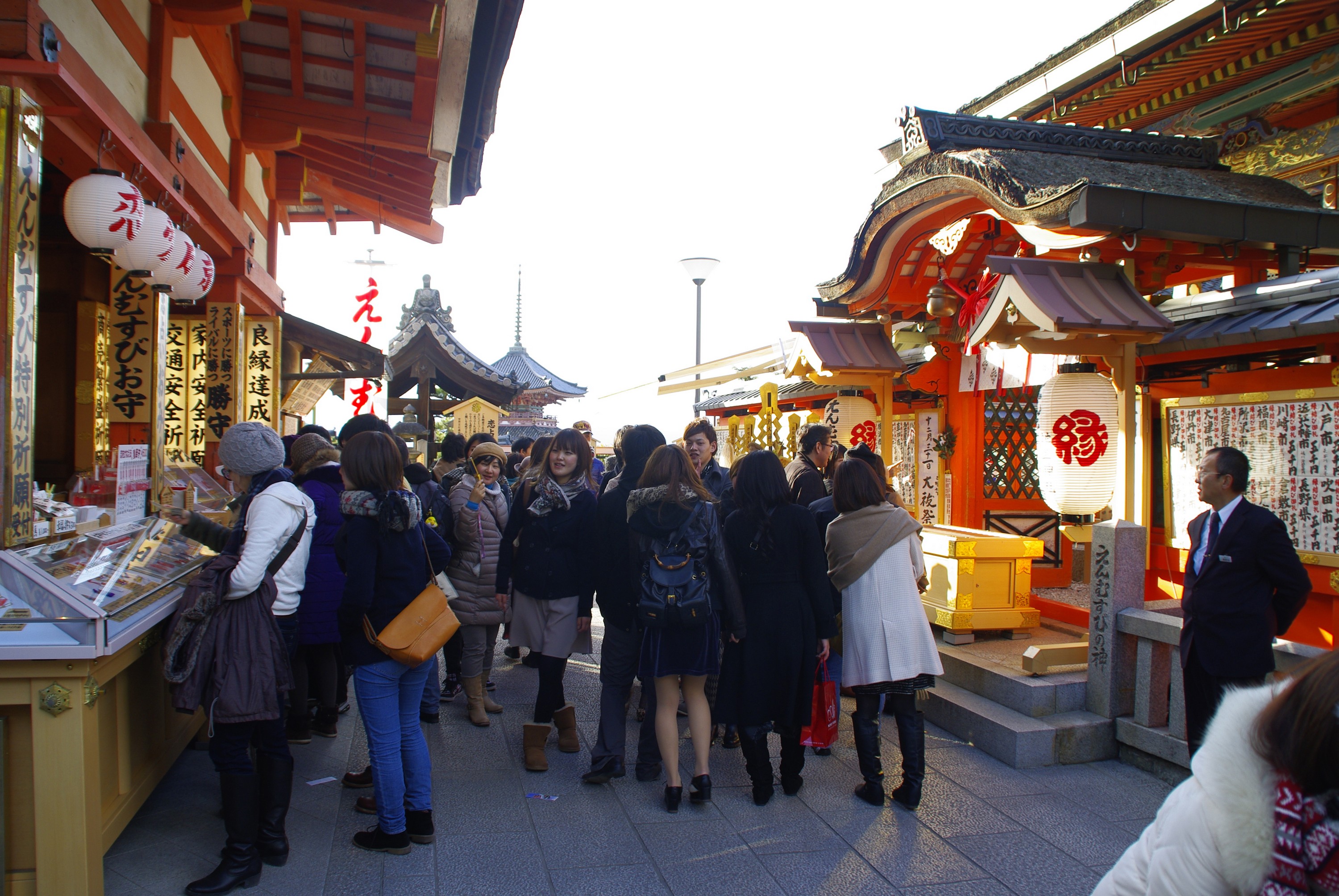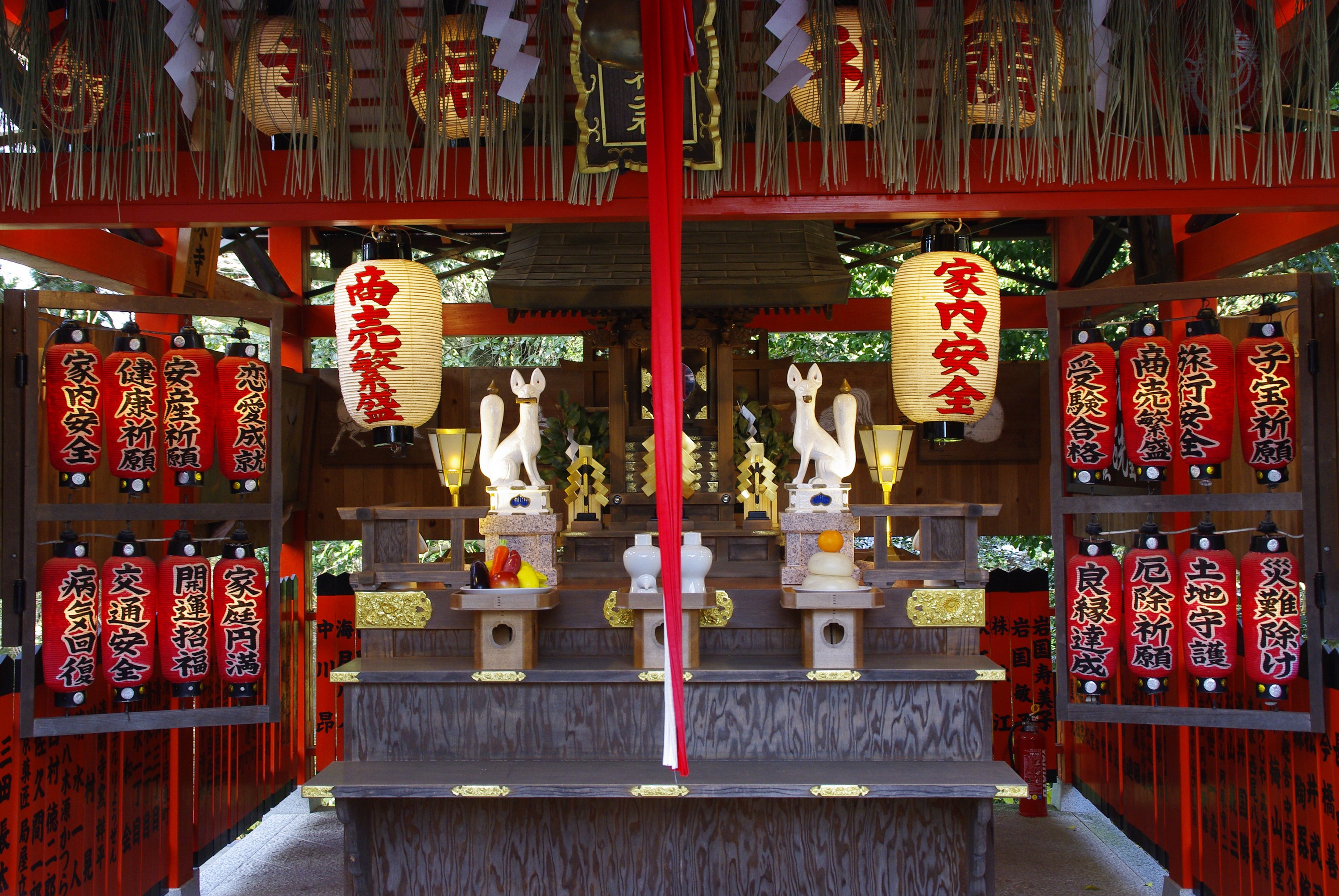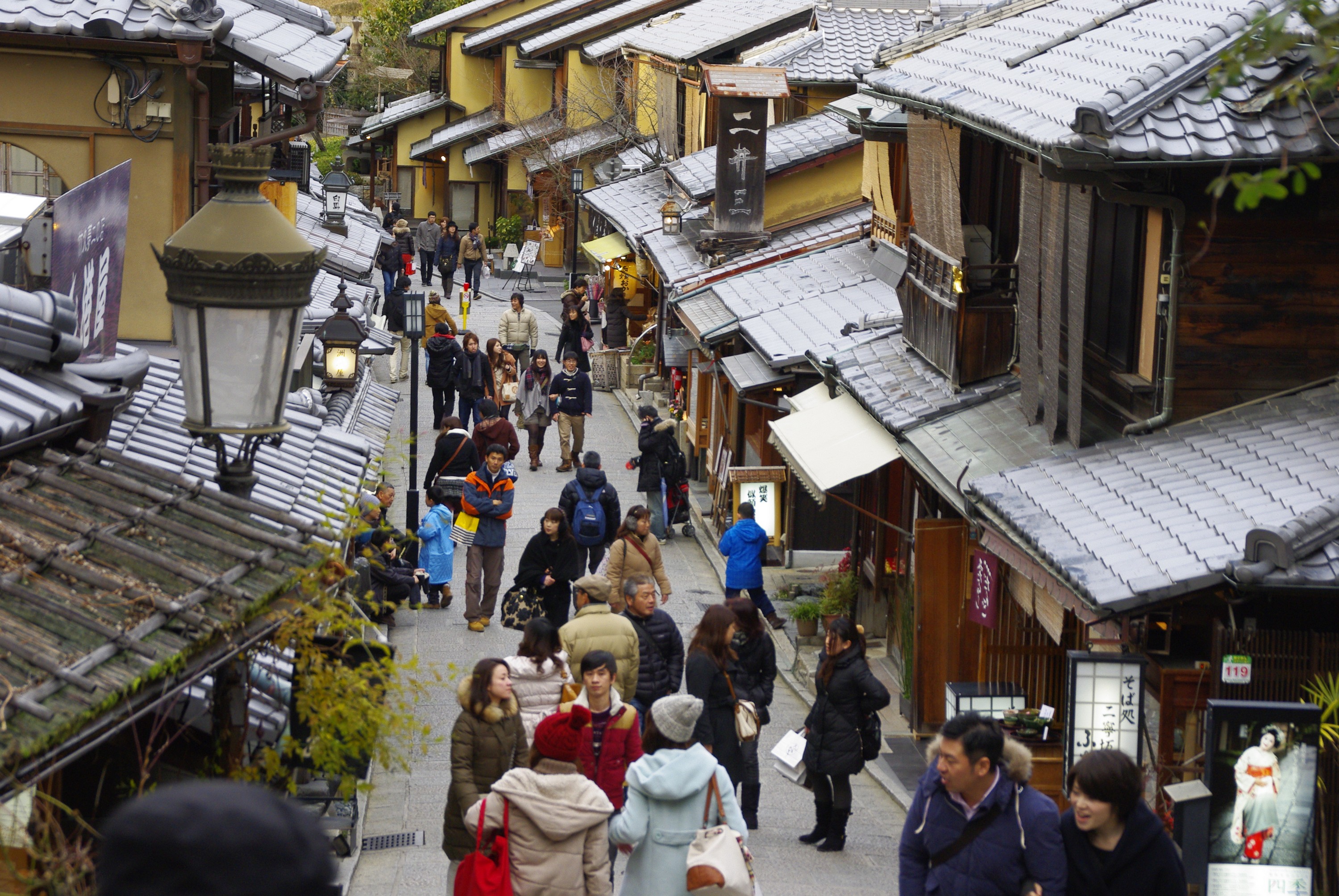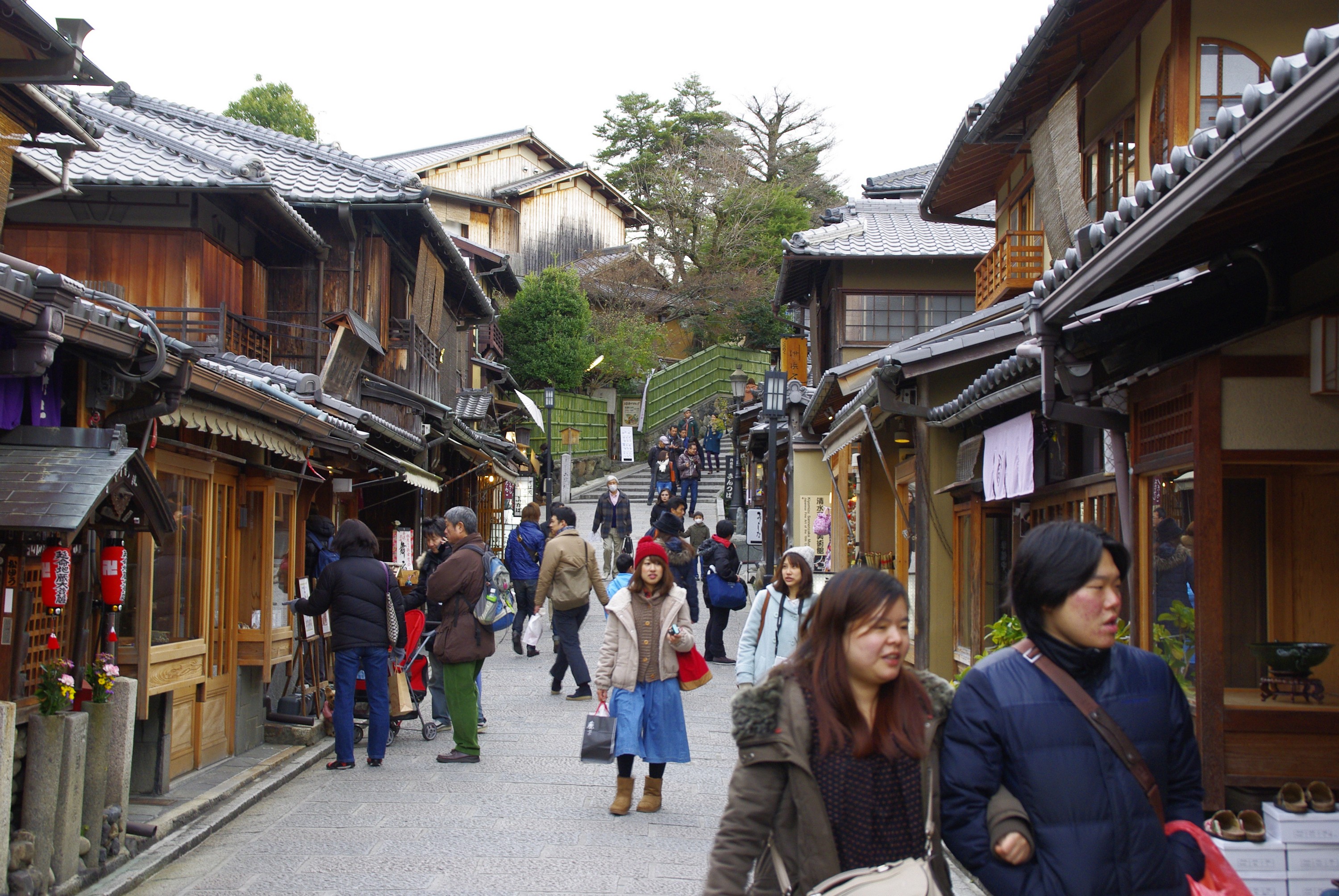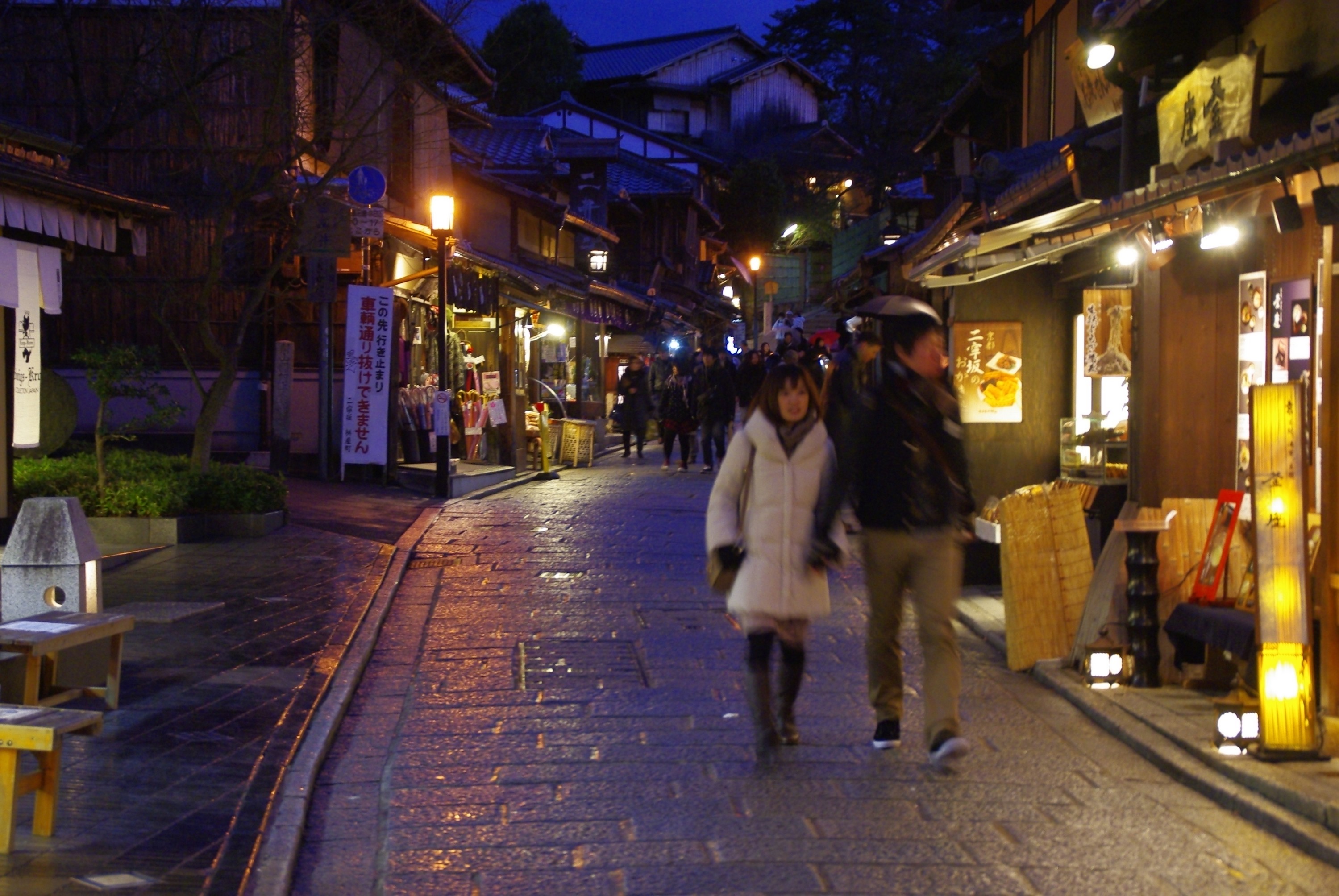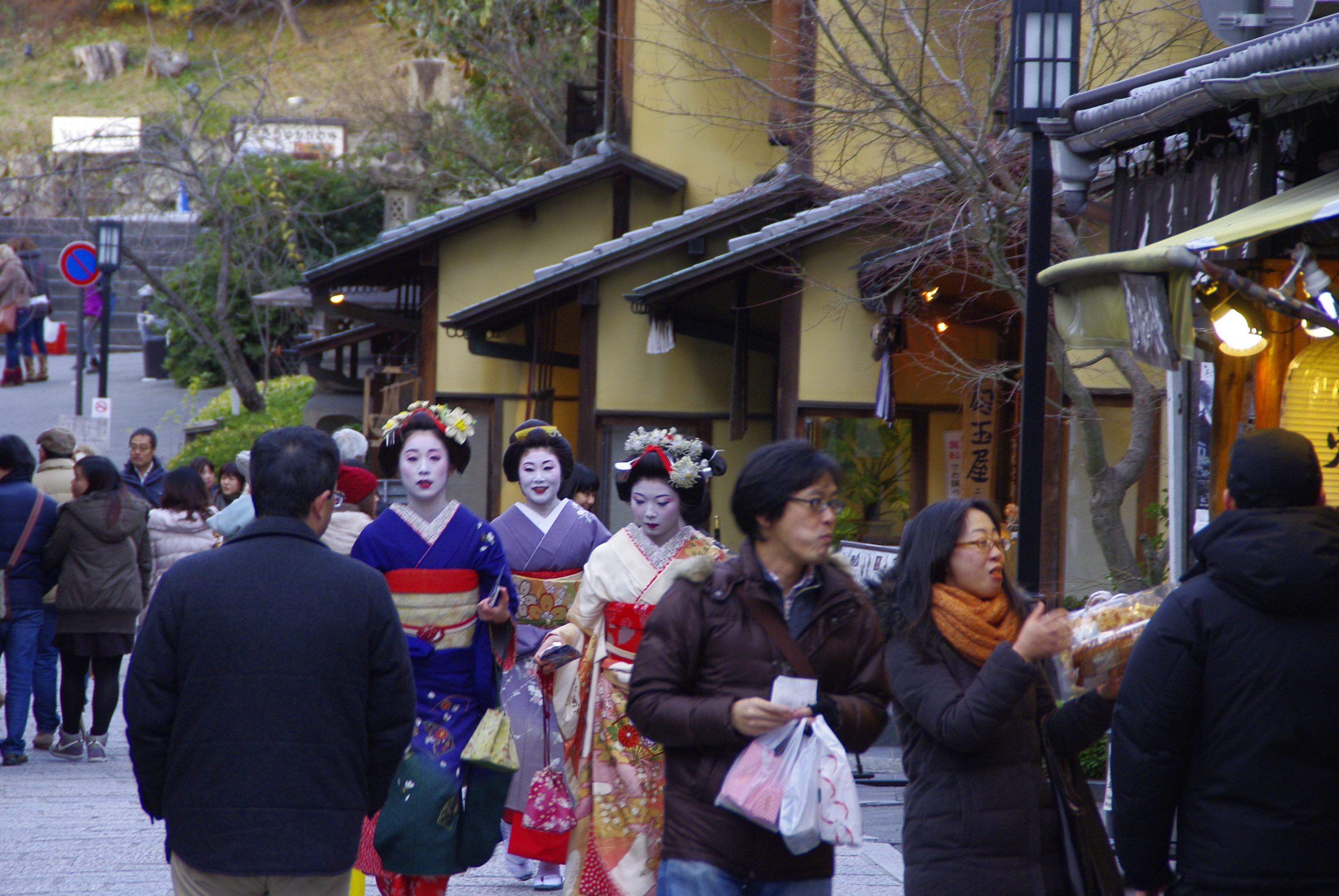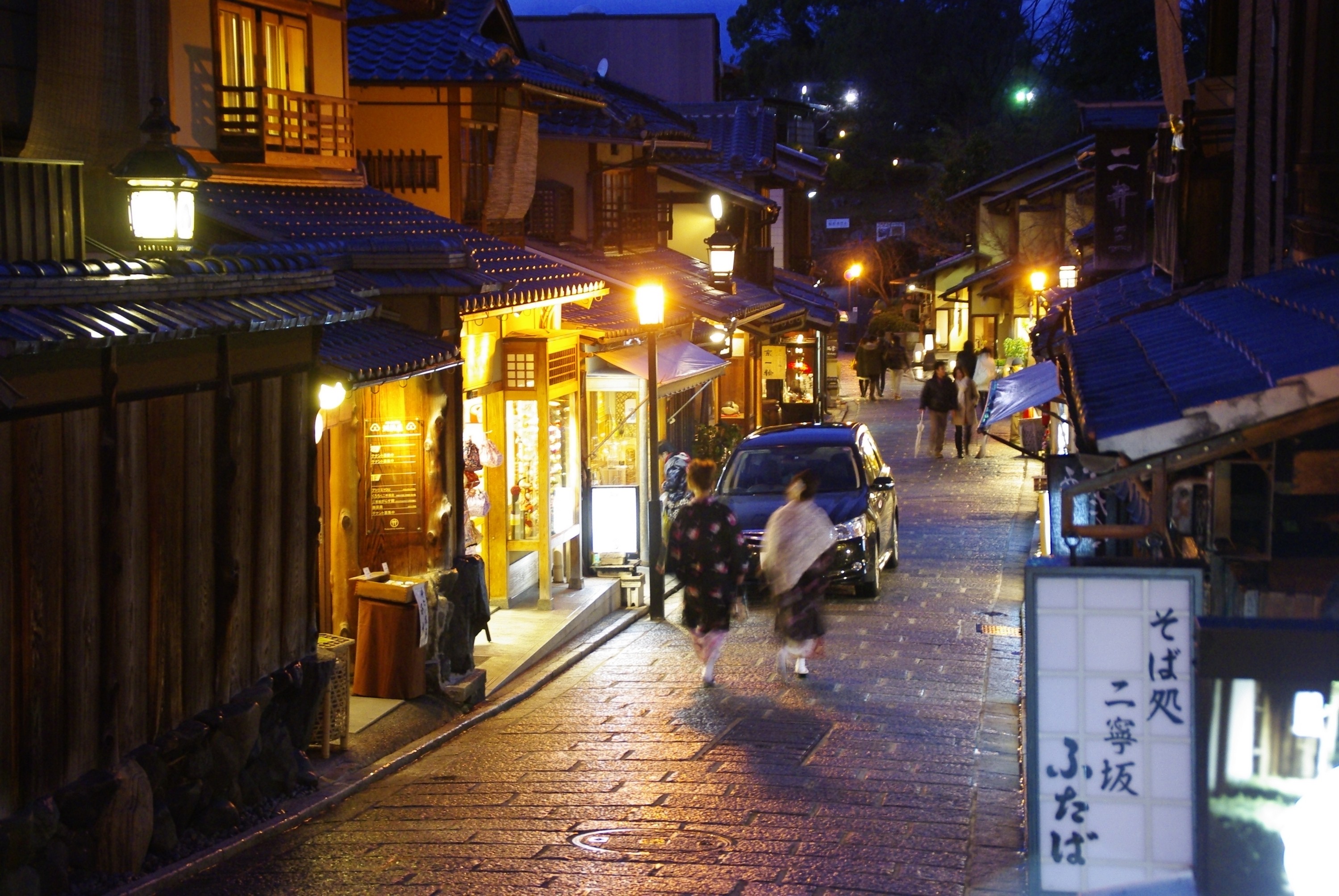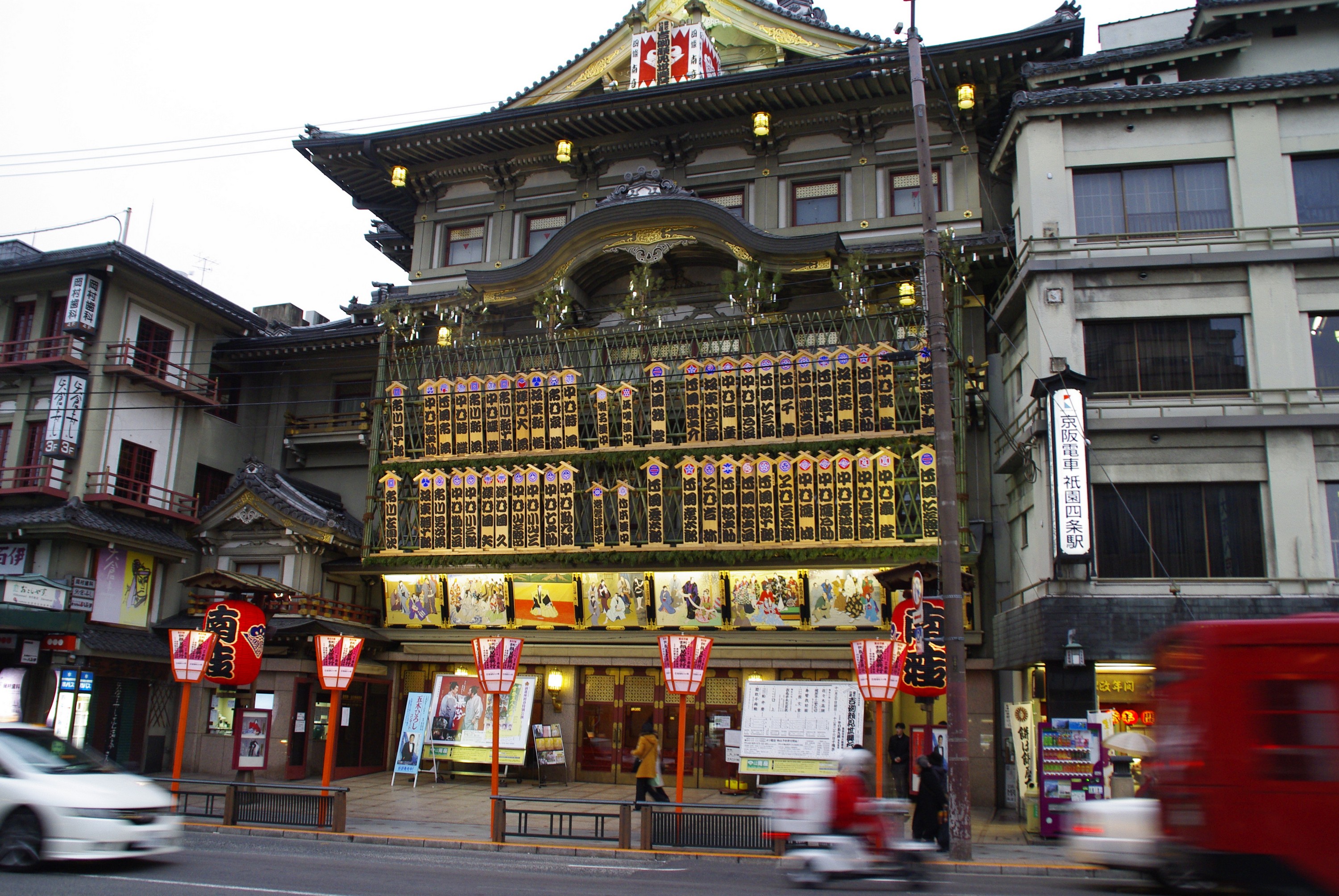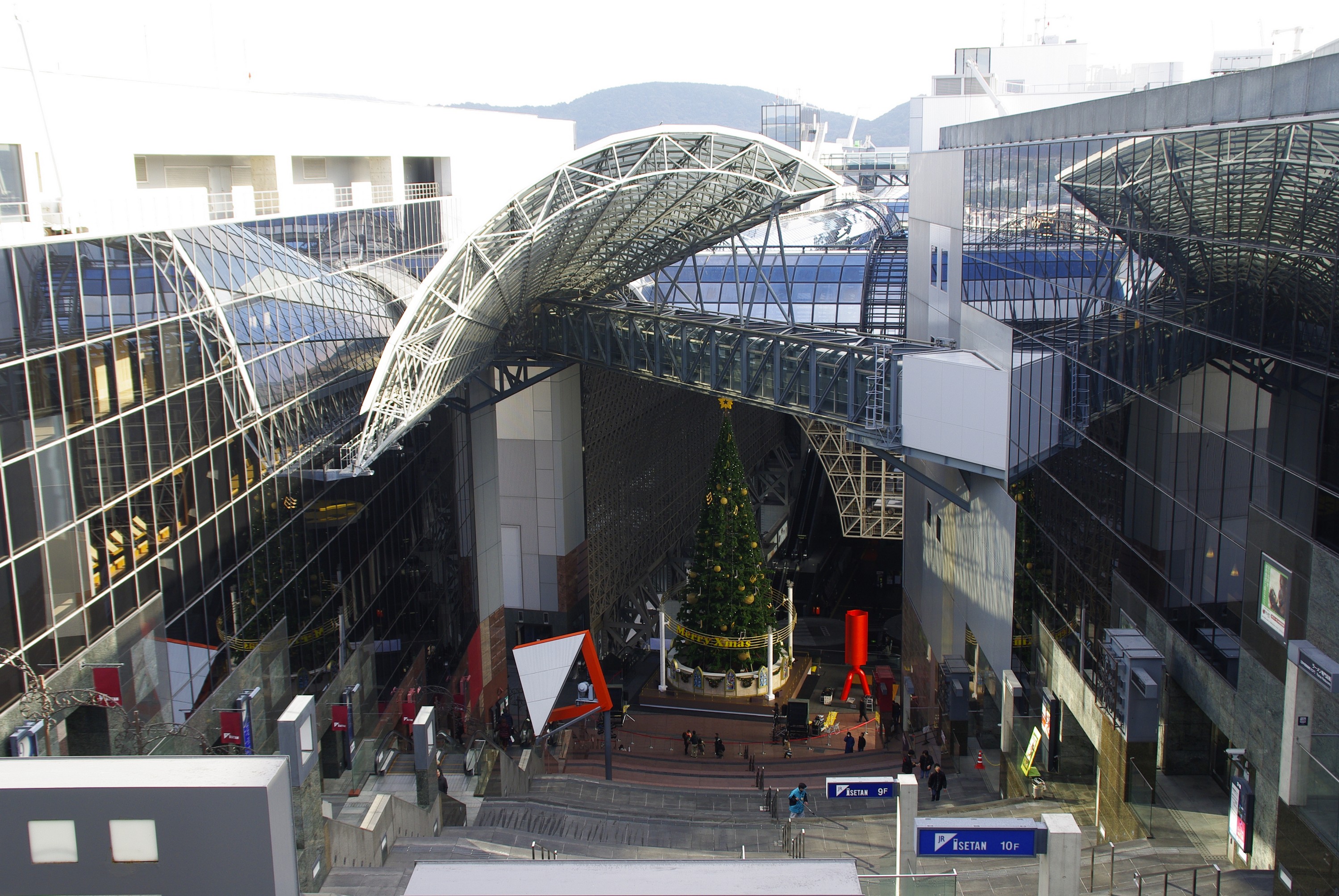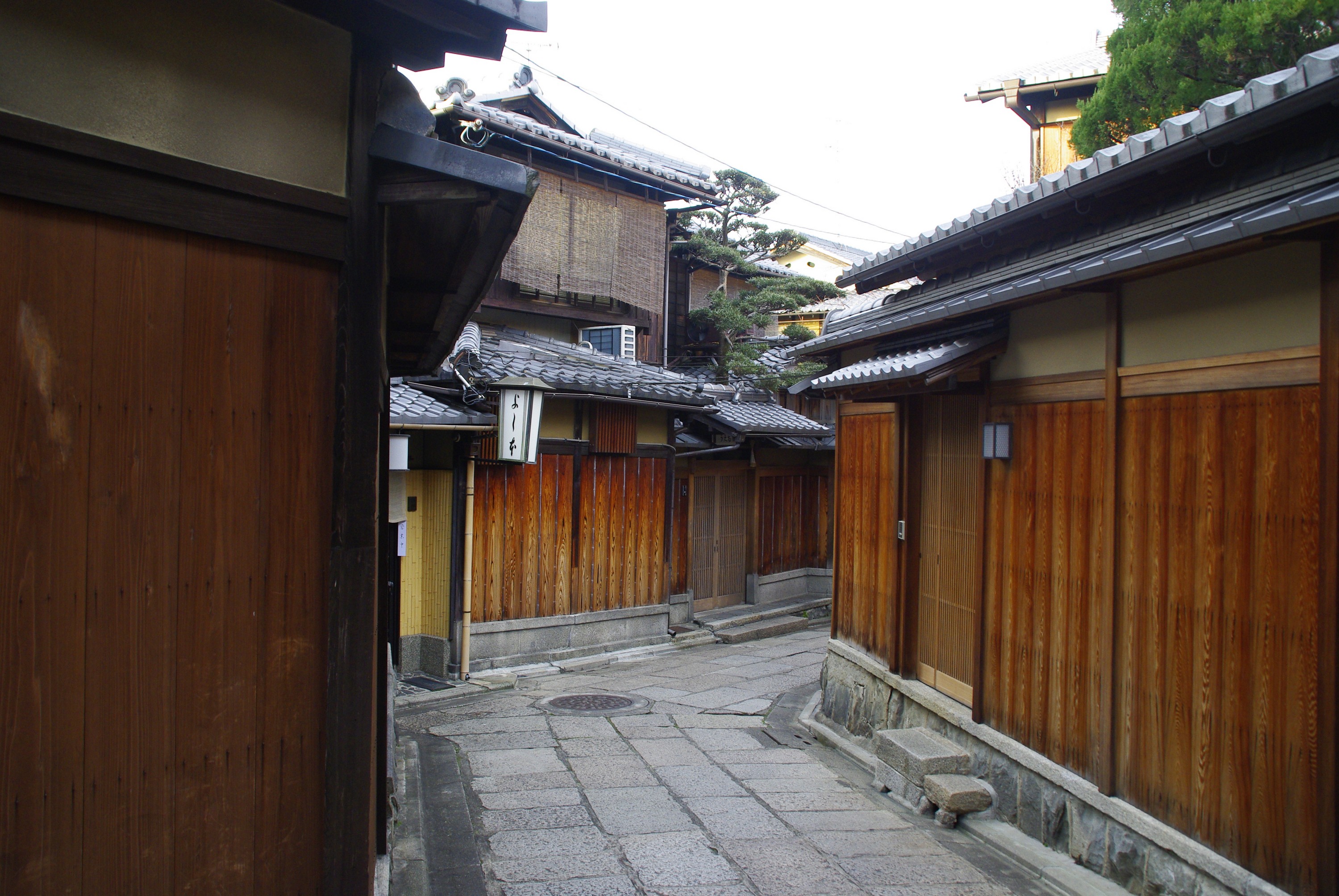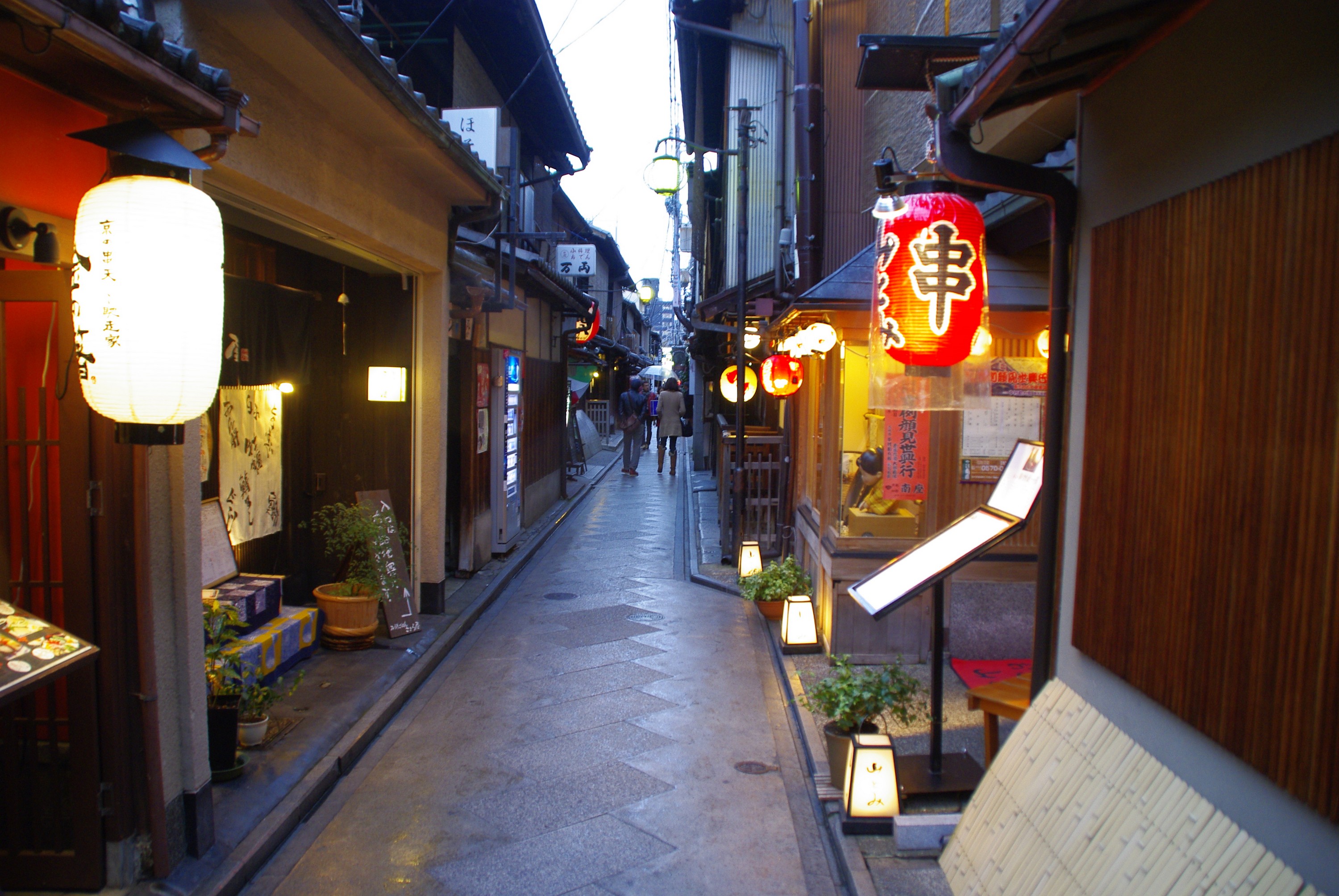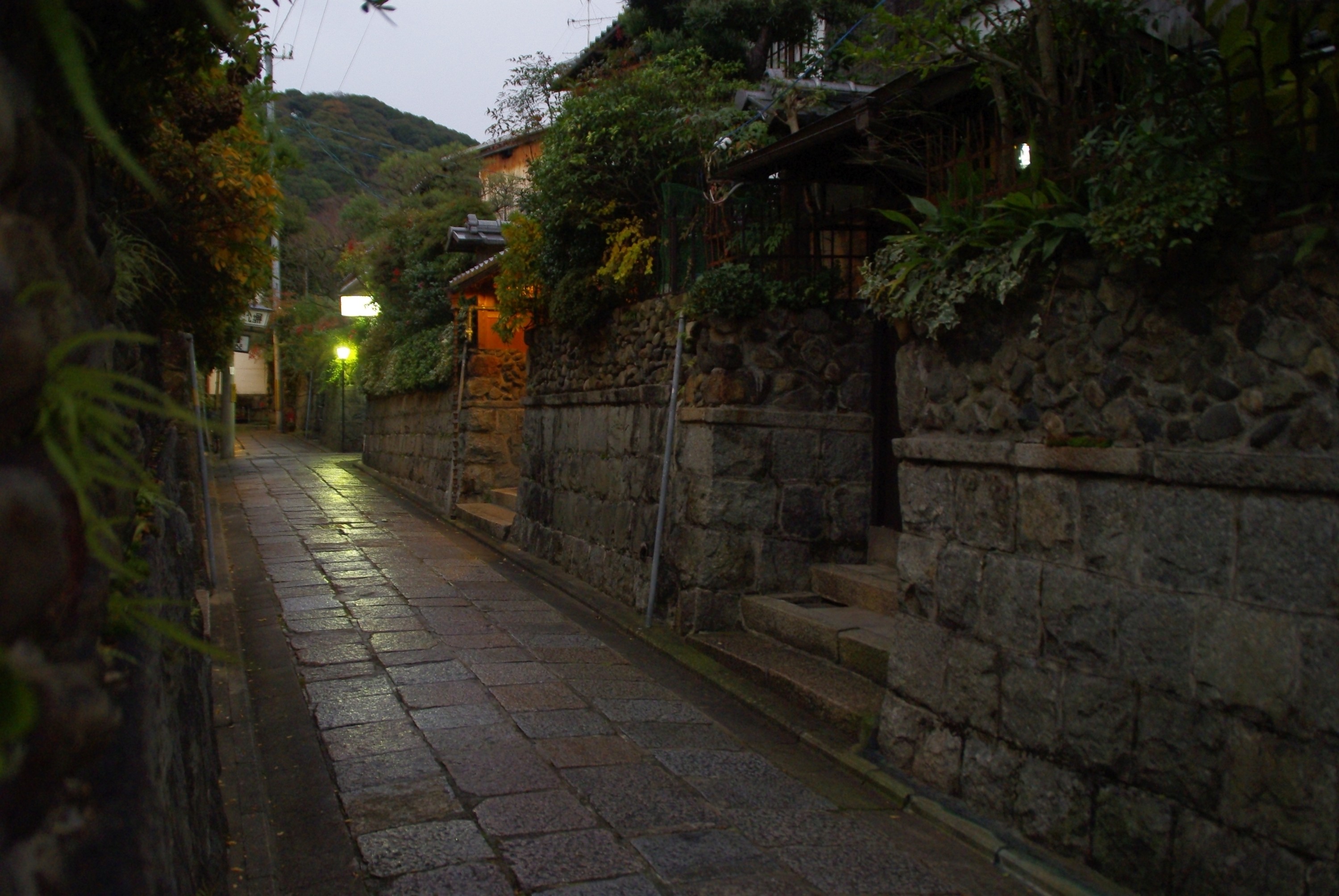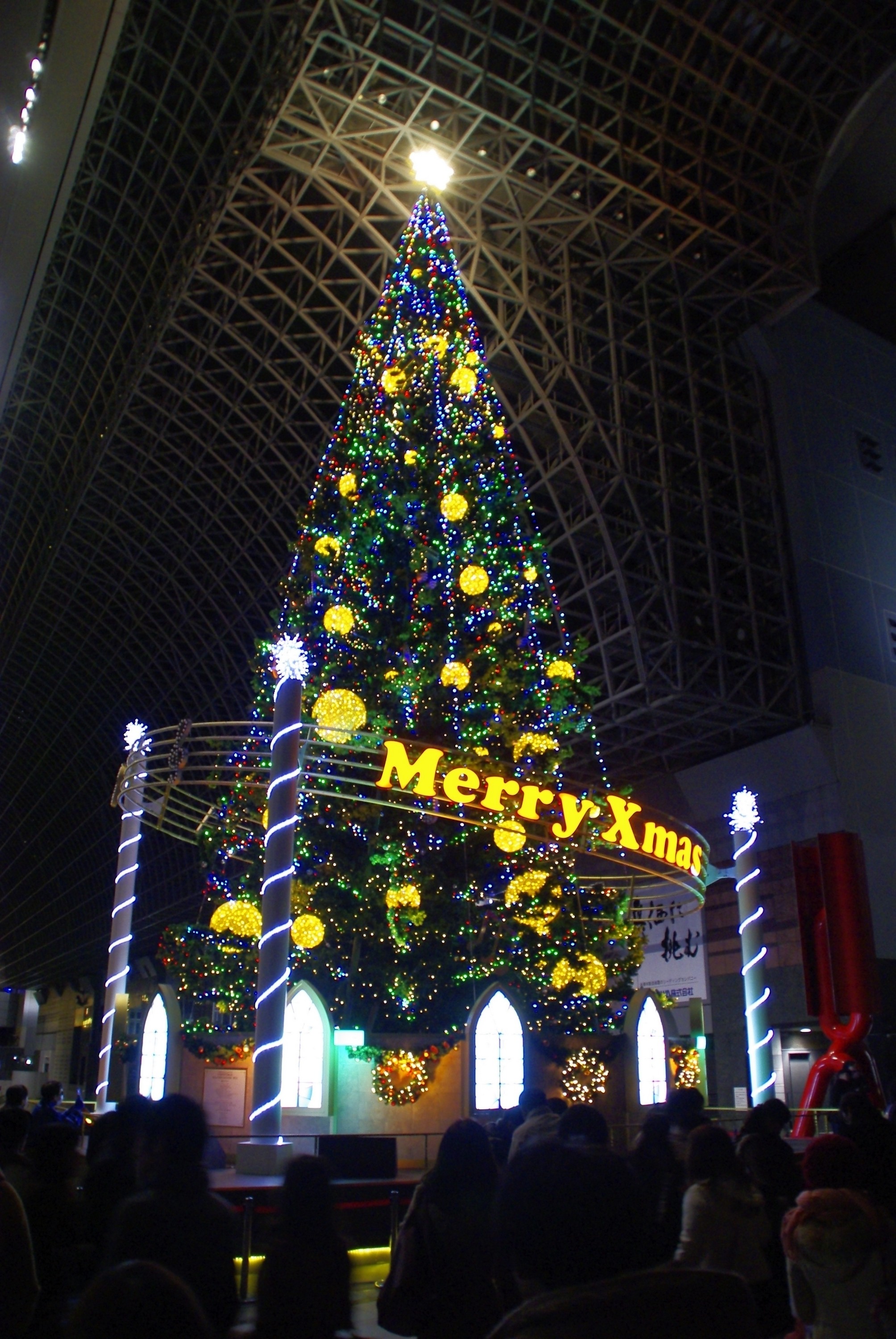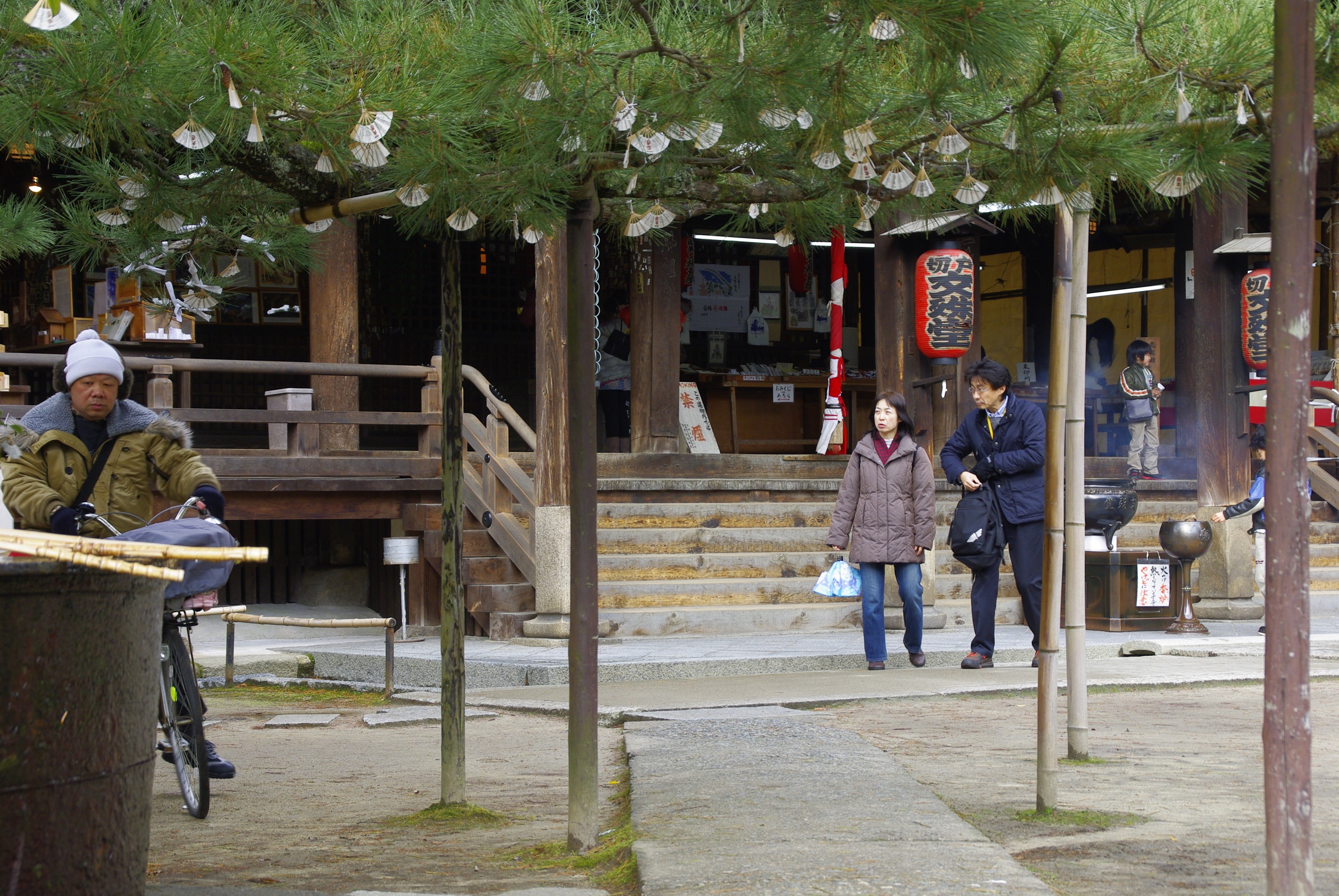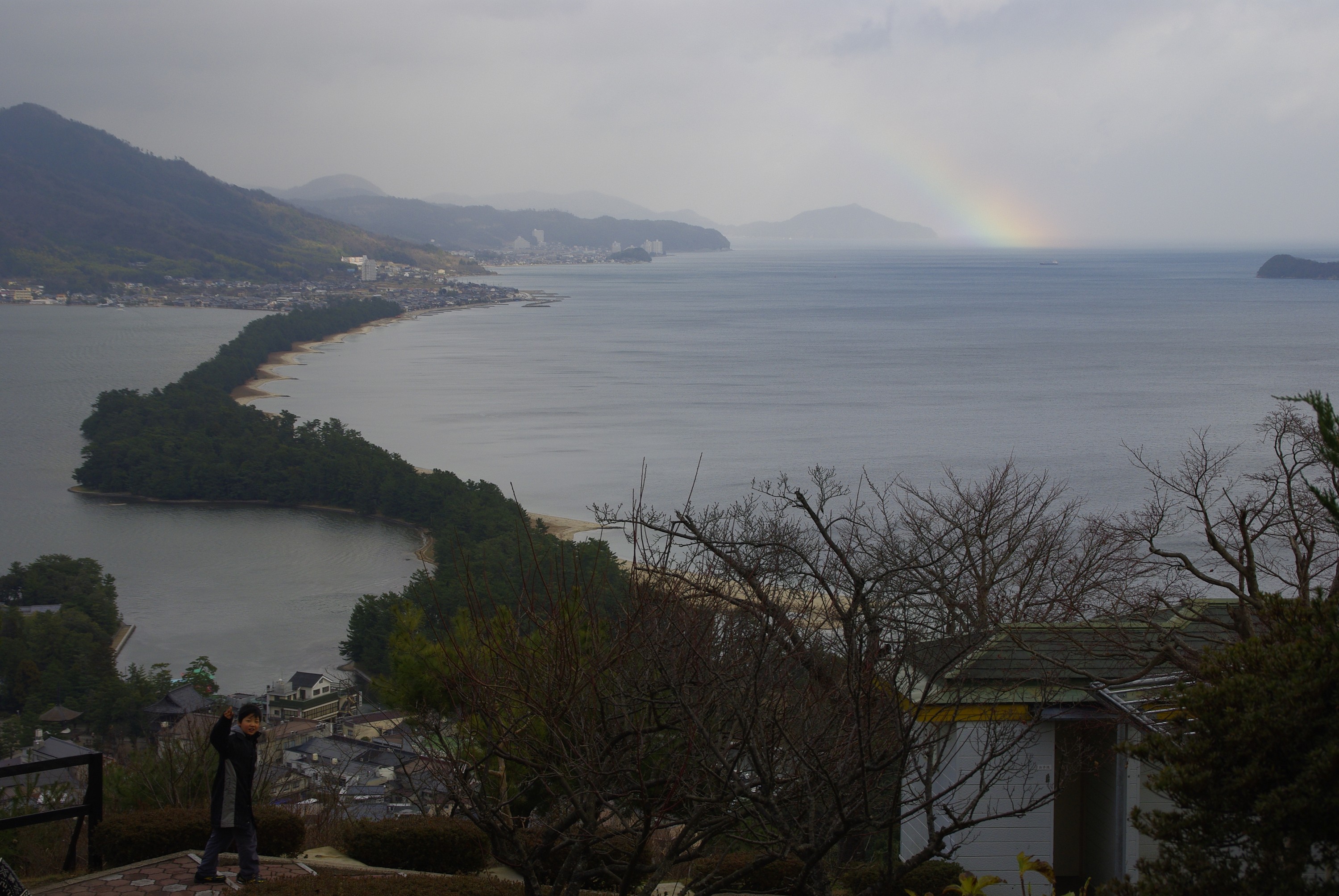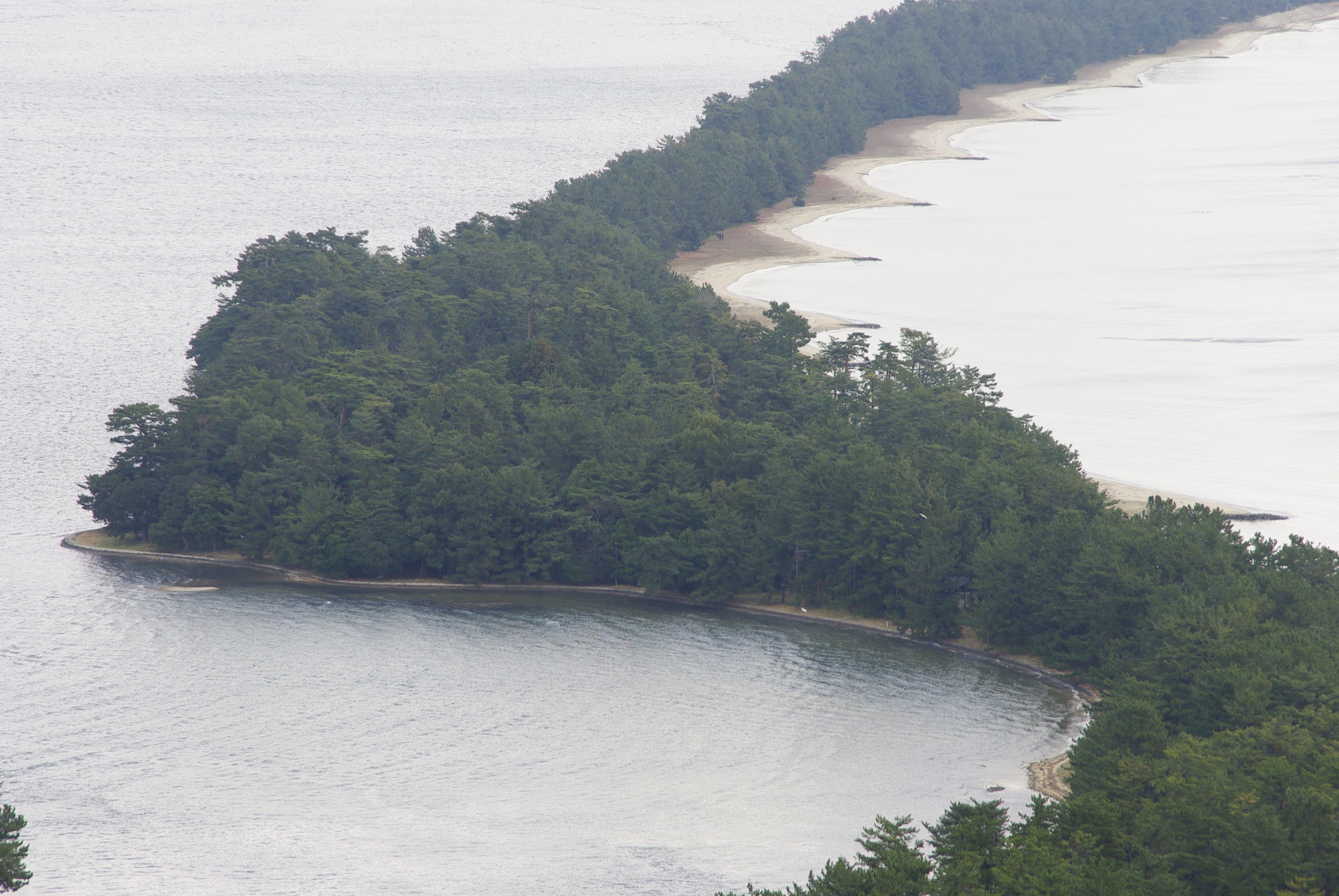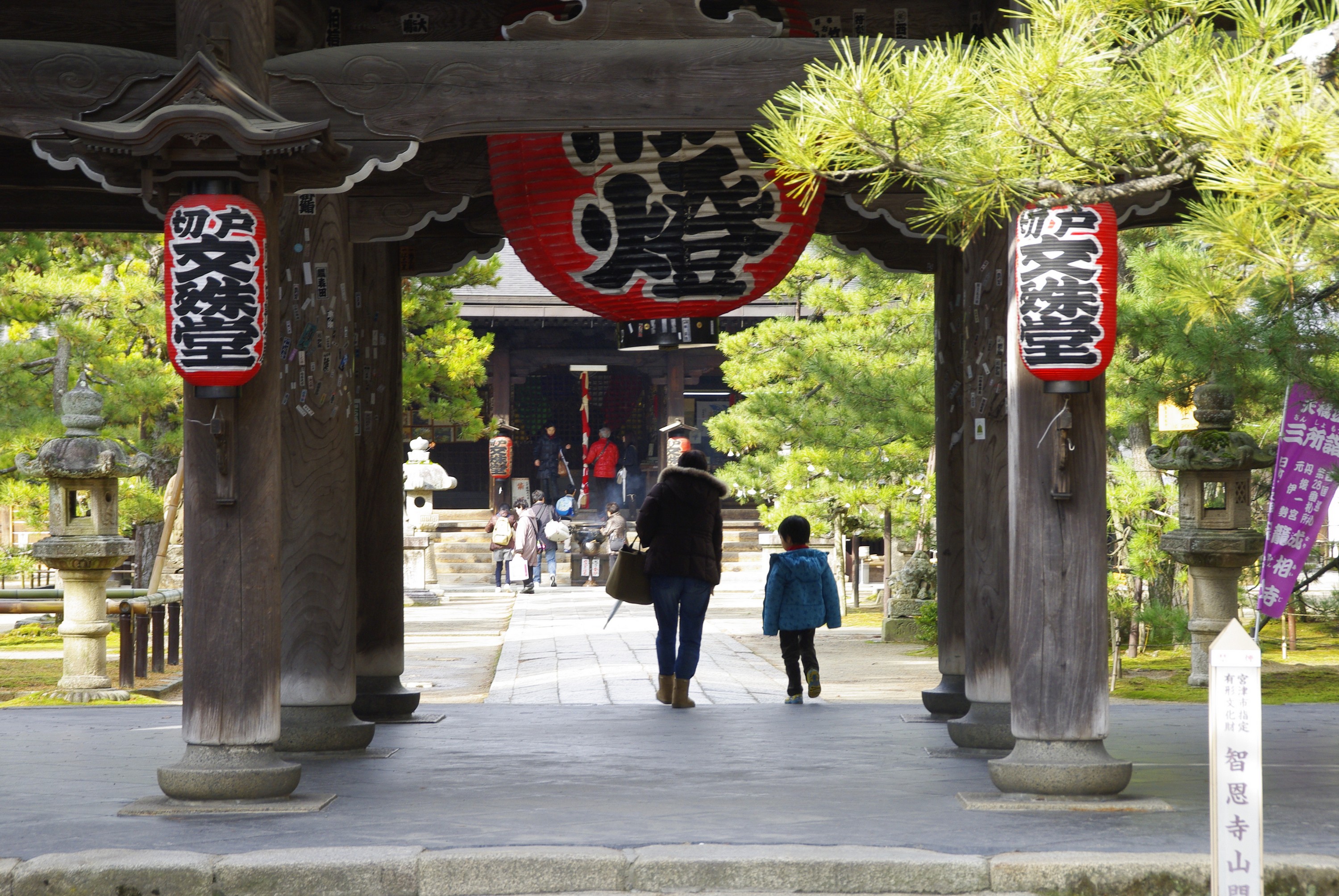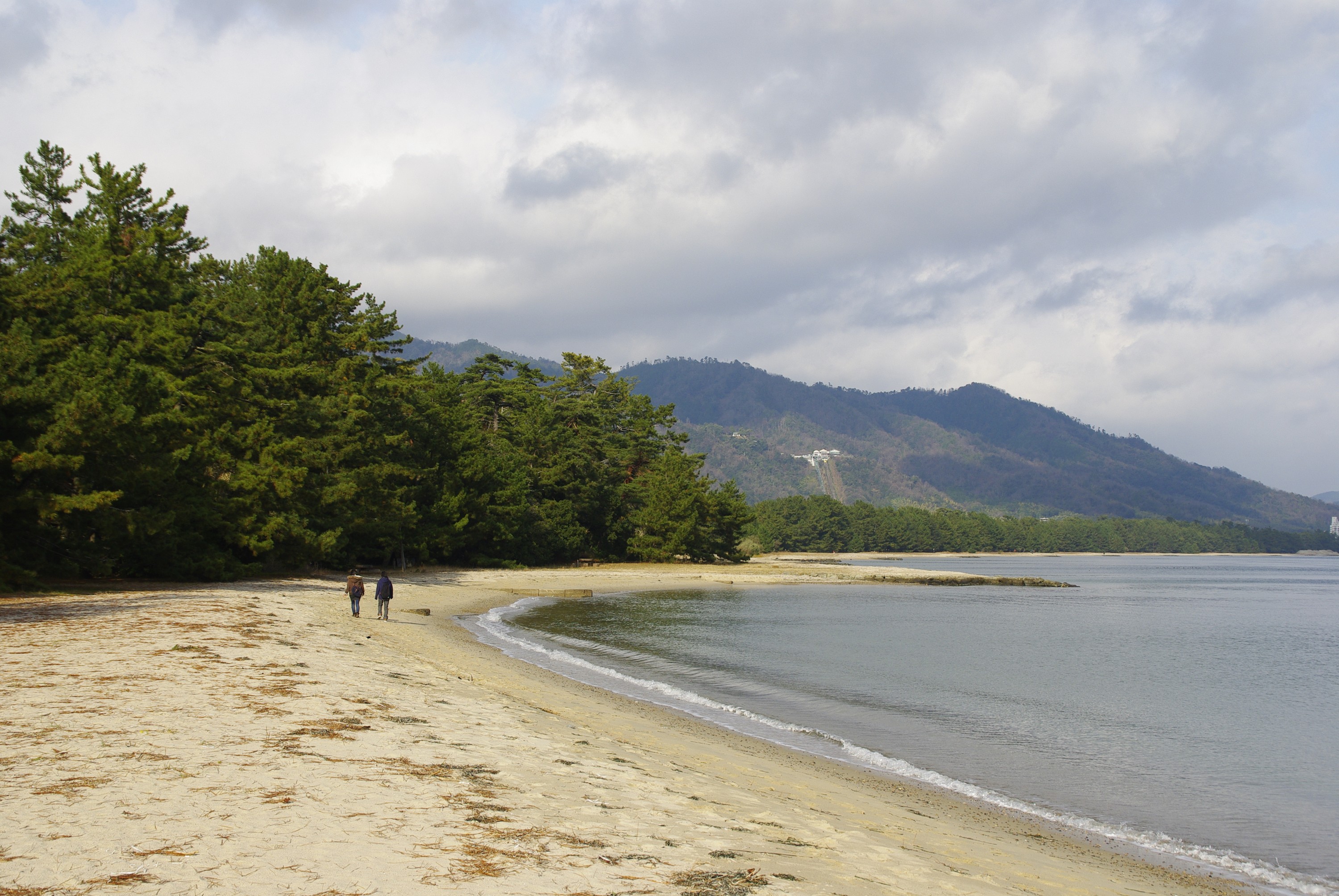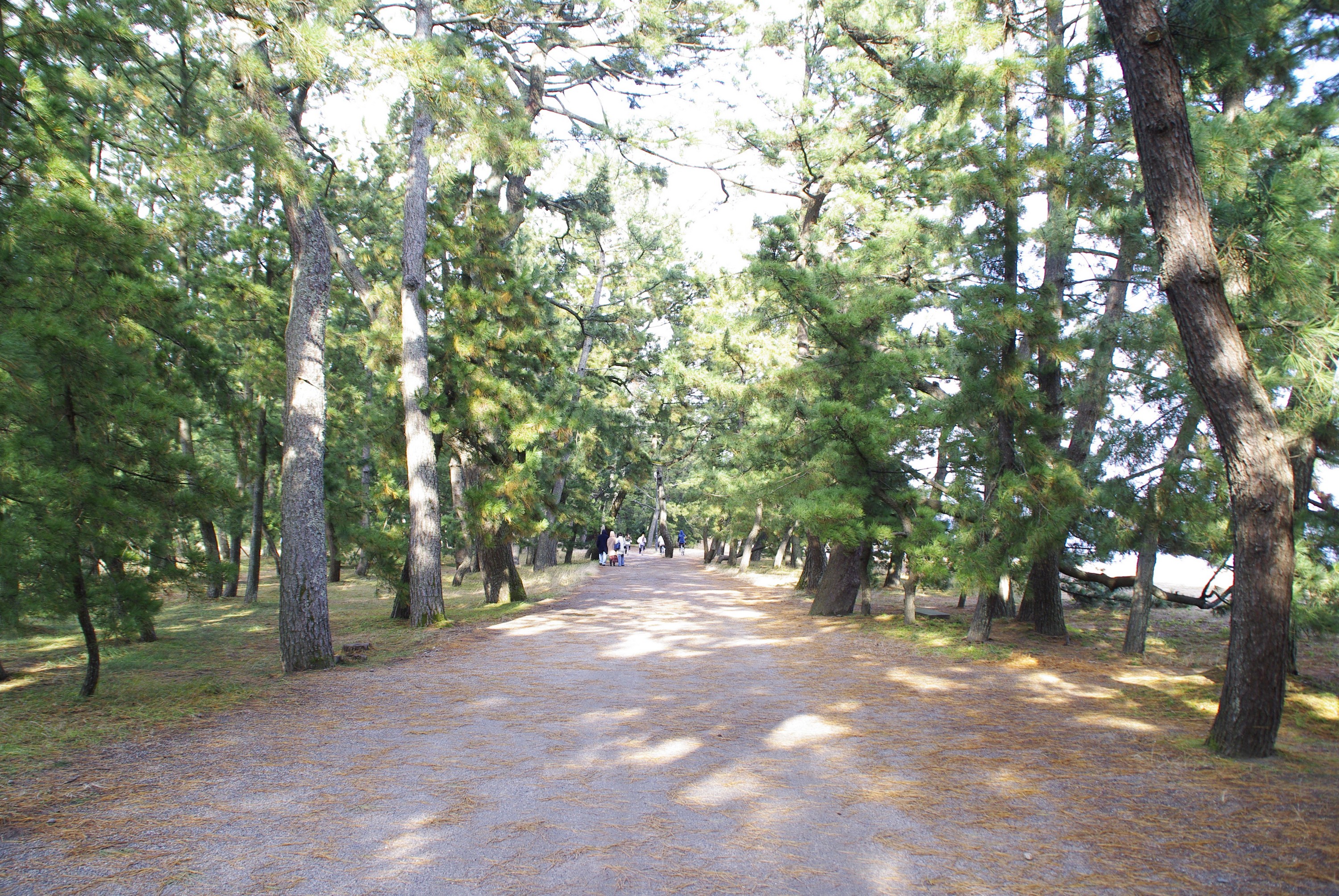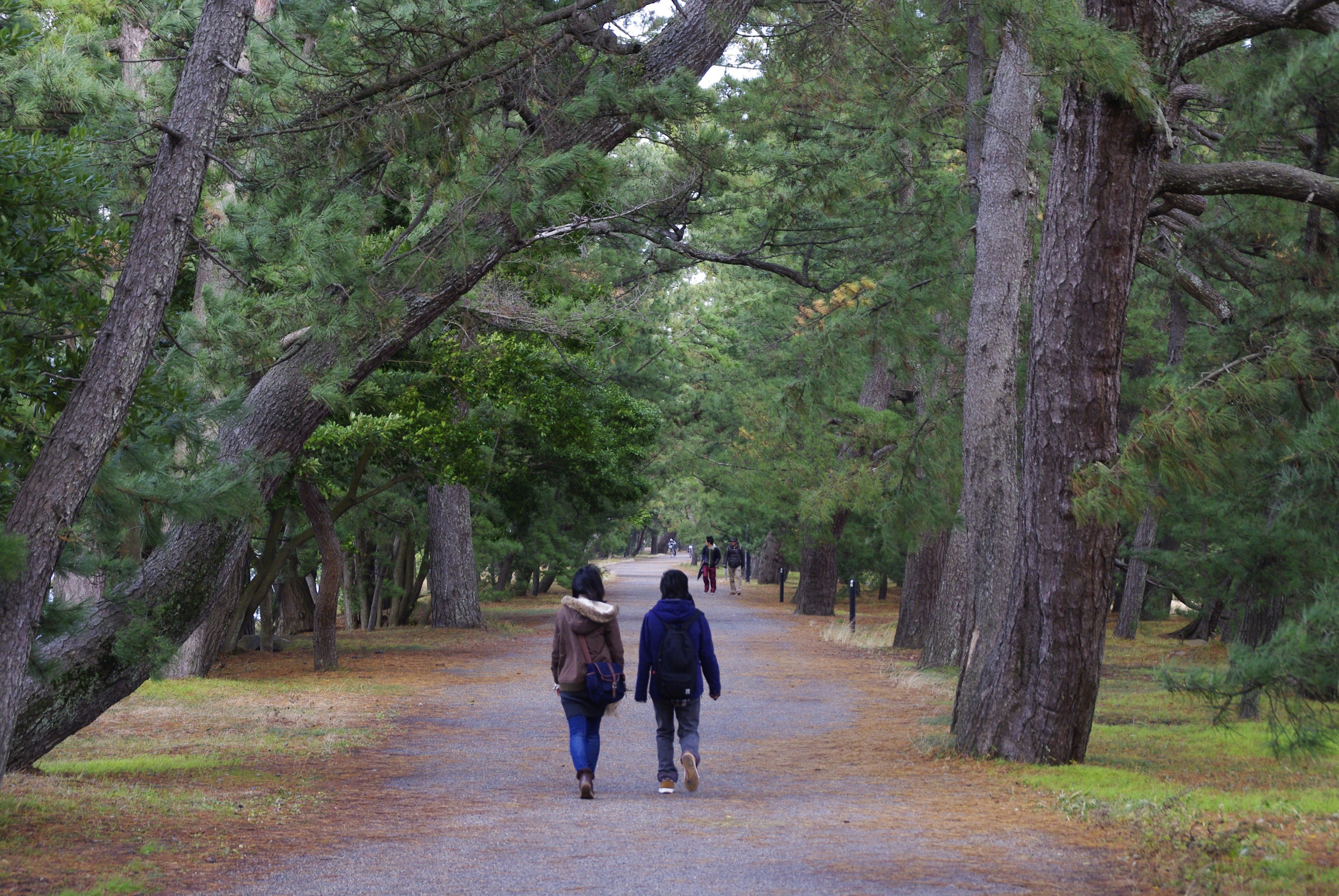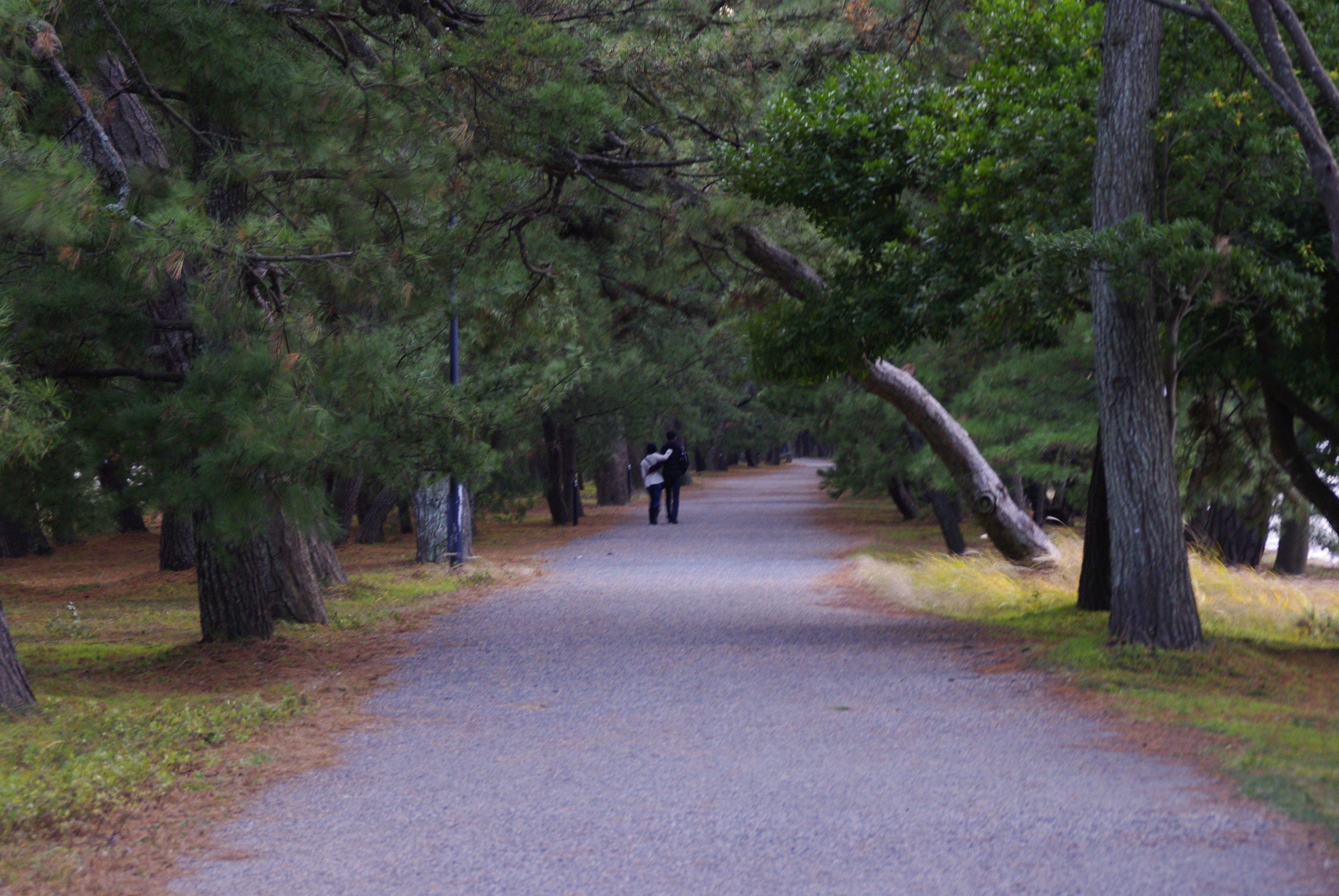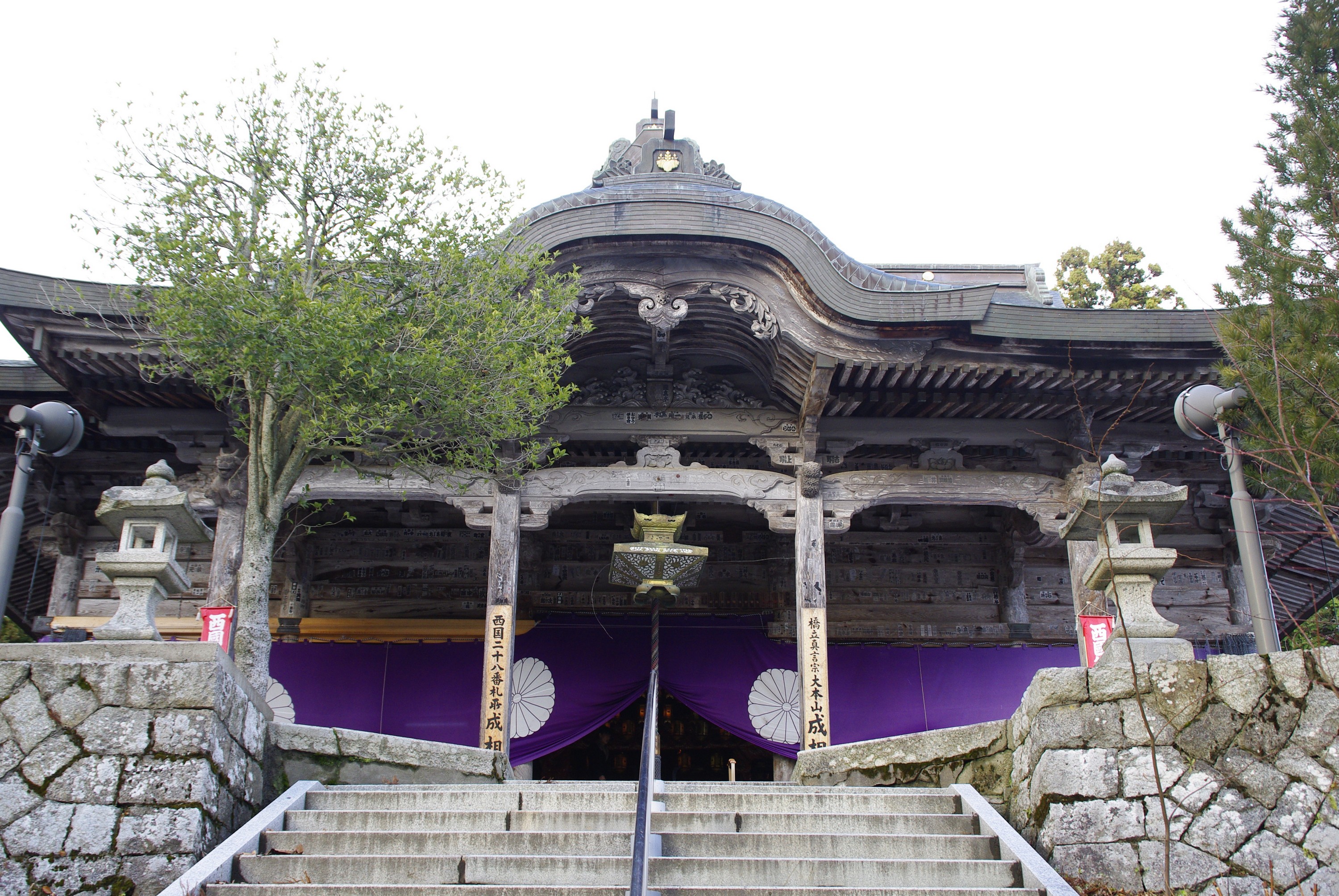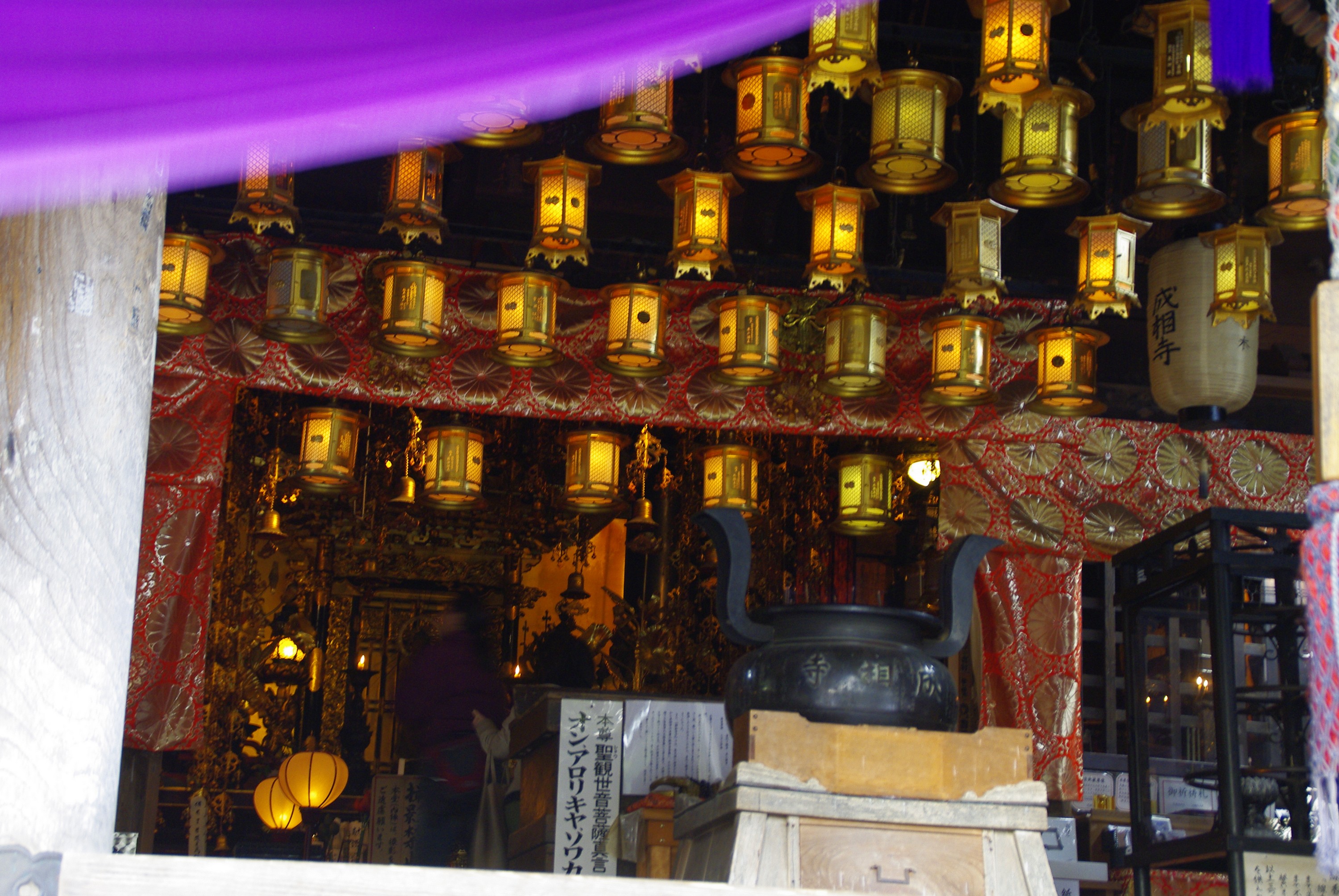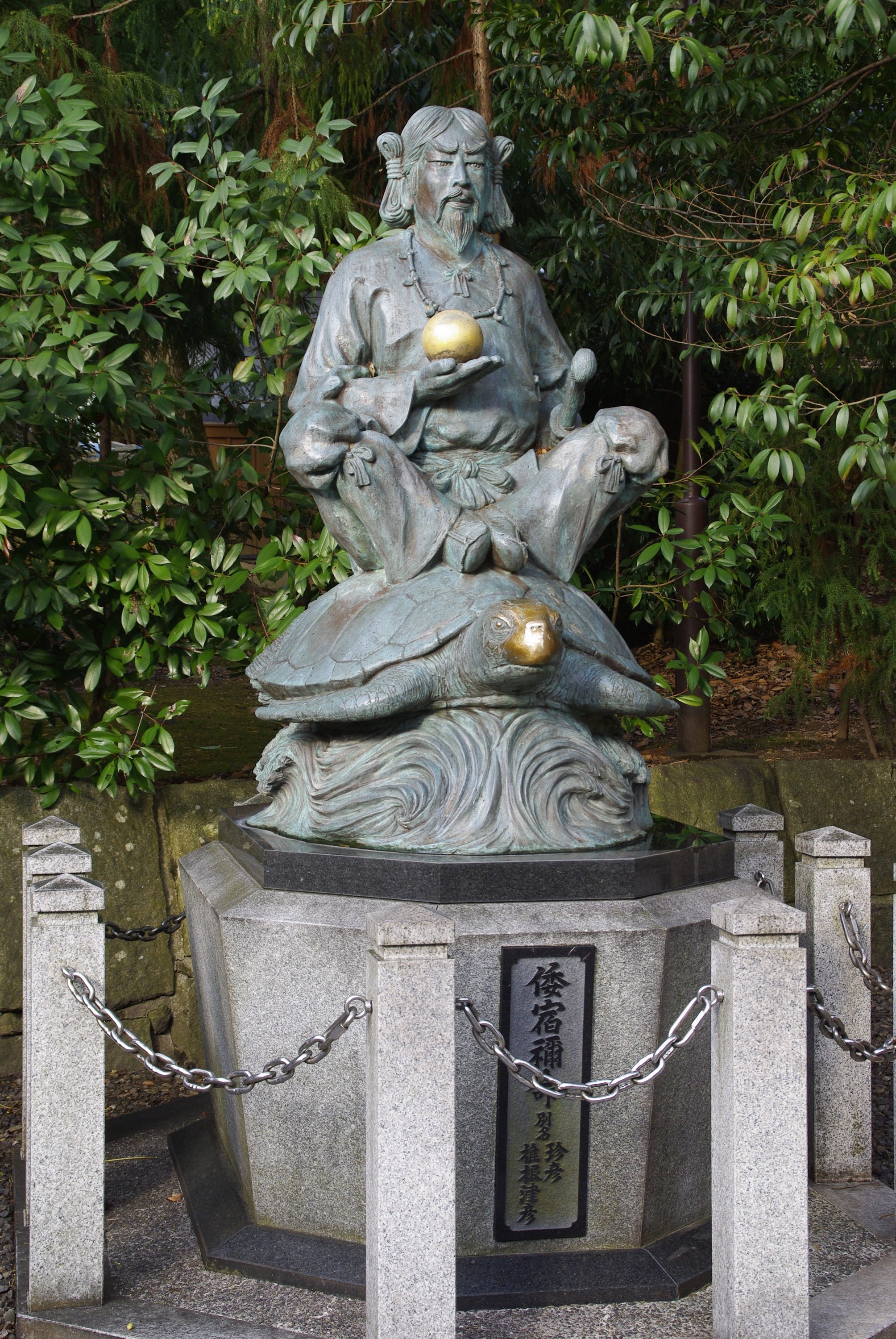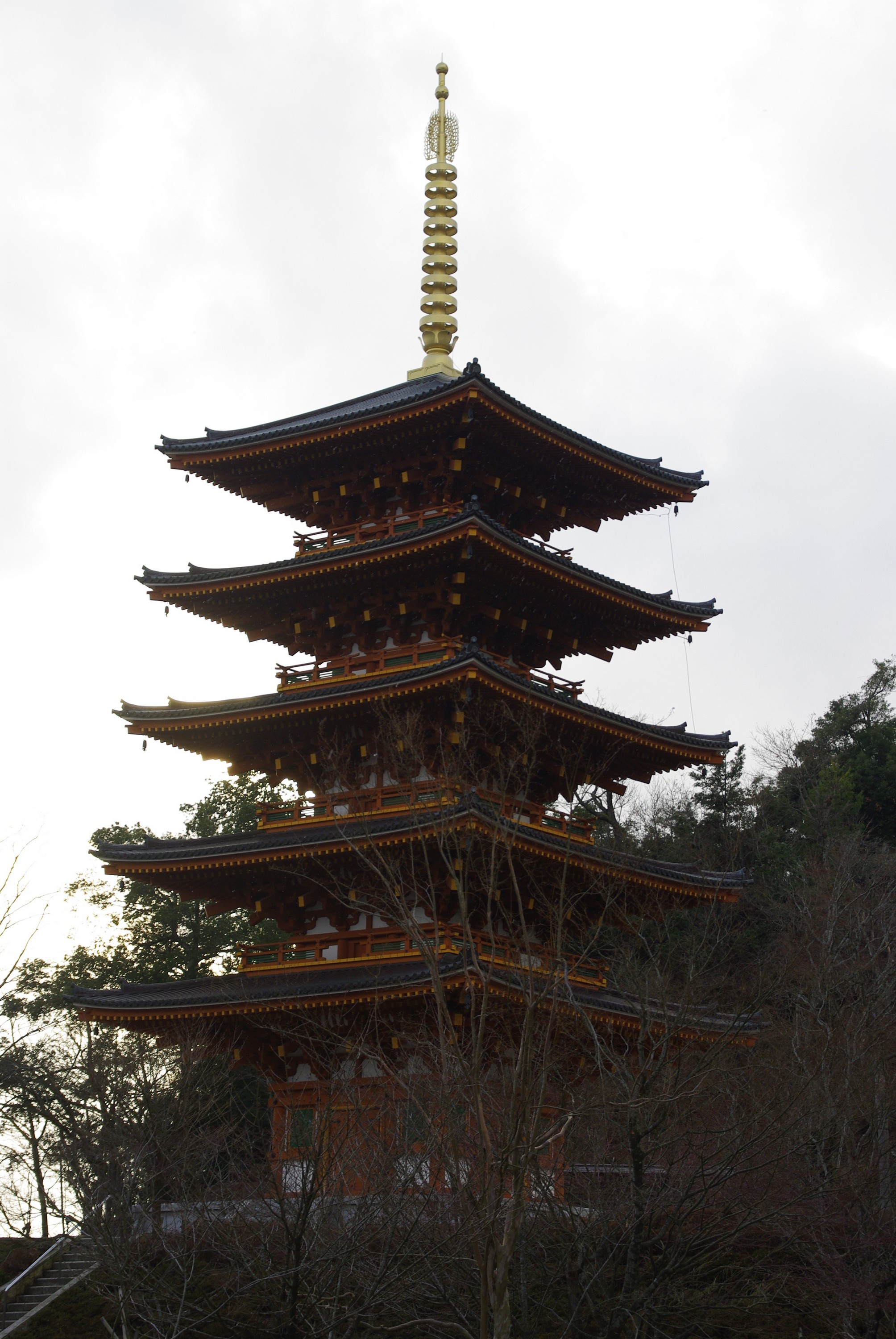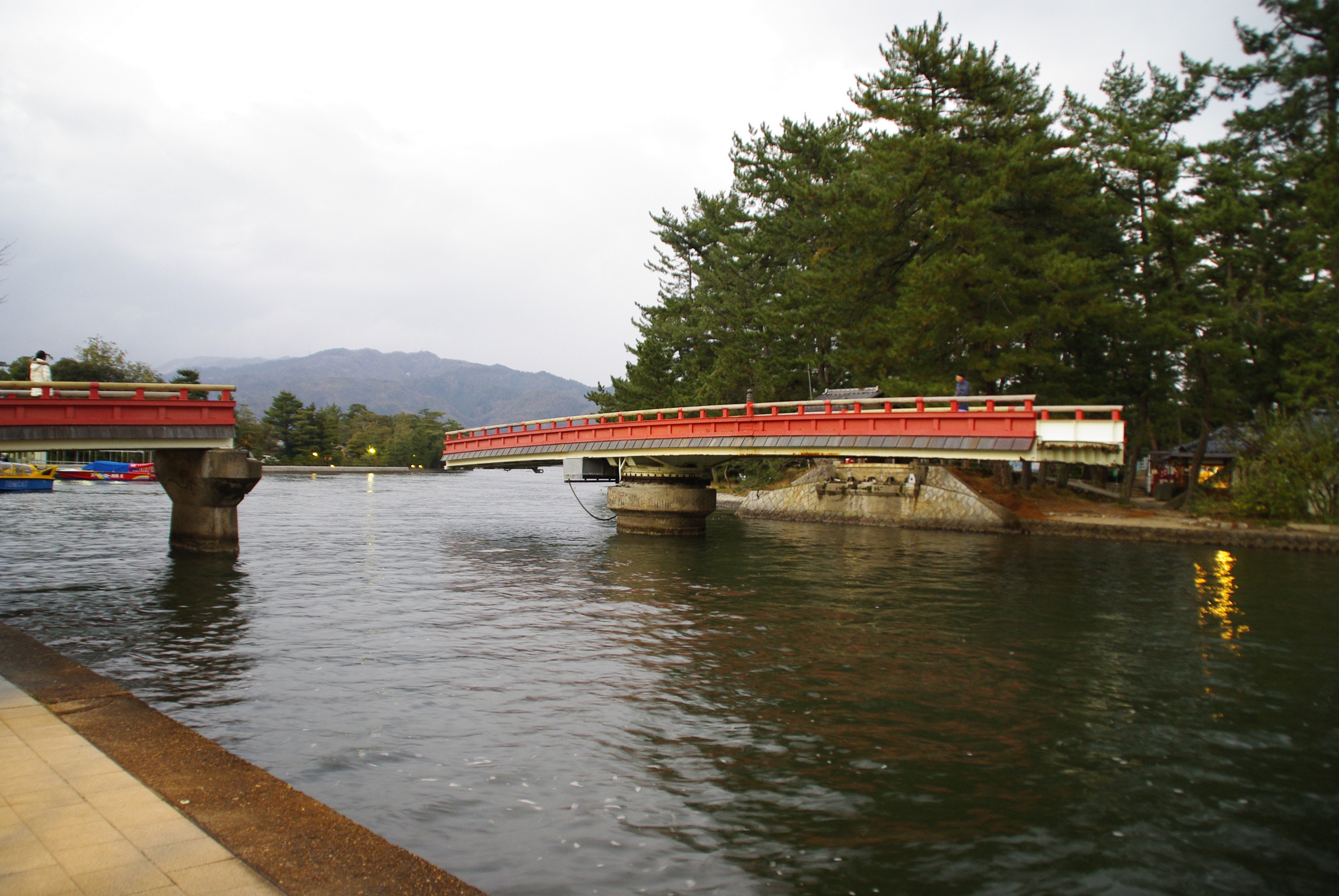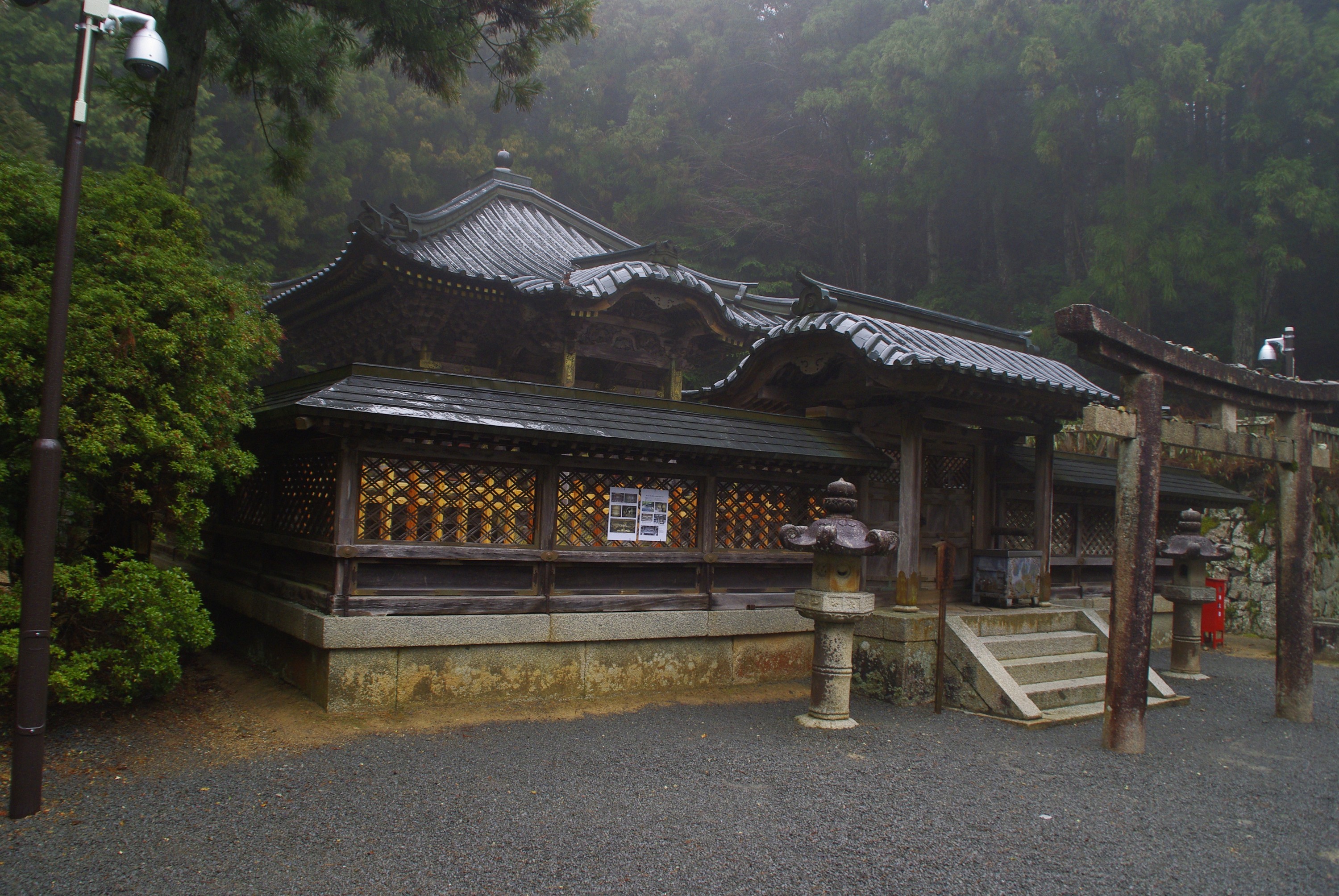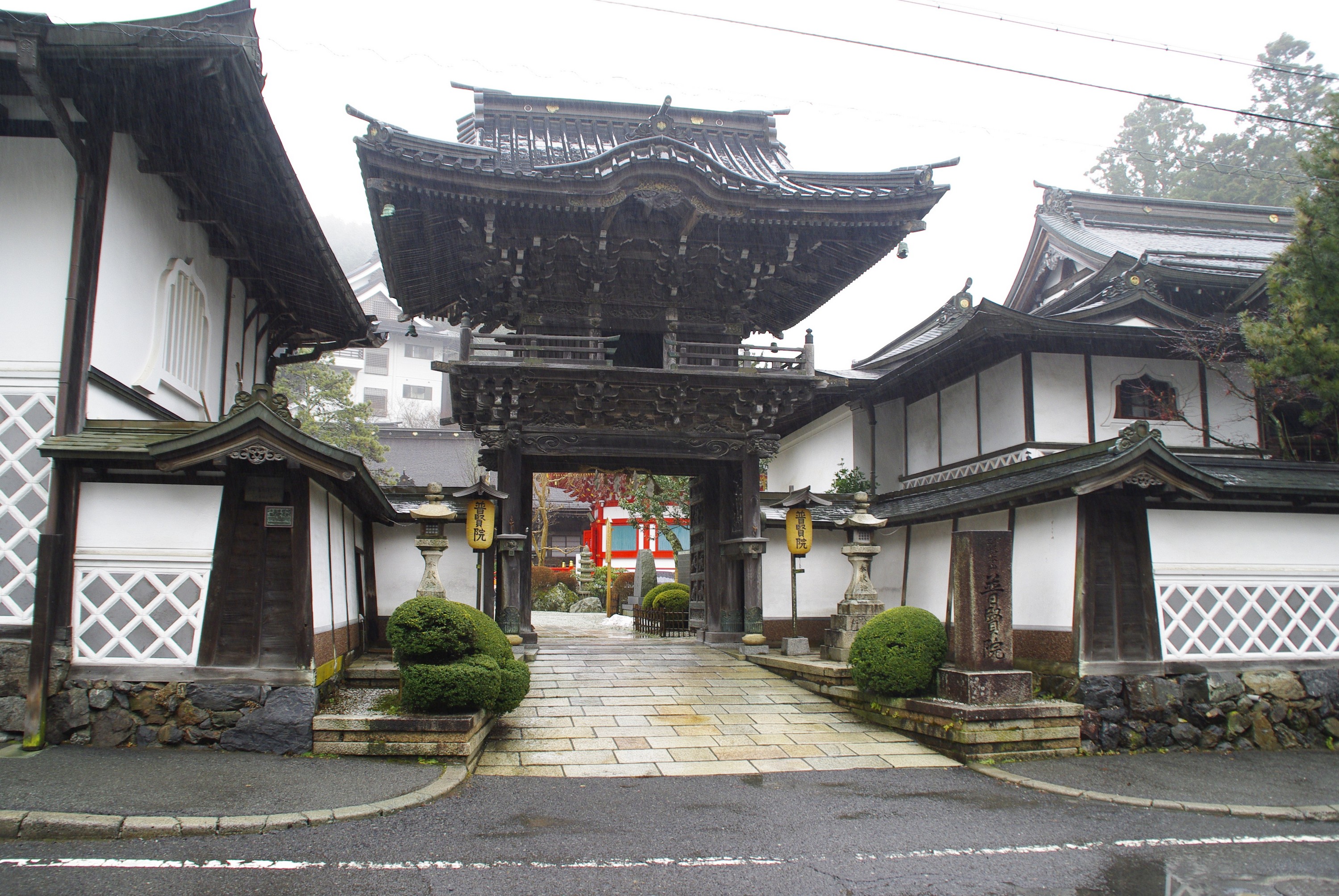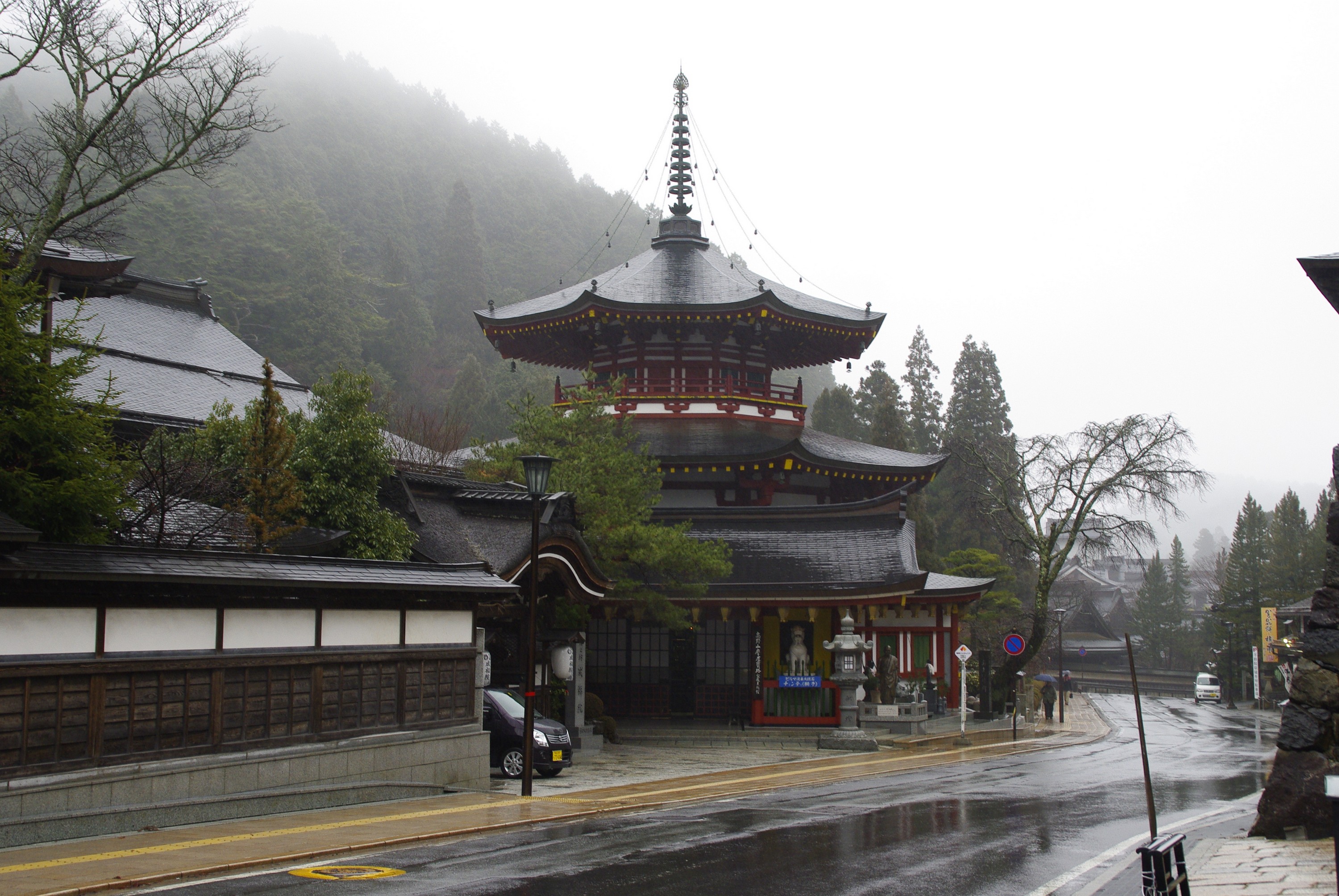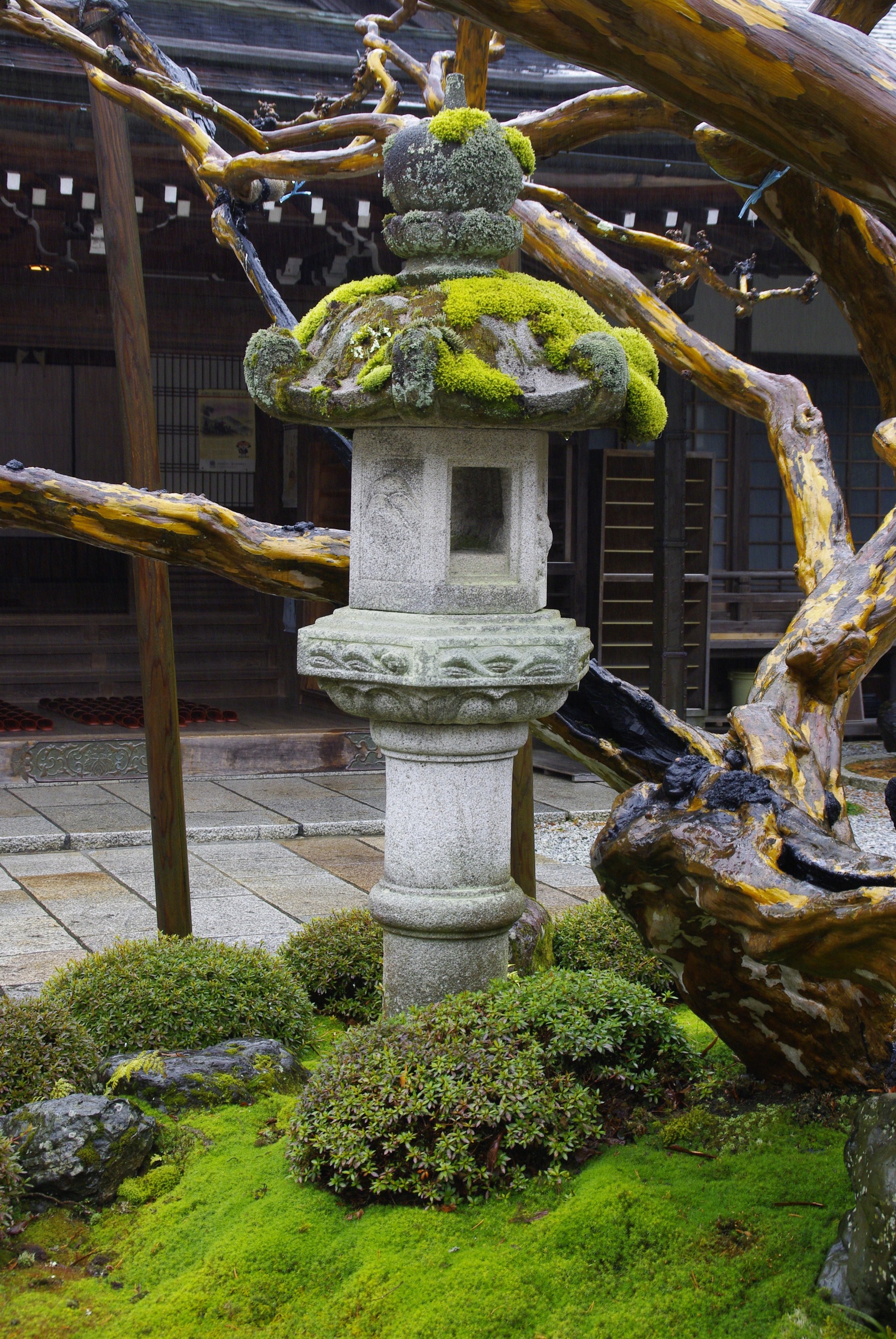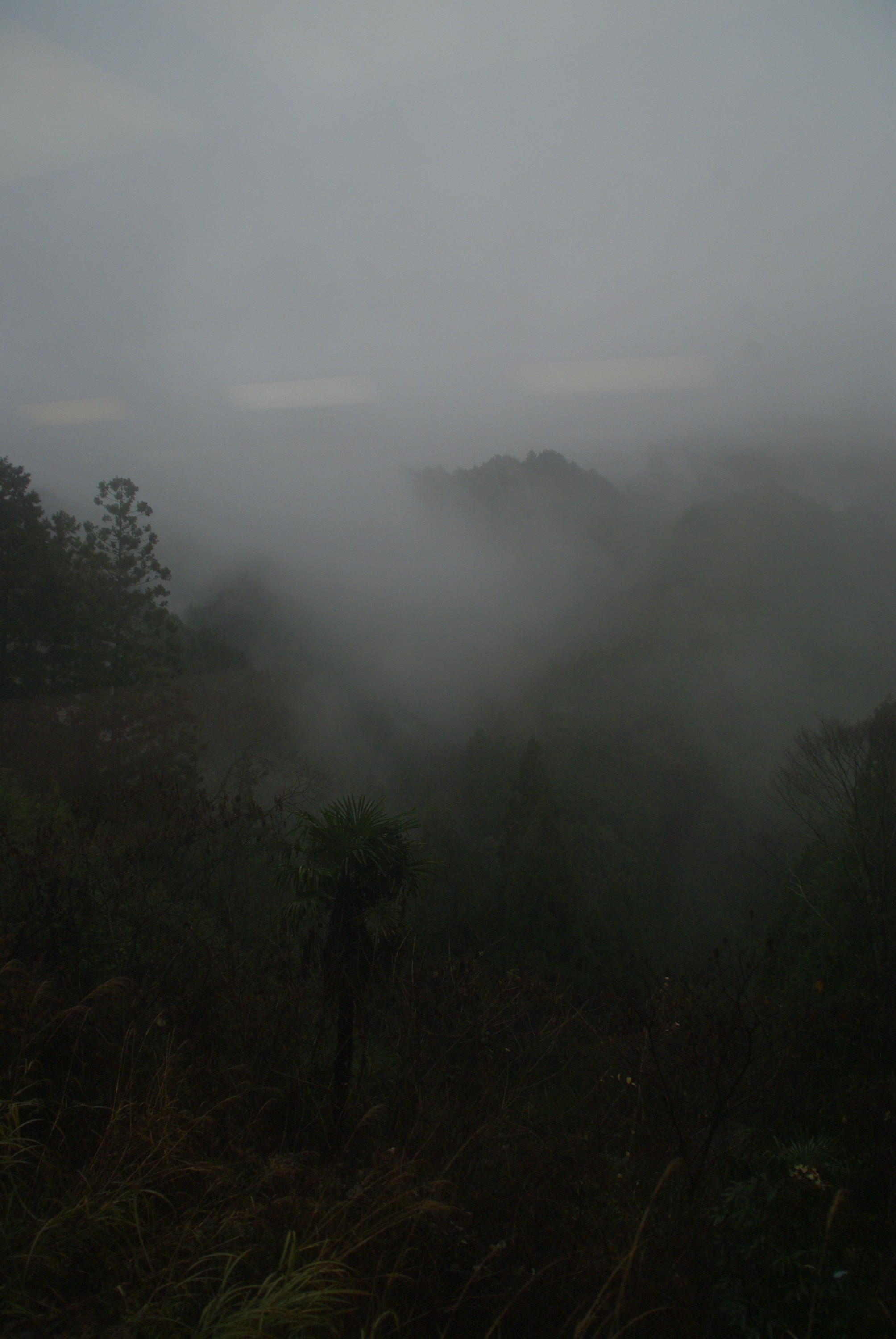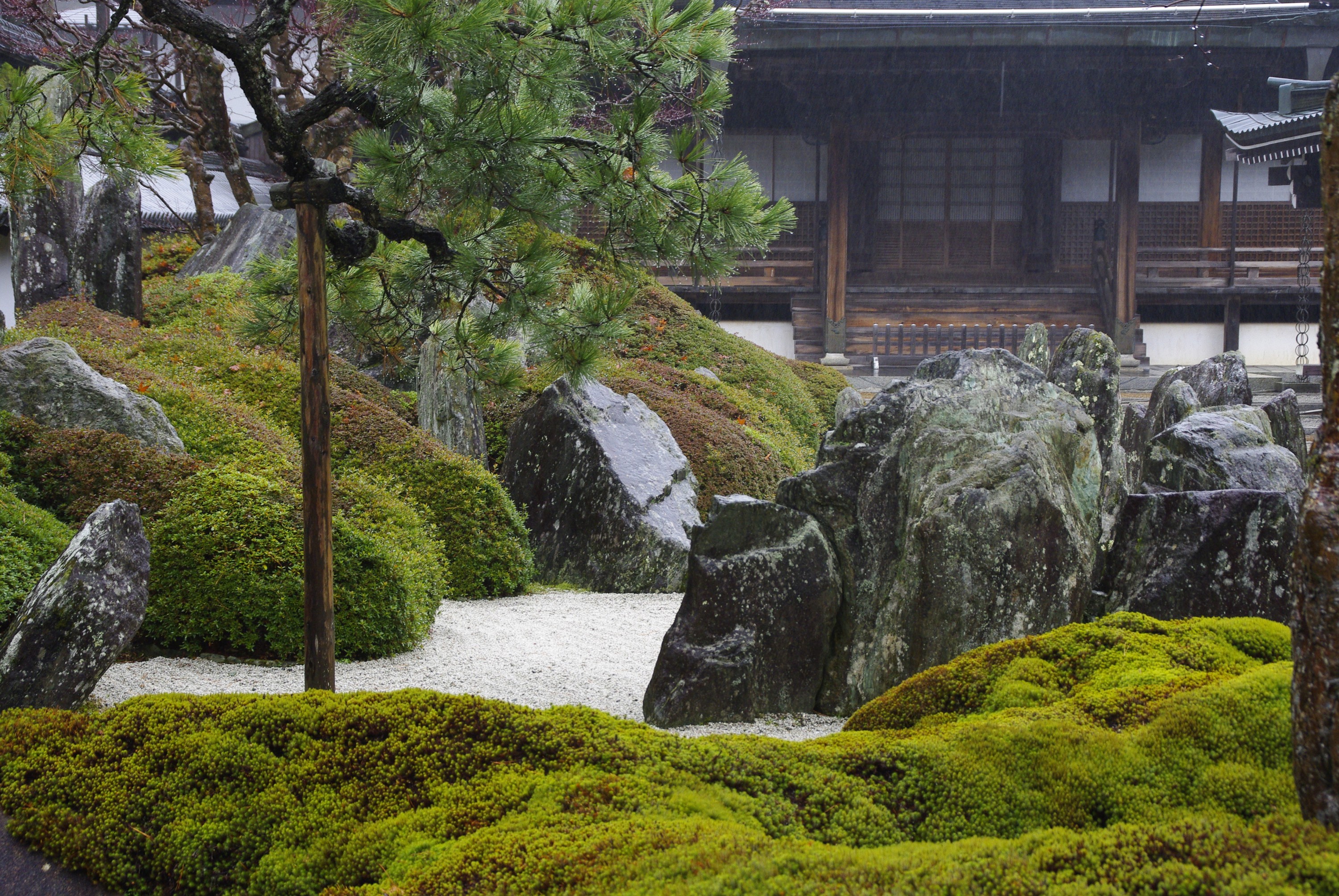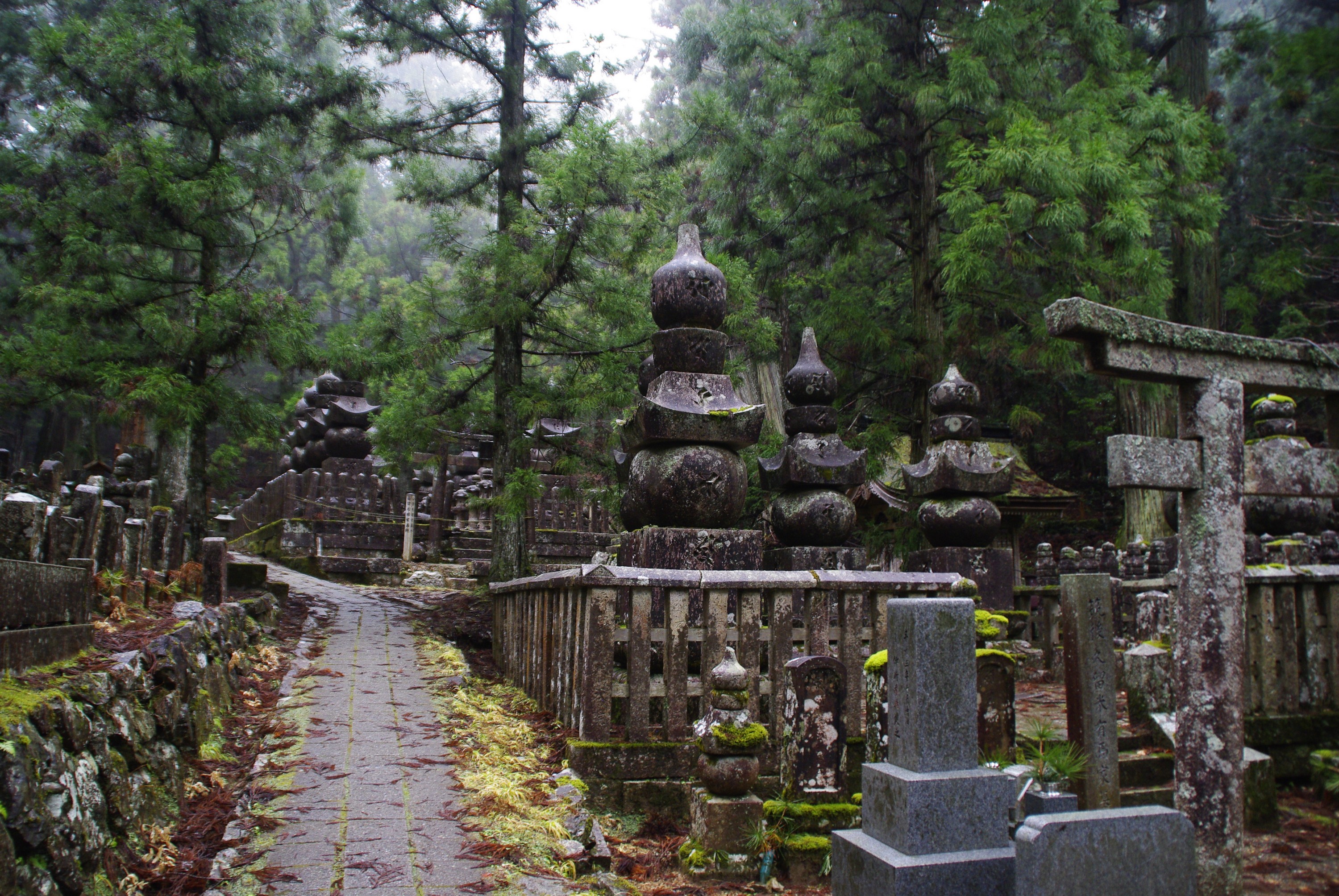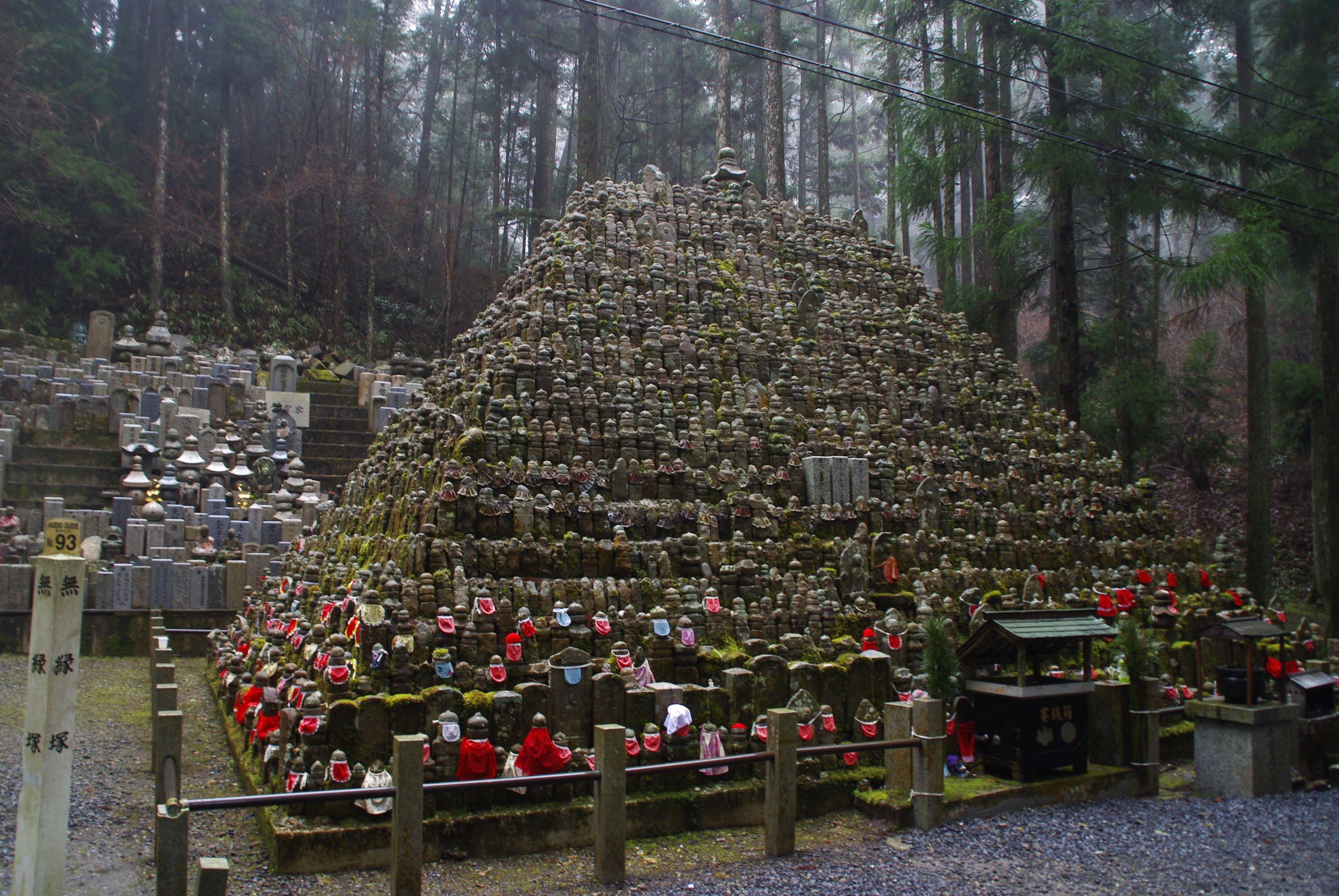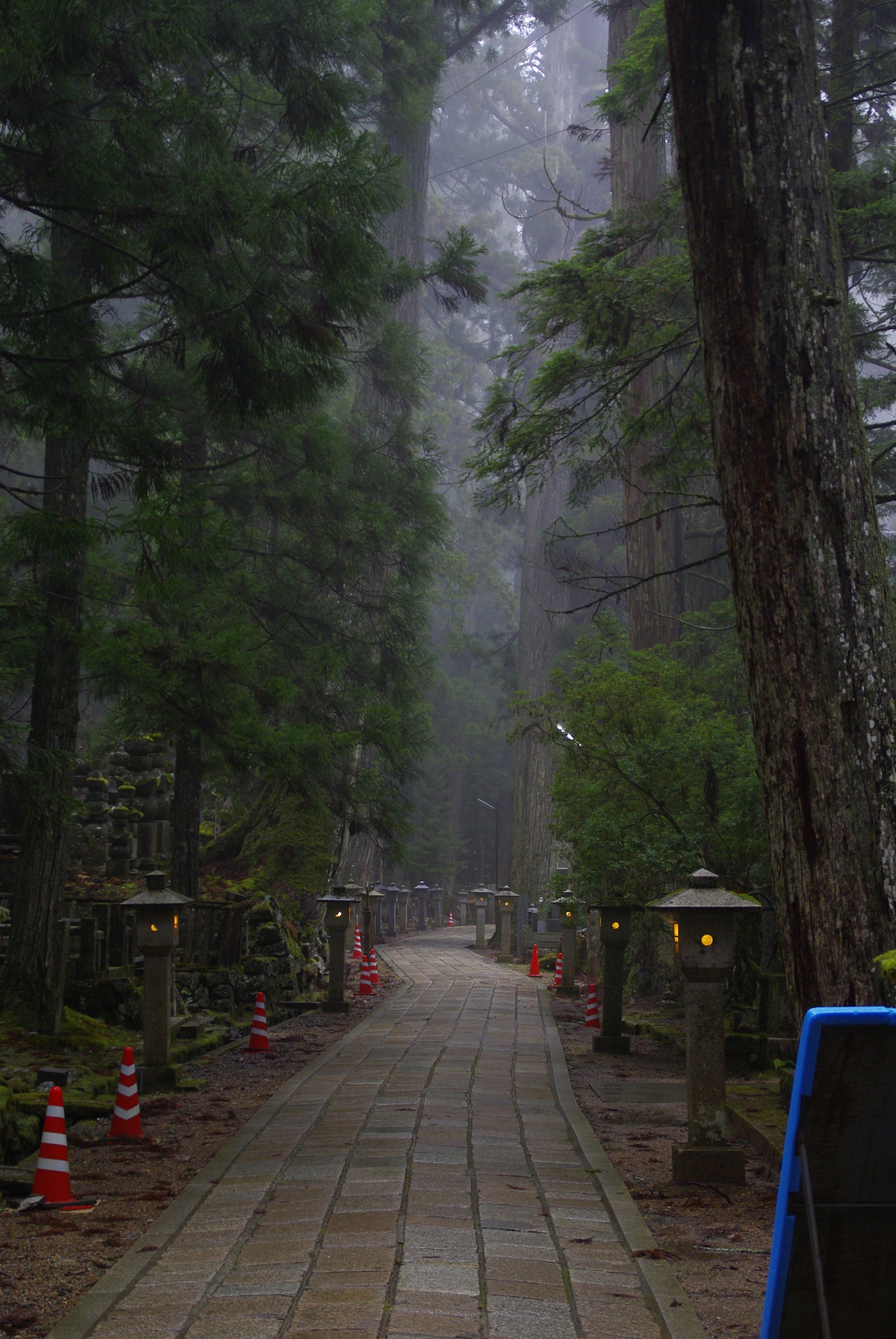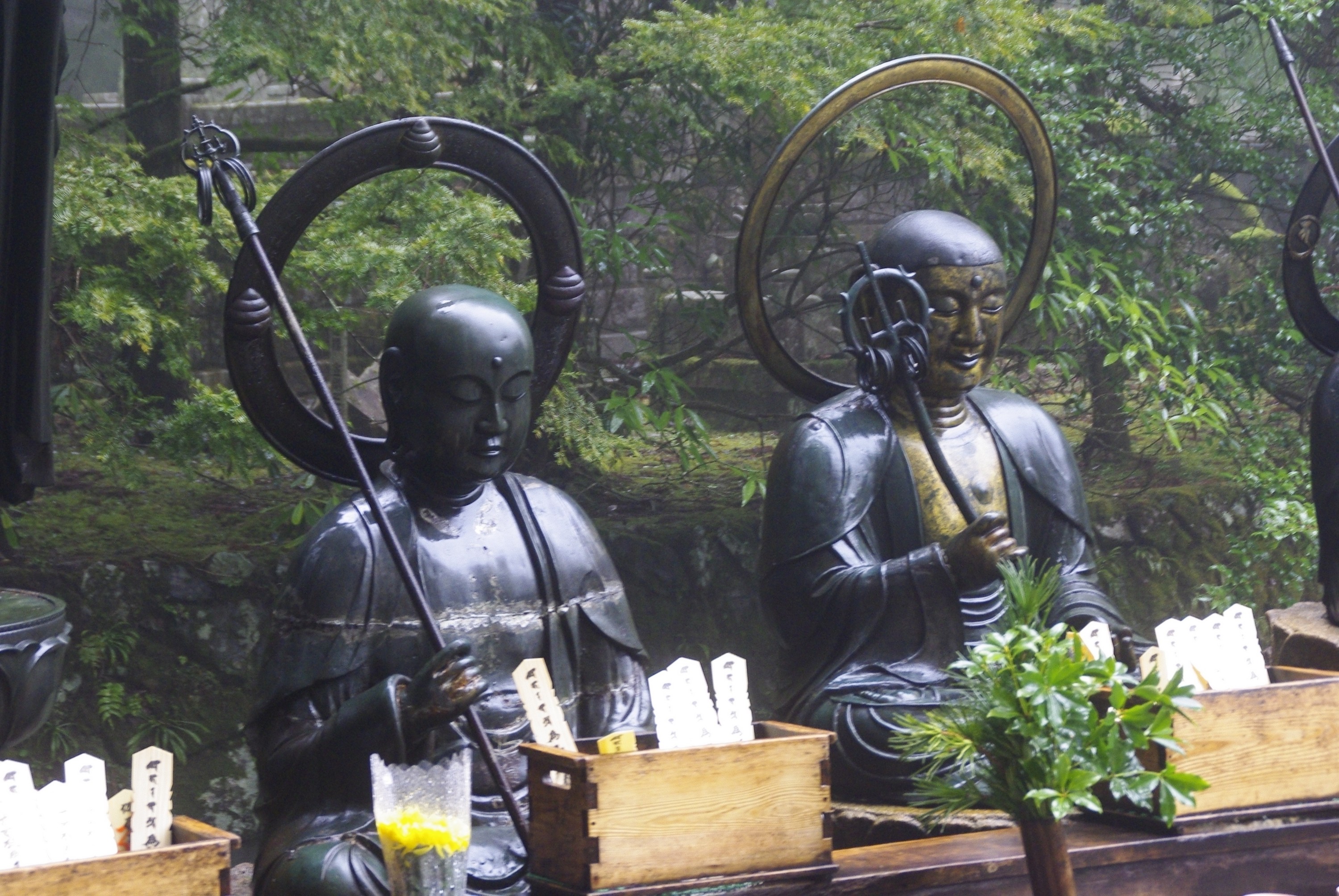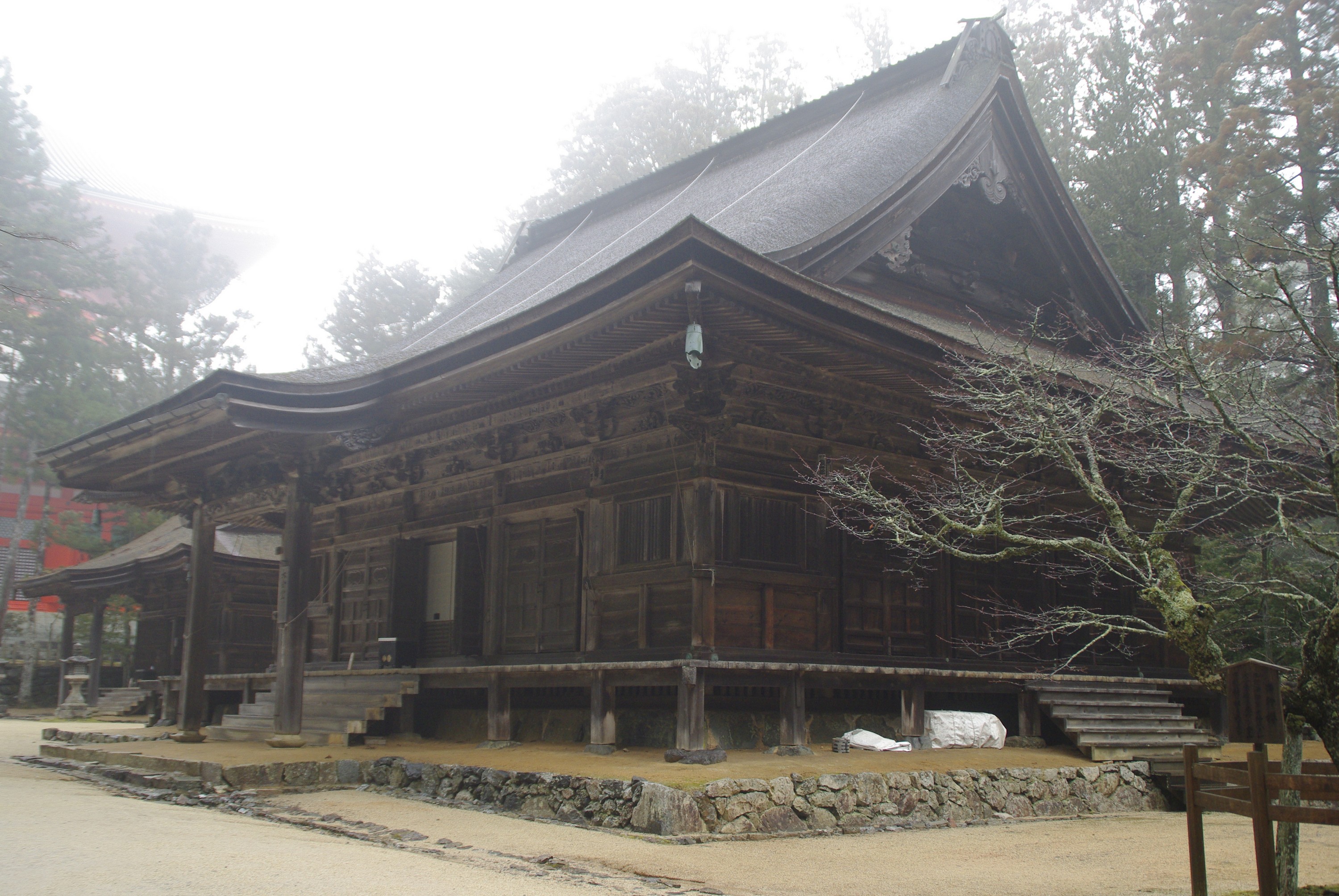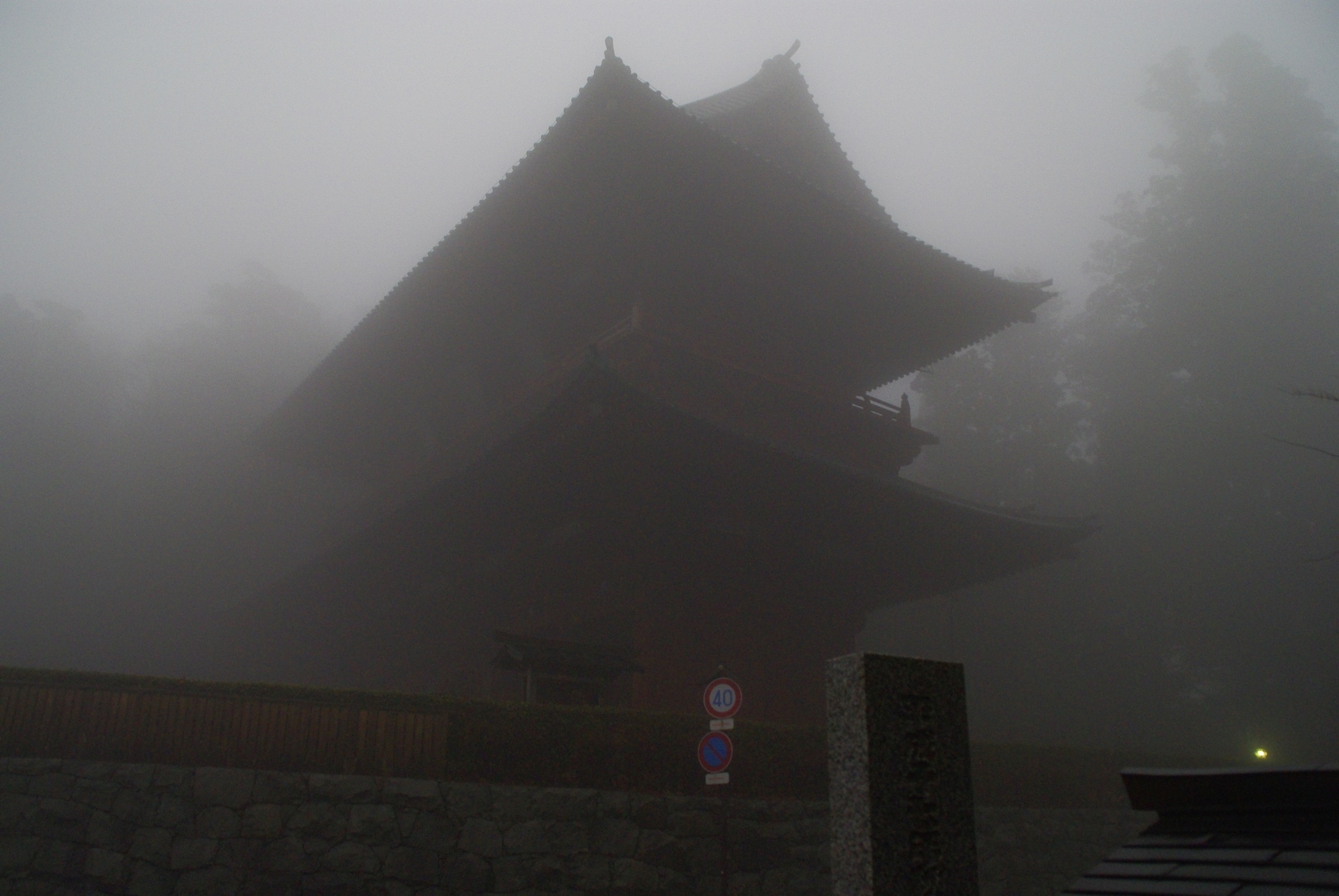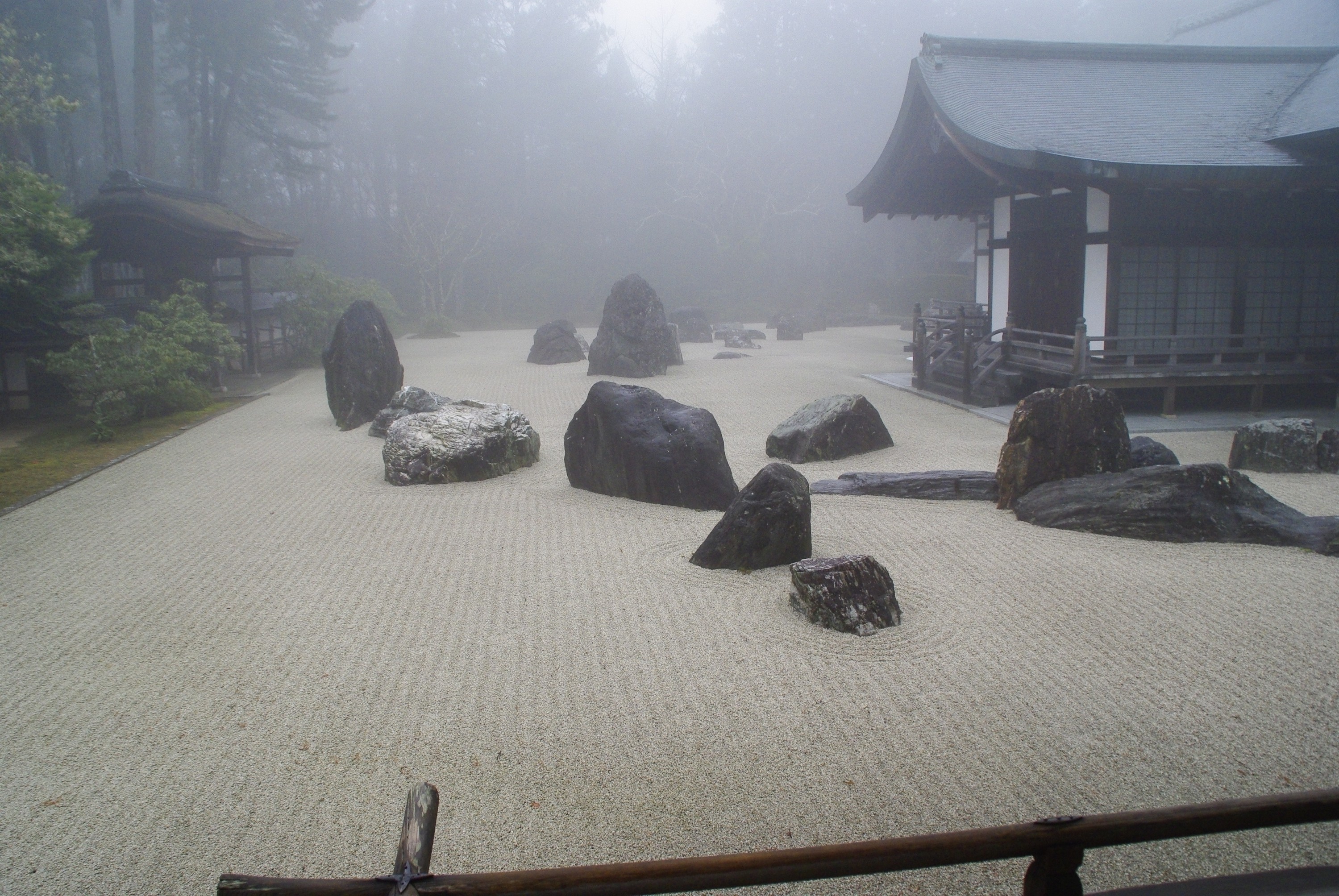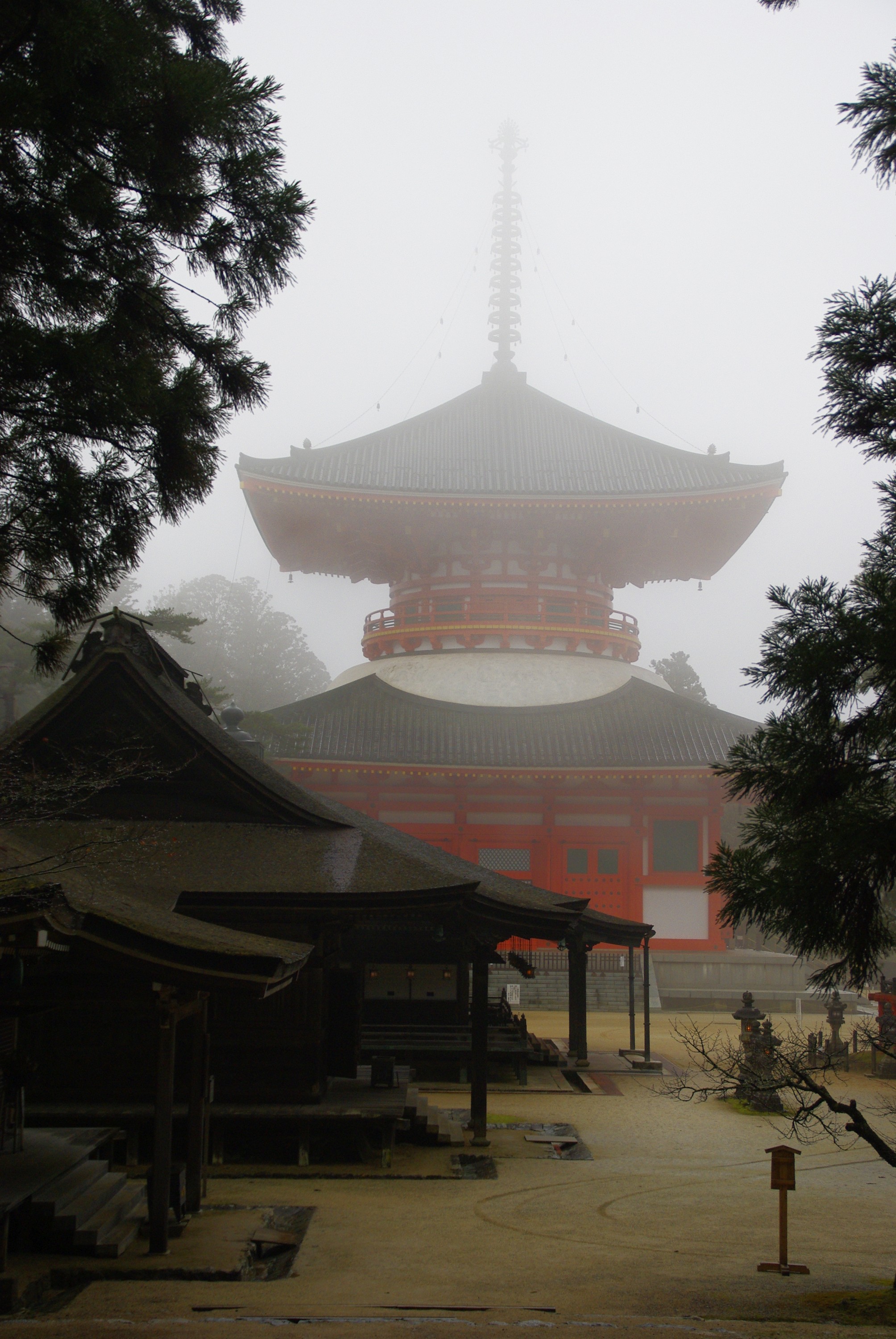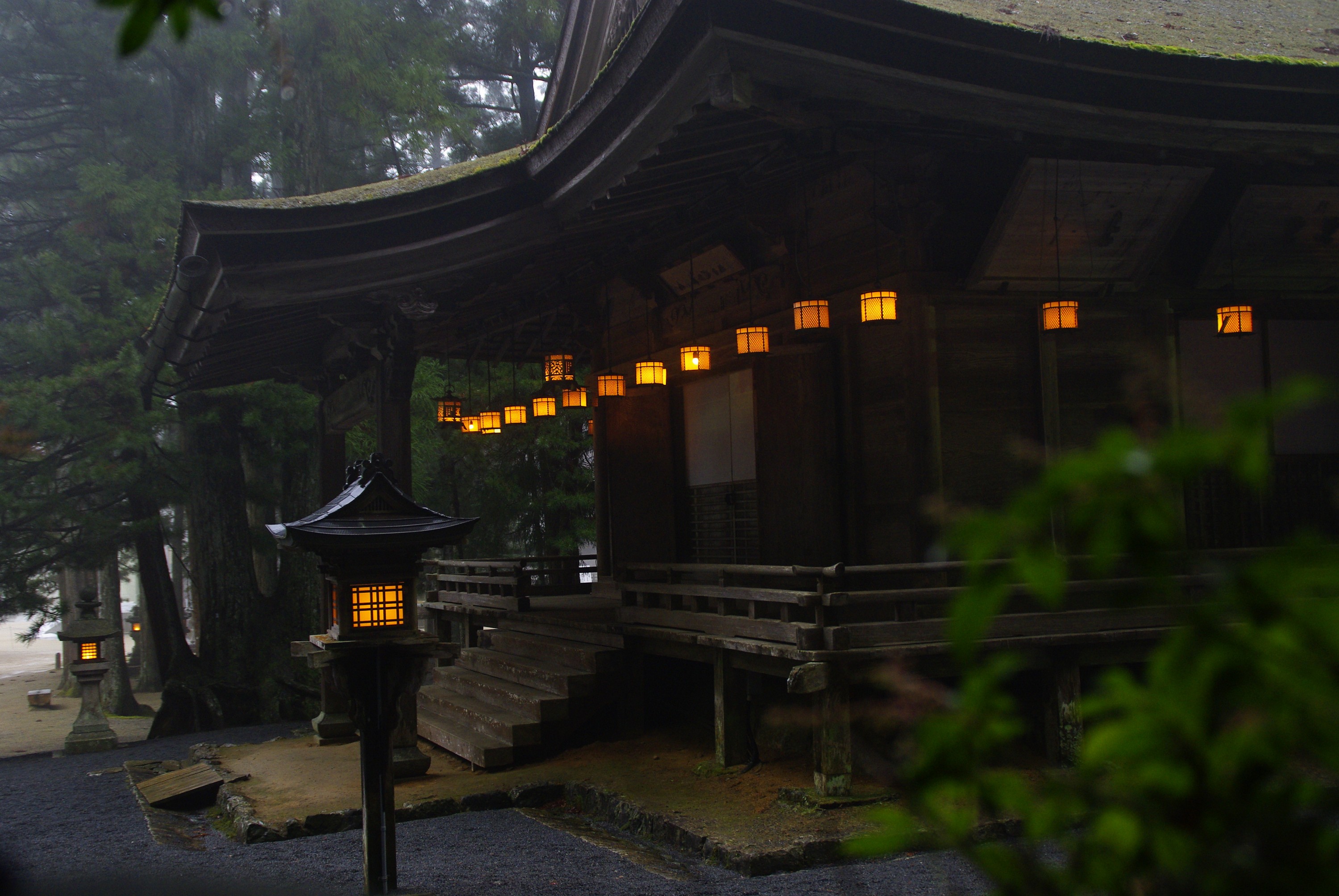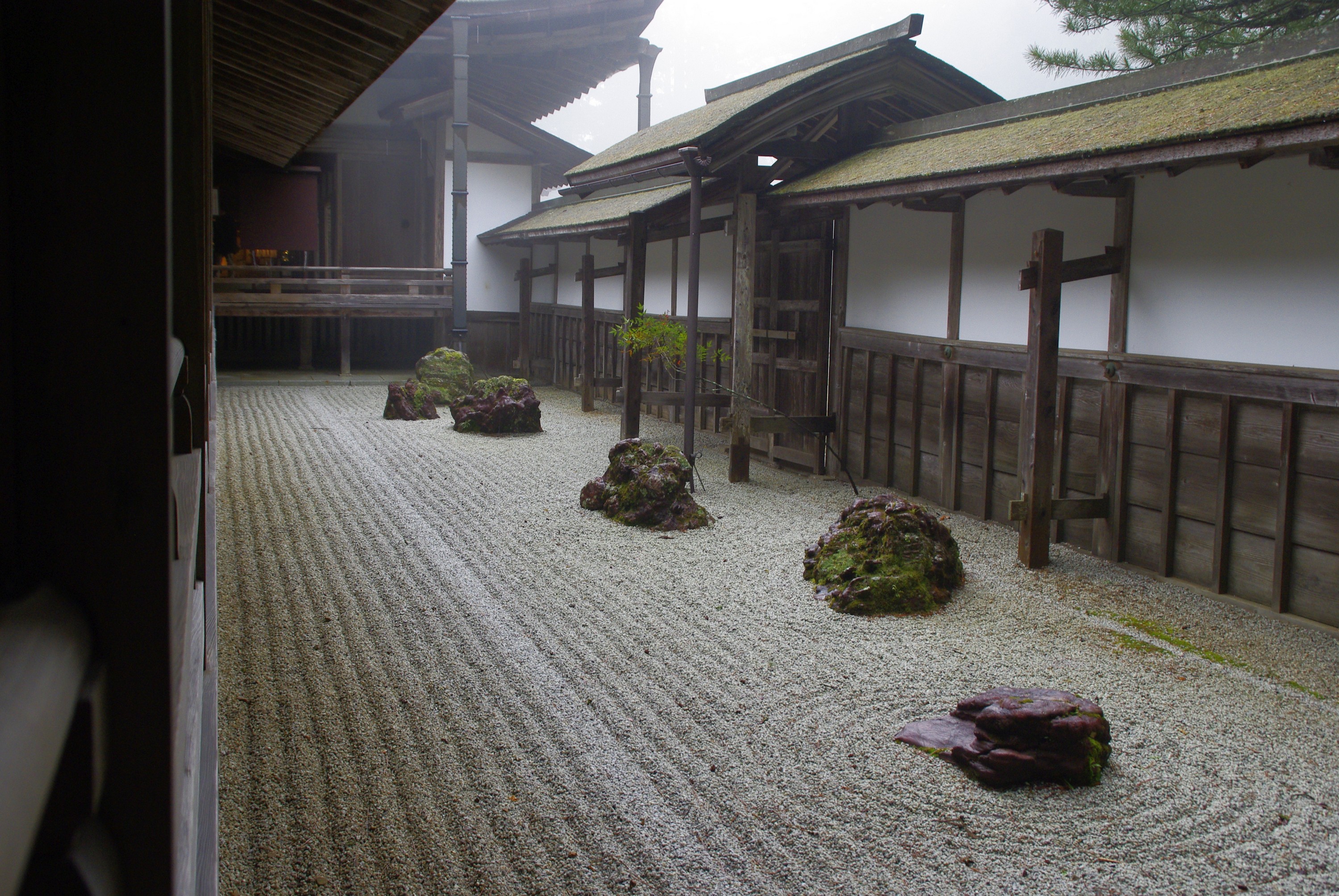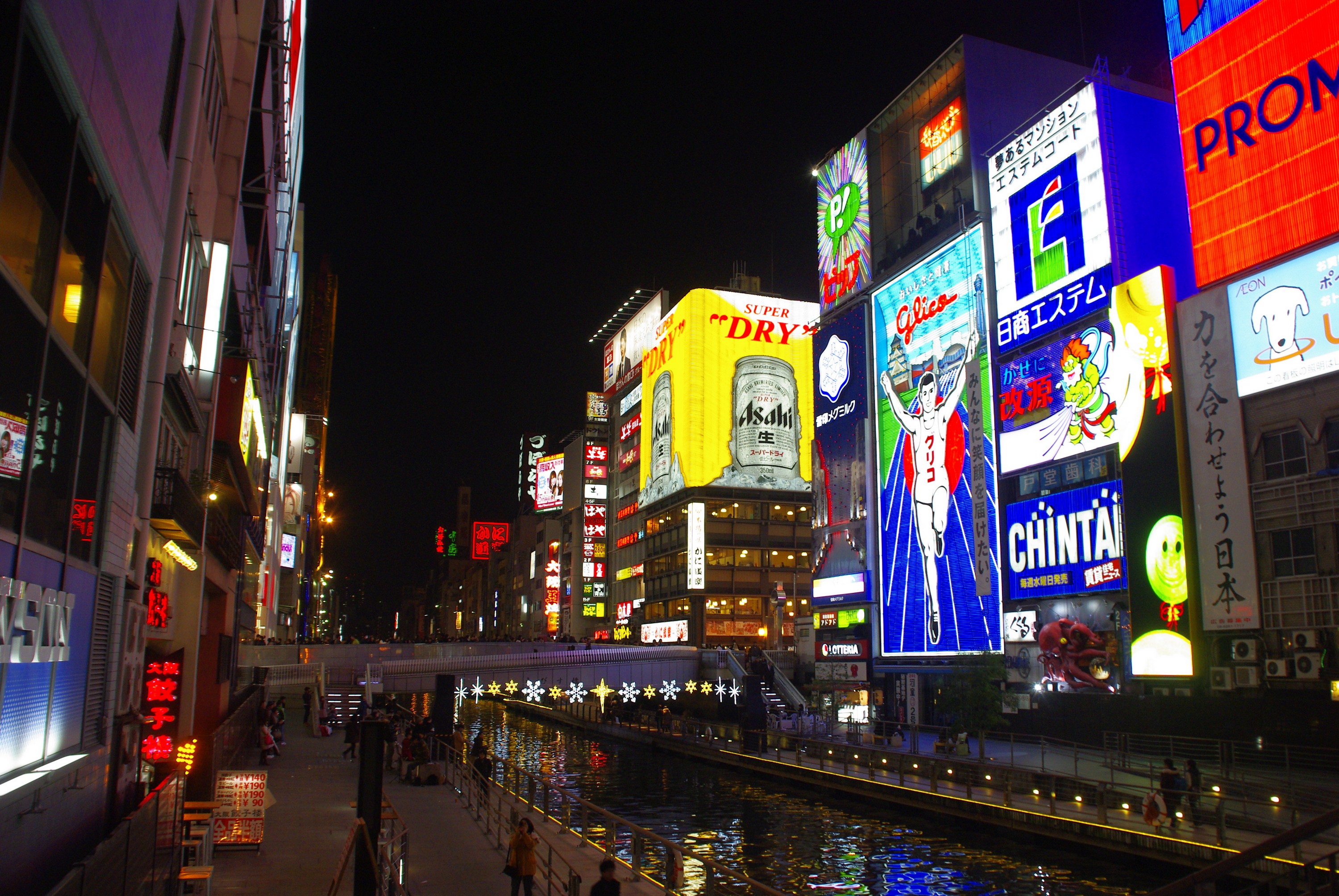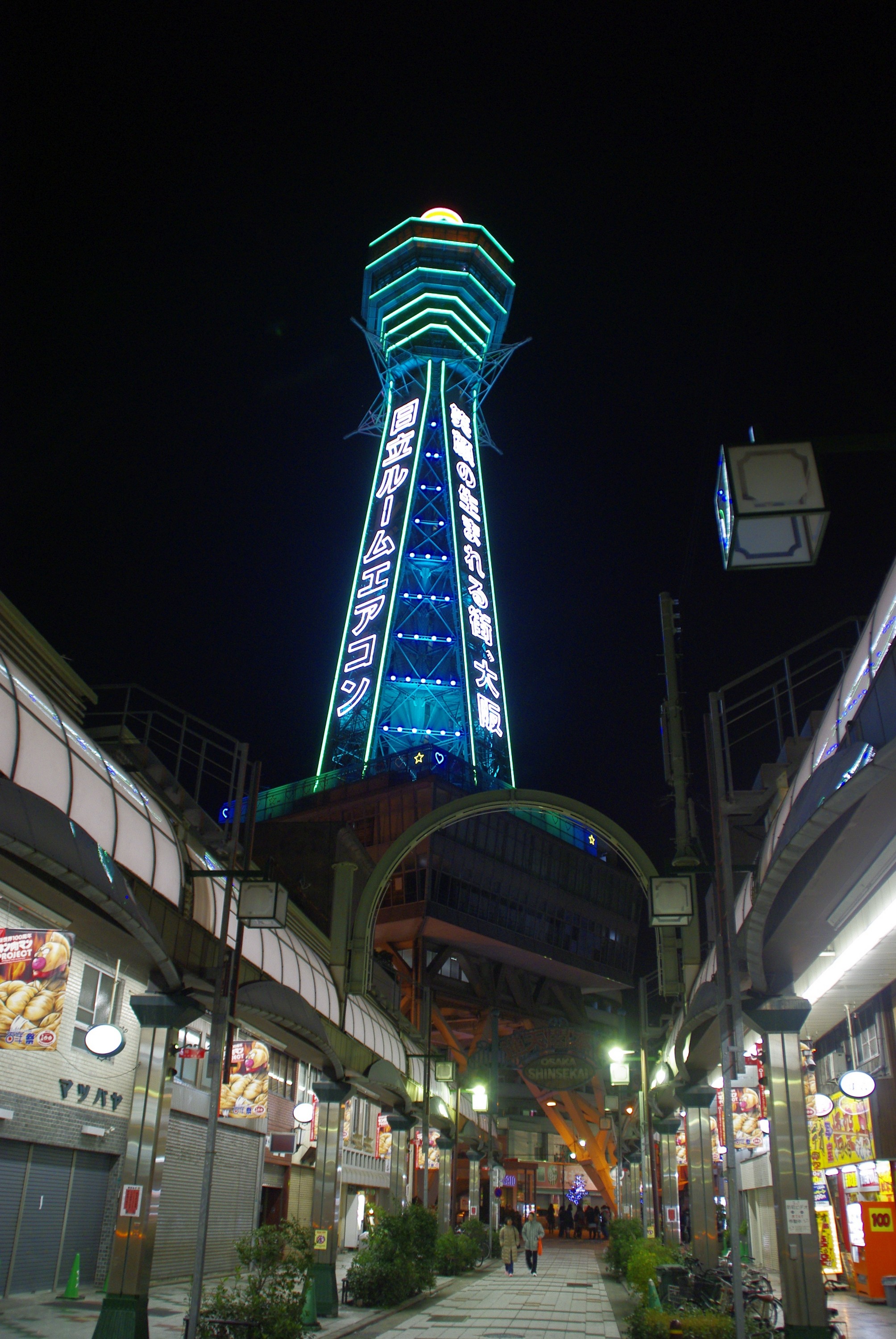It was snowing over night. Not much, but now there is some kind of winter feeling. First stop today is Kanazawa castle. It is not complete and a reproduction too. It is worth a visit. I enter the inner place thru the big and heavy gate. The castle wall is white with black wooden beams and roof tiles. With the snow, everything is black and white, but the sky, that is grey.
Kanazawa Castle
On the outher side of the castle lies the famous japanese garden Kenrokuen. It is one of the famous three. In summer it must be awesome. Even now in winter time the view is stunning. The central garden and the grass field. Like always they represent different landscapes. Even mountain regions with a river. It looks funny. All the branches of the trees are tied to ropes that are connected to a central pole. From distance they look like cones. I don’t know, why the do it. Maybe to influence the growth direction or to pretect the leave against the weigth of the snow.
I stop at the tea house. I order some green tea and rice cake (the fluffy stuff not the cracker) and enjoy the view from the padio into the garden. I could sit here for hours. Every position offers a unique perspective. It is cold and snowing again. This is how a winter holiday should be. Relaxing.
On the way to NishiCchaya I stop at the Noh theatre museum. I admire the mask and kimono. They even have a noh kimono to put on. This is something I love Japan for: They have many things to participate. Lucky that I am used to this type of cloths. Thanks to Kendo and Iaido. I don’t know how they can perform a full play with this stuff. The kimono really is heavy and it is hard to breath with the mask on. No I really have respect for the actors.
Garden
Nishi-Chaya is only a short street with a few old houses. They are in good condition. But I expected more. There is no resto, no souvenir shop. The search for Ninjadera is hard to find, but this is not the reason for its name. In this area are many tiny temples. I walk around a little bit. This area is a typical residential area. I walk around a little bit. Next stop is Nagamachi and old samurai houses area. Here you can shoot a samurai movie. The high garden walls are covered with bamboo mats.
I totally forgot about the Oyama shrine until I stood right in front of it. The gates is unique. It was designed in 1599 by a dutch architect. It is a mixture of japanese, chinese and european elements. OK, you don’t have to like it.
Now a brief stop at the famous fish market. Lobster for $160, 40″ long octopus tentacles of deep red color and so many more strange stuff. Surprising what is considered as eatable (and some of this stuff really is tasty). The smell is very faint and fresh. This is how fish should smell. Almost not at all. Here I am the same opinion like Automatix (Asterix). But, for lunch I go for caree in a resto next to the market.
Nishi-Chaya and Higashi-Chaya
Higashi-Chaya is definately worth the walk. It is like a small version of Gion. There are two streets with old tea houses. In ancient time Geishas were bookable all over this places. Two streets are not much, but it is a lot bigger than Nishi. It feels like entering an old part of Japan when I entered a tea house. Pictures are not allowed, but the couldn’t catch the feeling anyway. A guest room always is a set of two rooms: one for the guests and one for the geisha and the equipment.
On the way to the train station (have to take another picture of the wooden skulpture/gate) I discover a small shopping street and a temple with a nice mon. In one of the shops I buy a curtain for my kamidana. But I am not able to find a tanzen (kind of haori for the winter) in my size. Neither at the train station. There is also no evidence of an Oosaka style haramaki, that I am looking for too.
Suddenly snow is falling. No. Arare. Like yesterday the streets are white within a second. This would be a perfect set up for pictures in Higashi-chaya or Nagamachi. But I am too far away. A minute later the sprinkler on the streets wash away the scenery. On the pedestrian the arare is 3cm high. I enjoy this fading view and moment.
Kanazawa
Back at the fish market I find a tiny izakaya in the basement. I order kariage, tine wooden sticks with breaded fish, meat, vegetable and other „stuff“. Here this days ends in a comfortable atmosphere. In the Ryokan a short visit to the onsen and then I fall into the futon.

